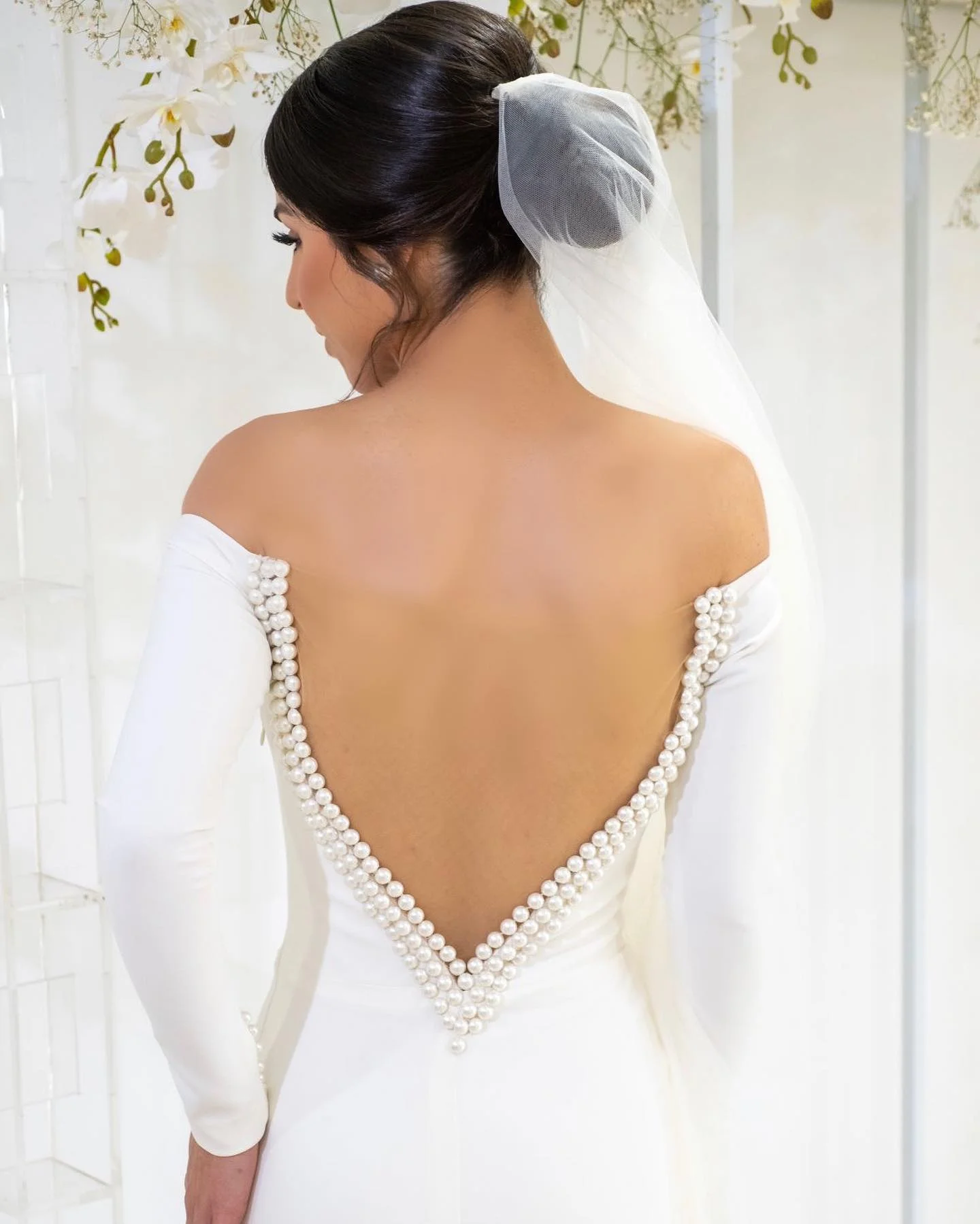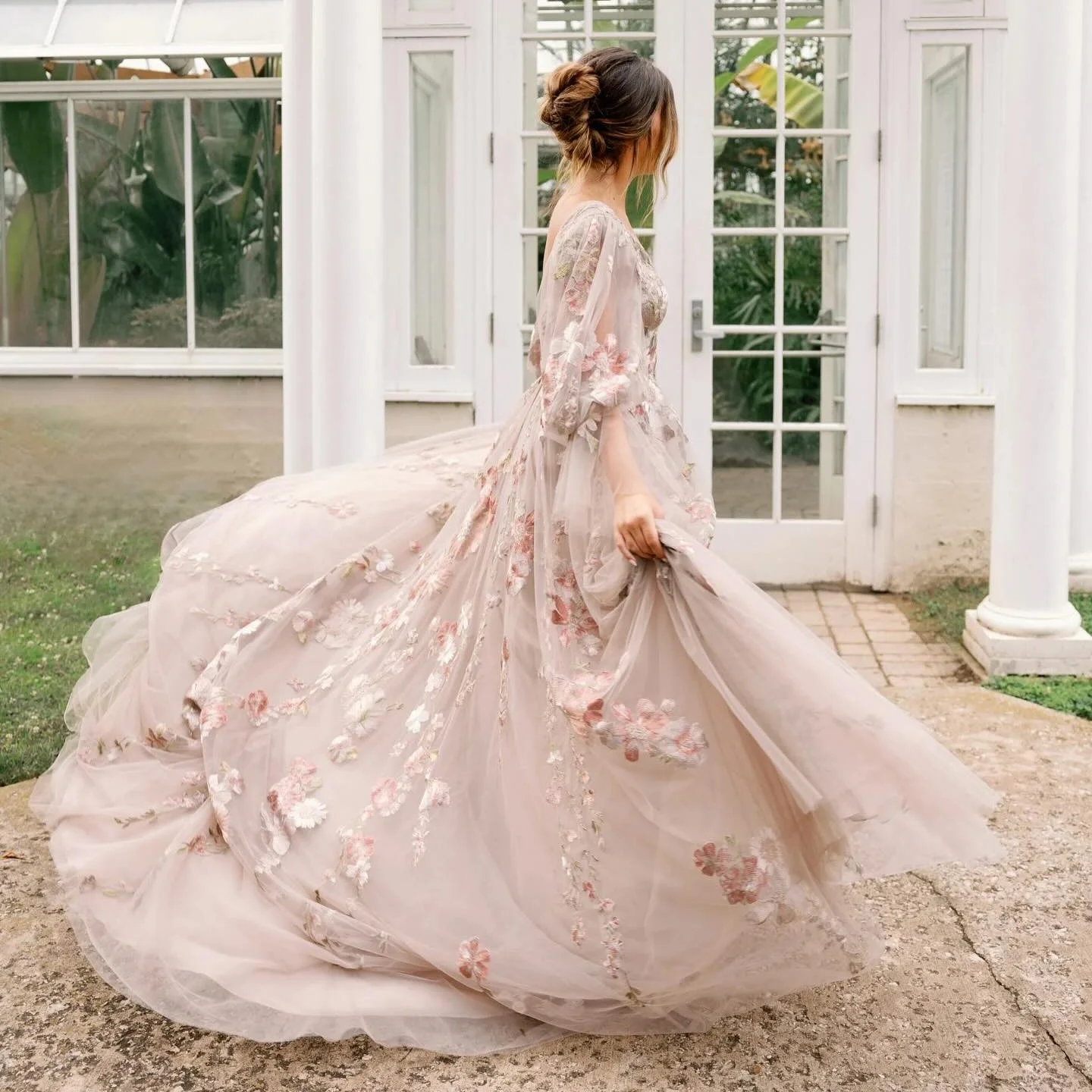How to choose the perfect wedding dress
Selecting a wedding gown is the wardrobe decision of a lifetime, so we compiled the ultimate wedding dress shopping guide, and asked two popular Australian wedding dress designers to share their tips, tricks and advice for soon-to-be brides looking for a dream dress.
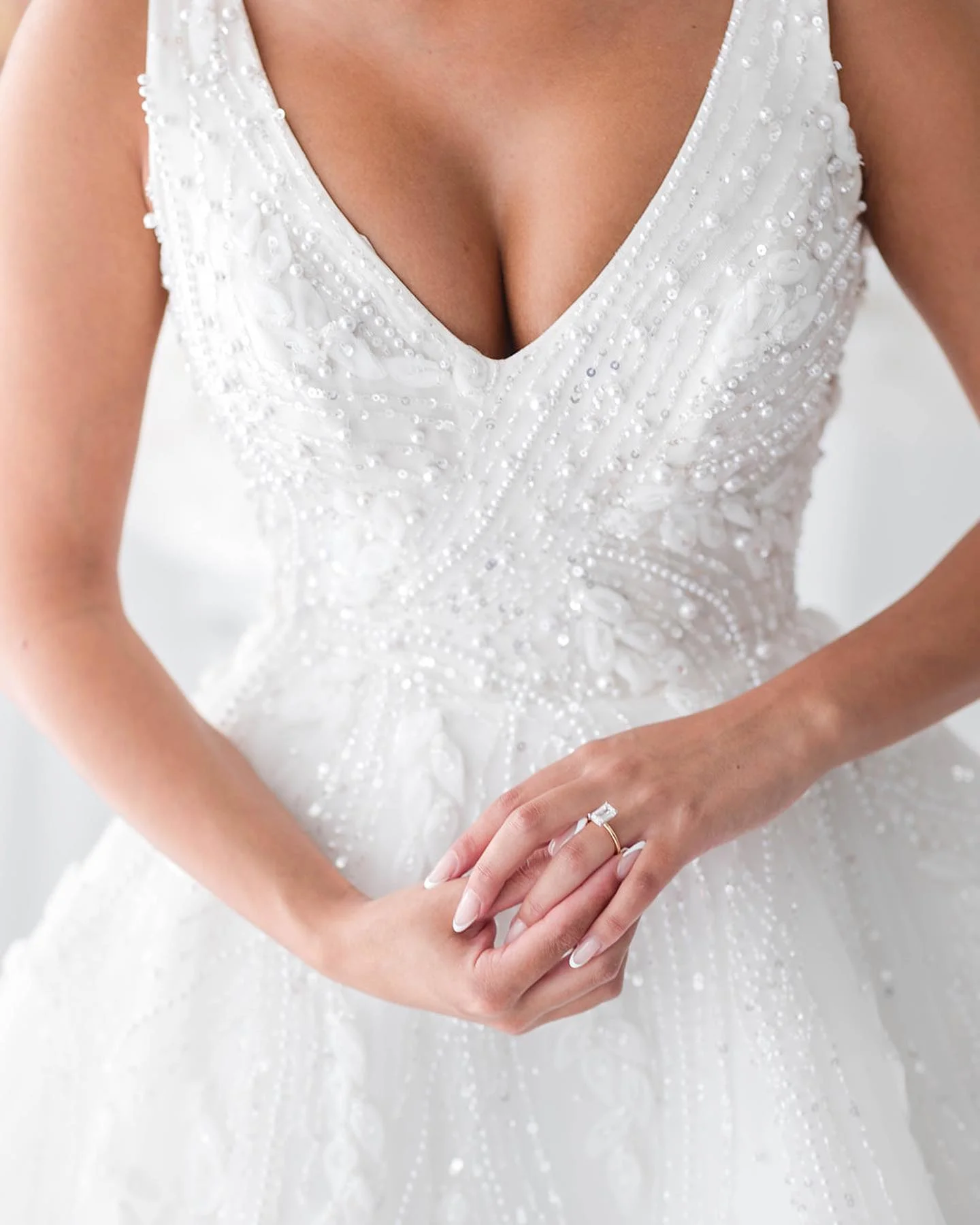
Emoda Couture | @nycfilms_and_photography
Once the question’s been popped, the engagement ring is slipped on and the happy news has been celebrated, finding a wedding dress is usually next on a bride’s to-do list and before you know it terms like A-line, tulle, beading, couture, fit-and-flare, bodice, sheath, organza and silhouette will be rolling off your lips. There's inevitable excitement, but at ABIA we understand that choosing a wedding dress can also be a complex process. So, whether you’ve got eyes for a one-of-a-kind couture design, seek a simple off-the-rack style or haven’t worked out where to begin searching for a gown just yet, Tanya Bywater unveils this comprehensive wedding dress shopping guide, tailored to suit every wedding couple and bride.
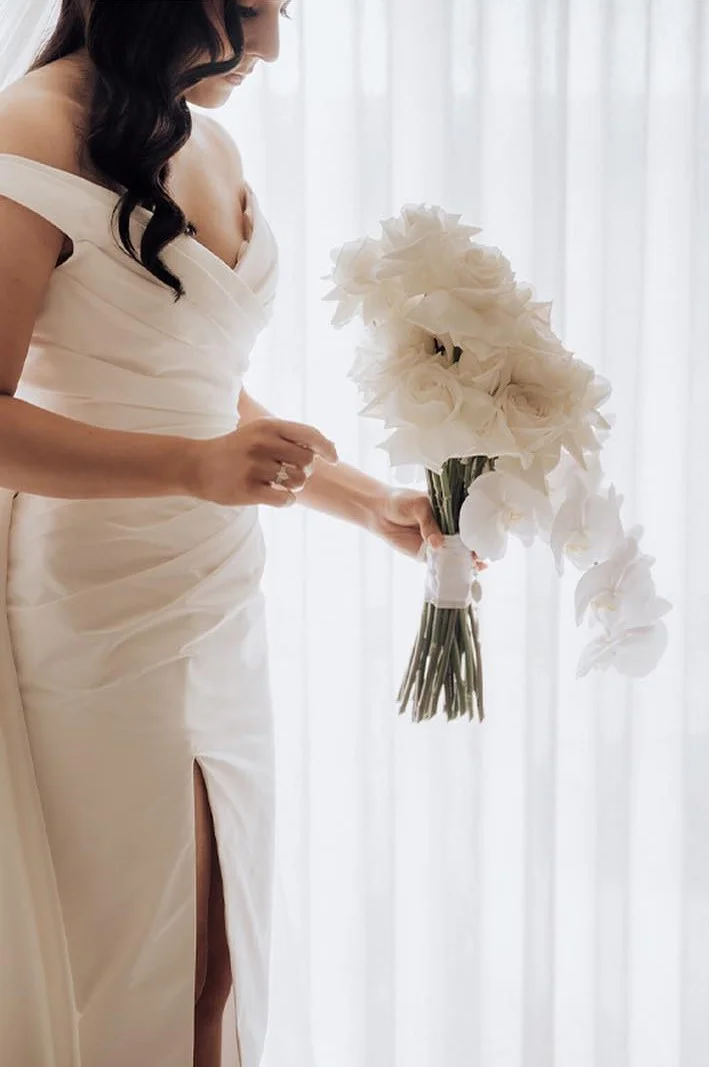
Alexis George Couture | @bcapturedbykyluu
Where to start looking for a wedding dress
We all know someone who’s had their dream wedding dress in mind since the age of five but, for many of us, finding the perfect gown can seem like the quintessential search for a needle in a haystack. This delightful decision should be a fabulous and fun one though, so avoid overwhelm and opt for pleasure over pressure by simplifying your selection criteria early on.
A process of elimination, that takes into account your wedding venue, theme, personal style, budget and timeline, and rules out anything that doesn’t fit, will concentrate your choices while still leaving you with an abundance of potential wedding outfits.
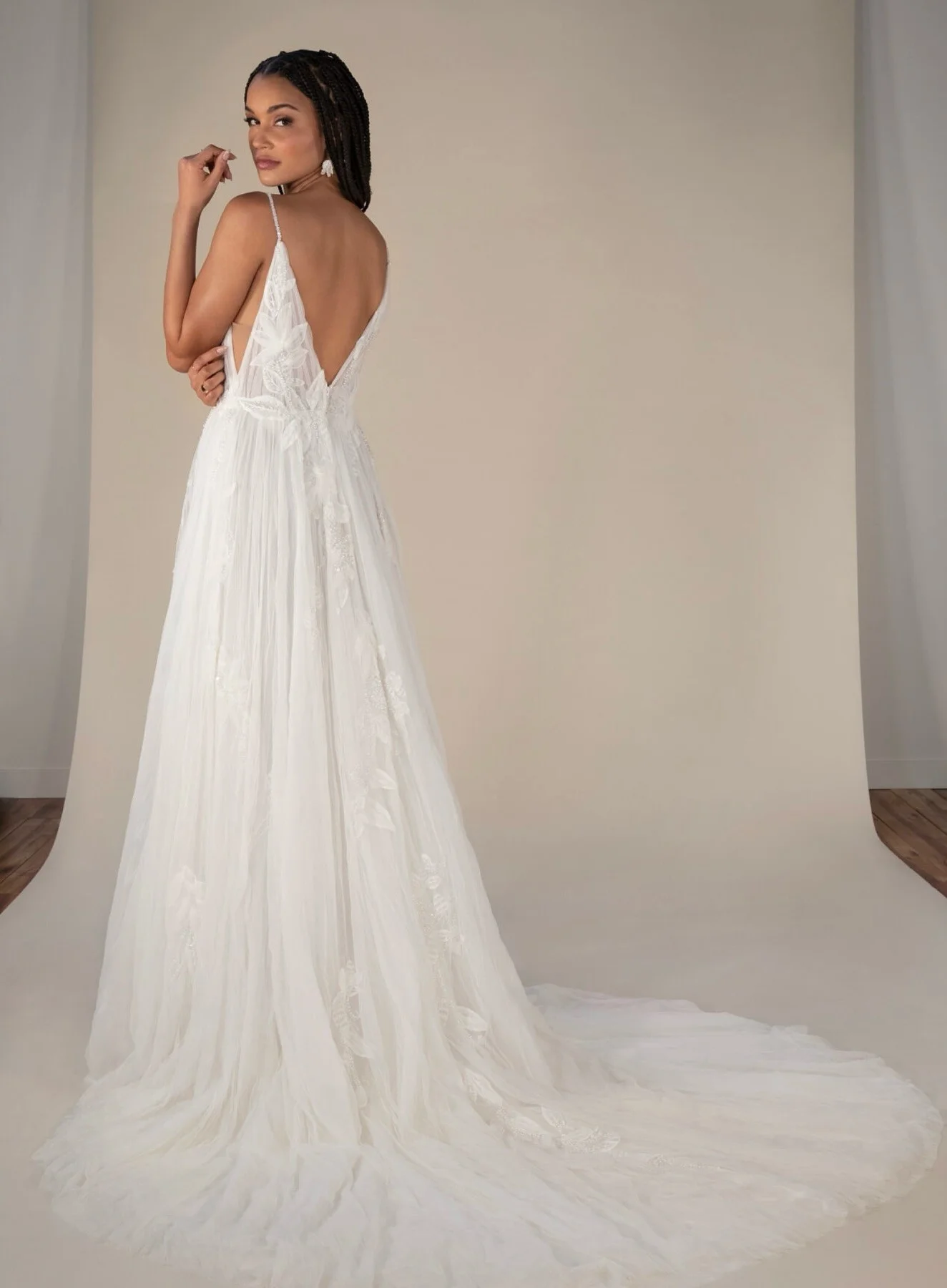
Etre Marie Bridal Boutique | Design @allwhowander | Style Georgi
Weigh up your wedding venue and theme
Whether you’re planning to marry on a beach, in a traditional church, mosque or temple setting or somewhere in between, your choice of venue will likely dictate your wedding’s dress code to a degree. So too will the location’s weather, and any specific wedding theme, so use these parameters to help guide your dress decision making.
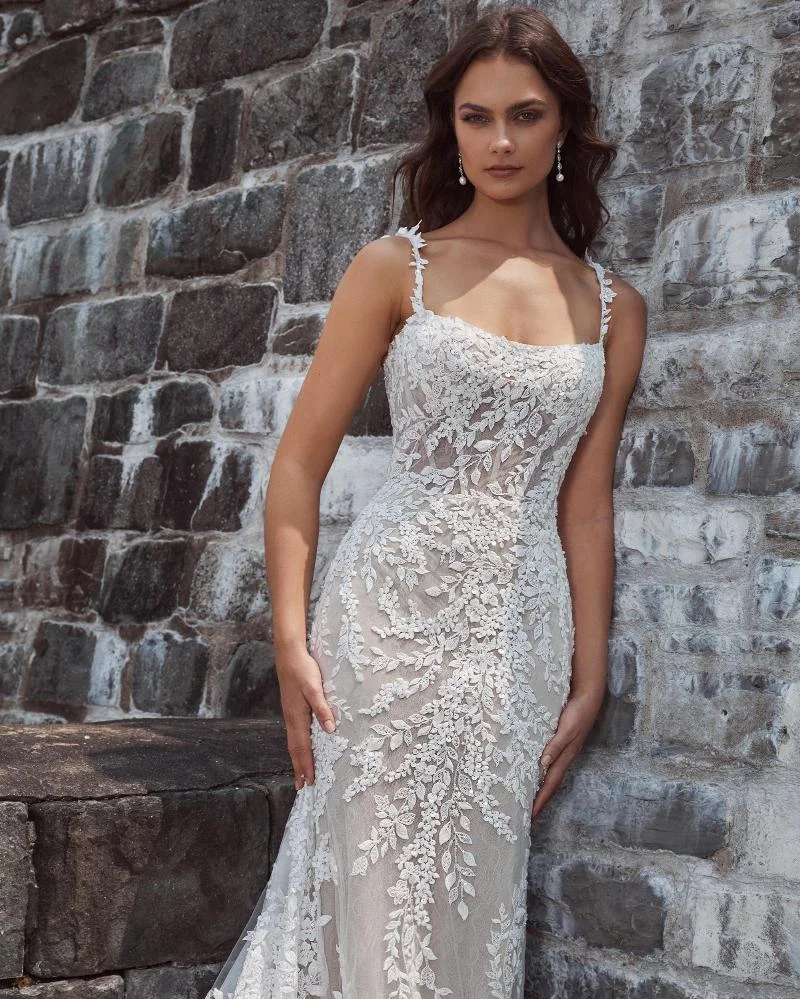
Brides Of Beecroft | Design @callablanchedress
Pinpoint your personal style
“One of the most important things I tell brides is that their wedding dress should reflect who they are. Even if a big, tulle princess gown looks beautiful, it won’t feel right if it doesn’t suit their personality,” says Adelaide wedding dress designer George Georgiou of Alexis George.
Similarly, as some gown styles tend to flatter particular body shapes and features, you may want to play with wedding dress designs, or designers, that highlight and complement your personal beauty and uniqueness.
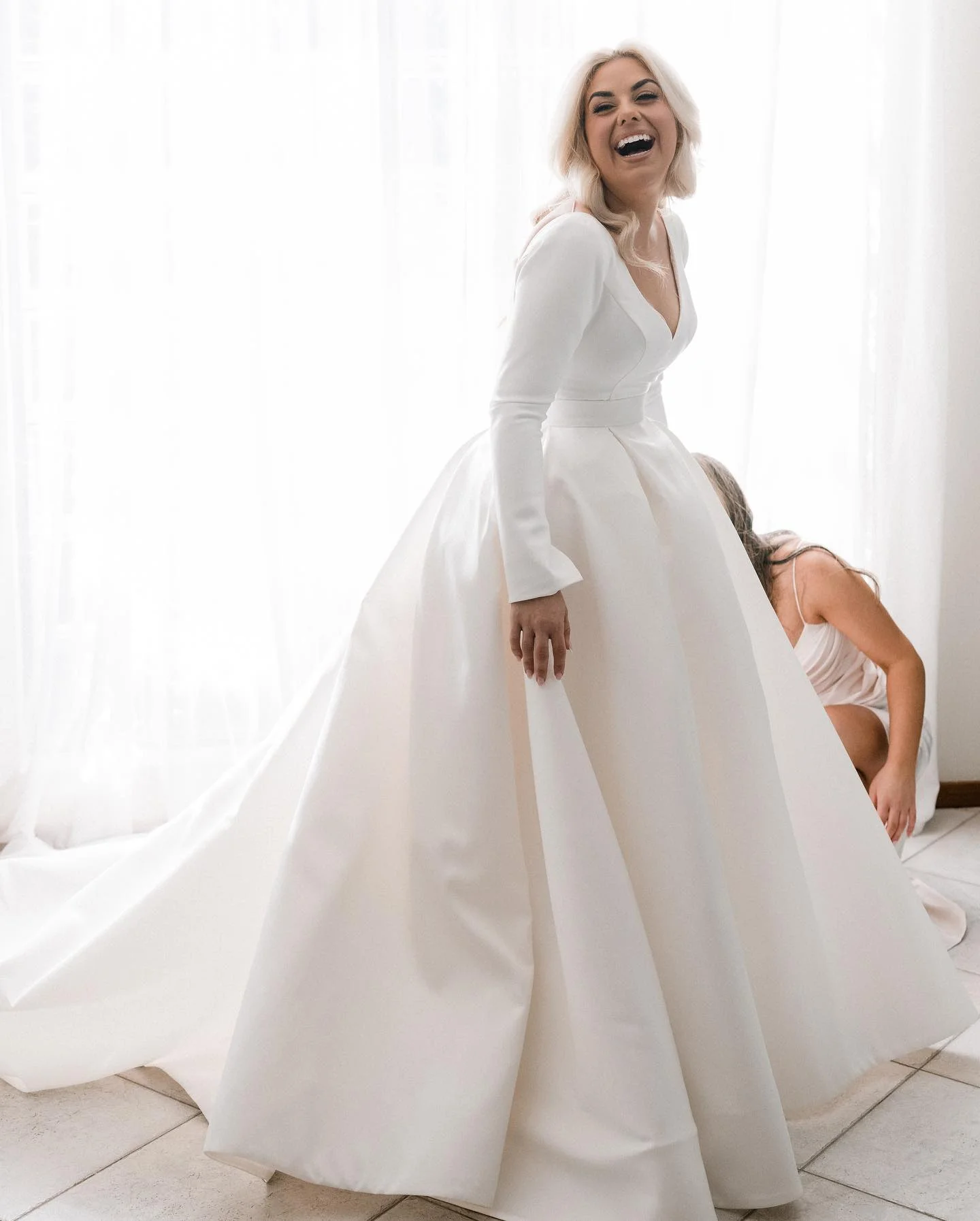
Emoda Couture |@siempreweddings
Balance you budget
The easiest way to avoid blowing your budget is to remove temptation, so set yourself a realistic wedding dress budget from the beginning and resist the urge to try on anything with a price-tag that exceeds it.
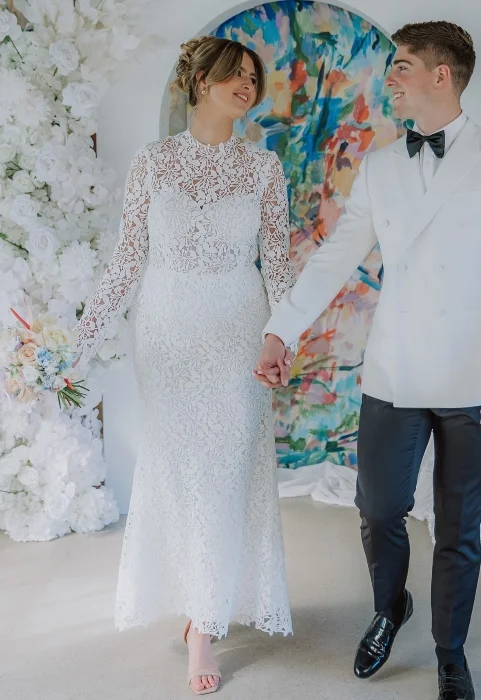
Final Touch Bridal | @underatreehouse
Think through your timeline
Bespoke designs and custom orders take time, as do alterations, so think practically and take timing into account as part of your wedding dress shopping strategy.

Rhonda Hemmingway Couture | @wills.weddings
Hit the shops
Once you have a clearer idea of your requirements, search out specialist wedding dress shops and designers that offer a range of gowns within your budget and style guidelines. You’ll find wedding dress boutiques near you listed within the ABIA Directory, some even catering to niche styles and the likes of petite and plus-sizes.
Many dresses will look entirely different on the rack, so visiting a physical store will give you the chance to experiment with styles and determine what looks and feels fantastic.
“Always try on as many wedding dresses as you can because your body may suit a dress that you never thought you would have previously picked,” suggests Sydney wedding dress designer Maria Fellas of Emoda Couture.
You might not find your dream gown first try, but you’ll soon get a sense of the silhouettes, necklines, sleeve-styles, back designs, embellishments, colour tones and features that make you smile.
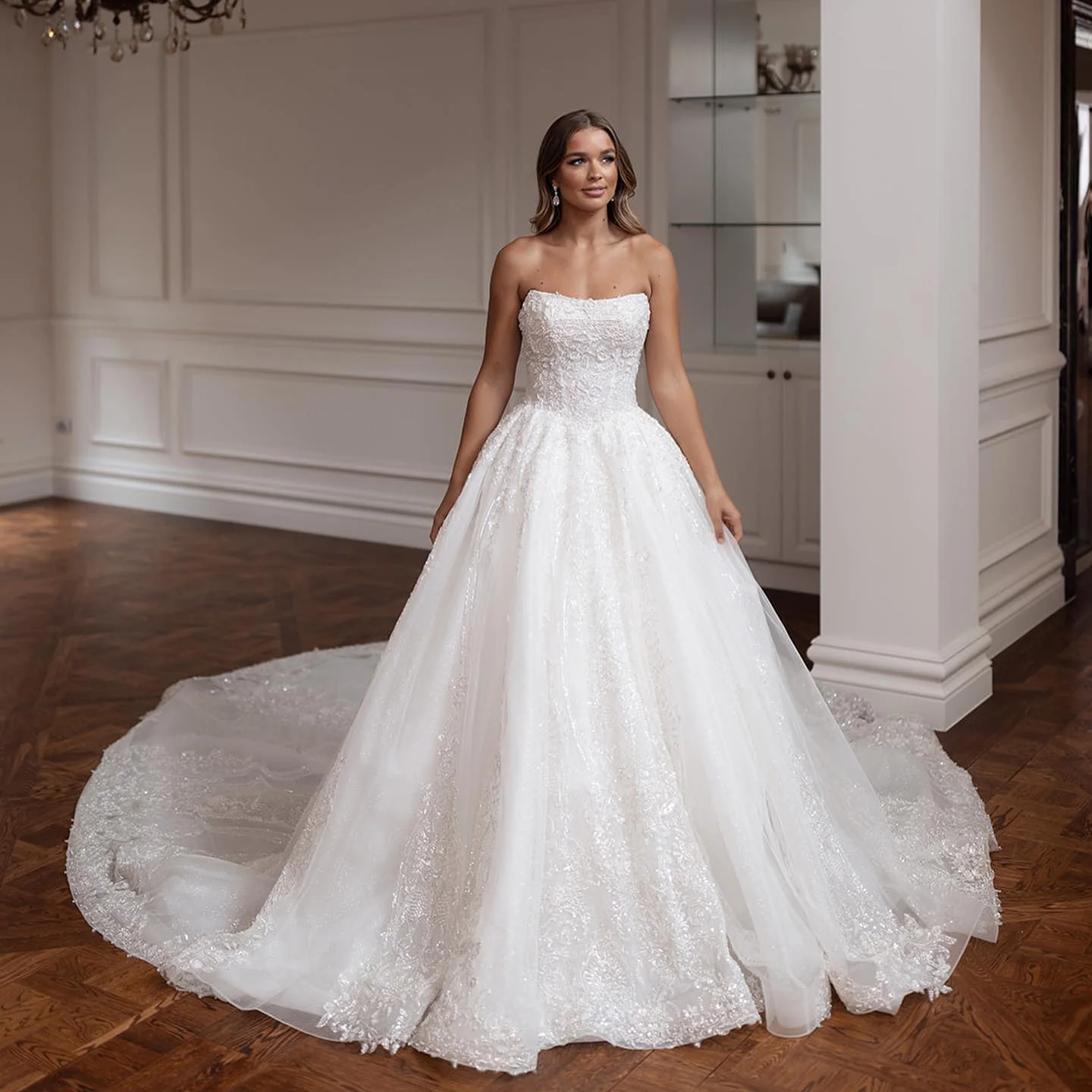
Belle et Blanc | Style Verona
What to consider when choosing a wedding gown or designing a wedding dress
On your wedding day you’ll rightly be the centre of attention, and will probably be photographed more than ever before, so choosing a dress that you’ll feel confident and comfortable in is vitally important.
Consider design ideas you definitely do, and don’t, like. Establish your stance on embellishments like beading and lace, and think through features you want to highlight — together with any you might prefer to downplay — then mention these to dress designers and bridal store attendants who should be able to offer suggestions and advice.
Pay attention to how a garment will look from the front, back and sides and take into account each of these structural elements and design features to find the combination that makes you shine.
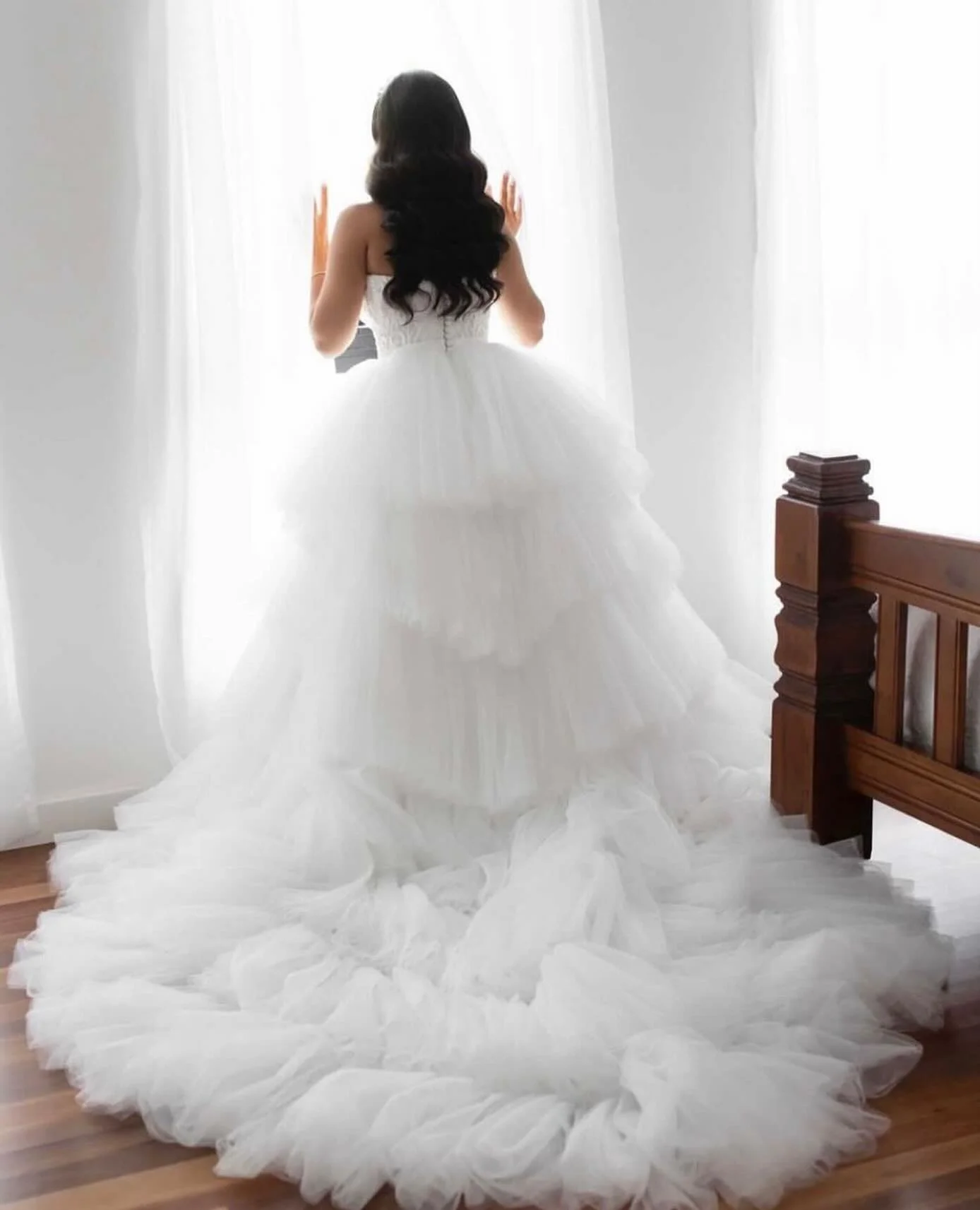
Personalised Weddings Couture | @emiliobphotography
Wedding dress silhouettes and shapes
Establishing a gown’s skirt shape, or silhouette, is where many wedding dress designers begin.
“The shape or silhouette of the skirt is most important as it defines the feel of the whole look. Whether it has sleeves, straps or other details, the skirt shape is always the first thing to consider,” says George.
He goes on to explain that, while there are endless variations, A-line, straight and mermaid are essentially the three main skirt shapes.
A-line styles
The A-line dress style is fitted to the waist and spreads into a fuller skirt. This outline incorporates the Ballgown design — which dramatically billows out from a defined waist-line — and the Princess Line style — which features panels tailored to curve over the waistline and into the skirt without obvious separation.
Maria points out that these dresses can particularly flatter women with curvier hips and legs, by gliding over these areas and snatching-in and accentuating the waist.
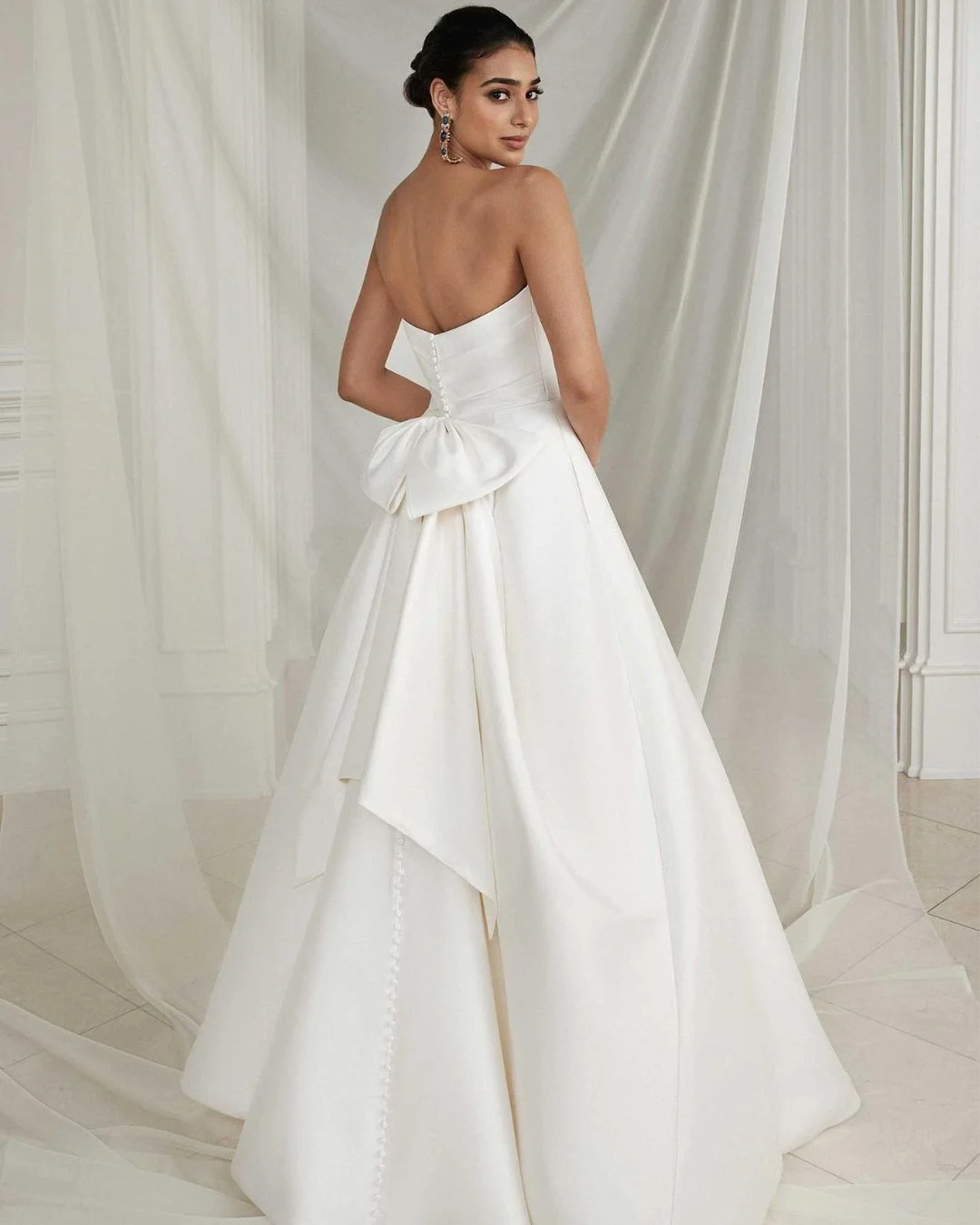
Brides Of Beecroft | Design @justinalexander
Straight styles
Ranging from Sheath to Slinky, Slip and Column dress designs, straight-skirted wedding dress styles tend to follow the body’s outline and, according to Maria, are popular choices for brides with slim-lined, tall or petite frames.
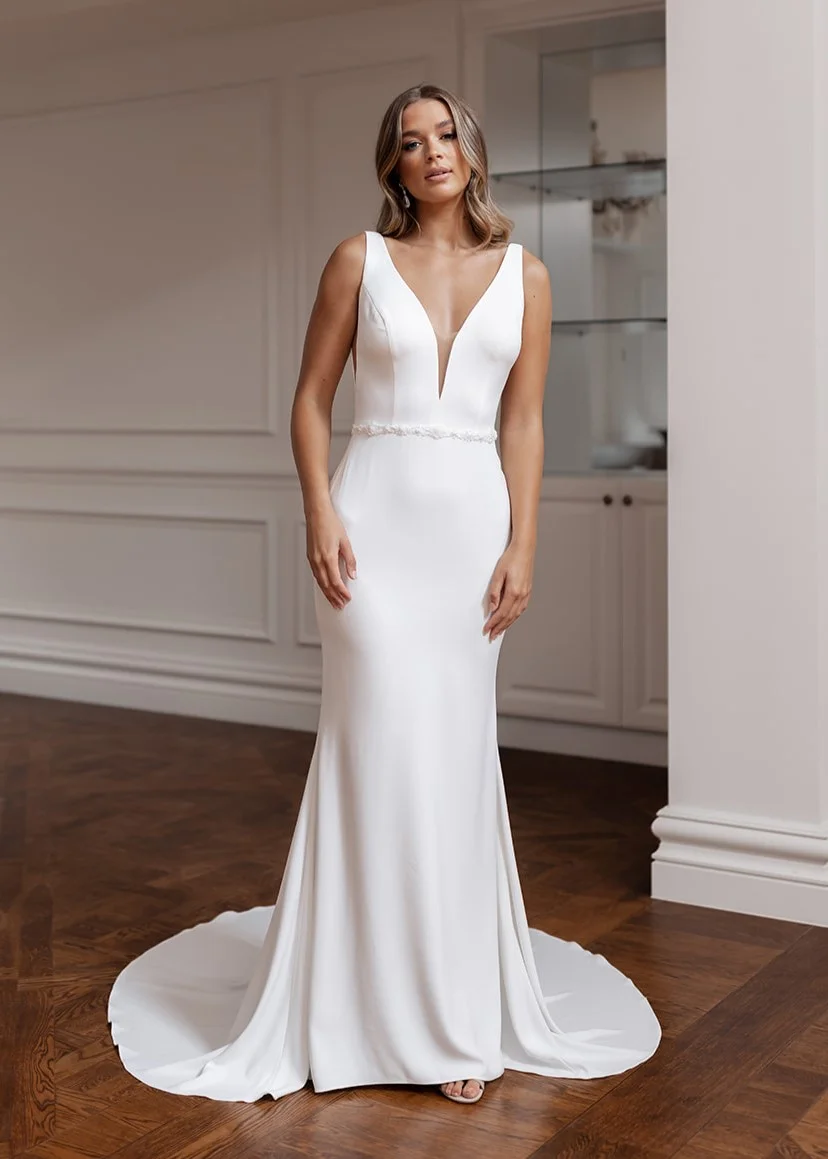
Belle et Blanc | Style Camilla
Mermaid styles
Varying in form from the classic Fishtail to more graduated Fit-and-Flare dress styles, these gowns typically fit closely to below the waistline before fanning out, and can smooth or accentuate curves depending on the specific cut of the design.
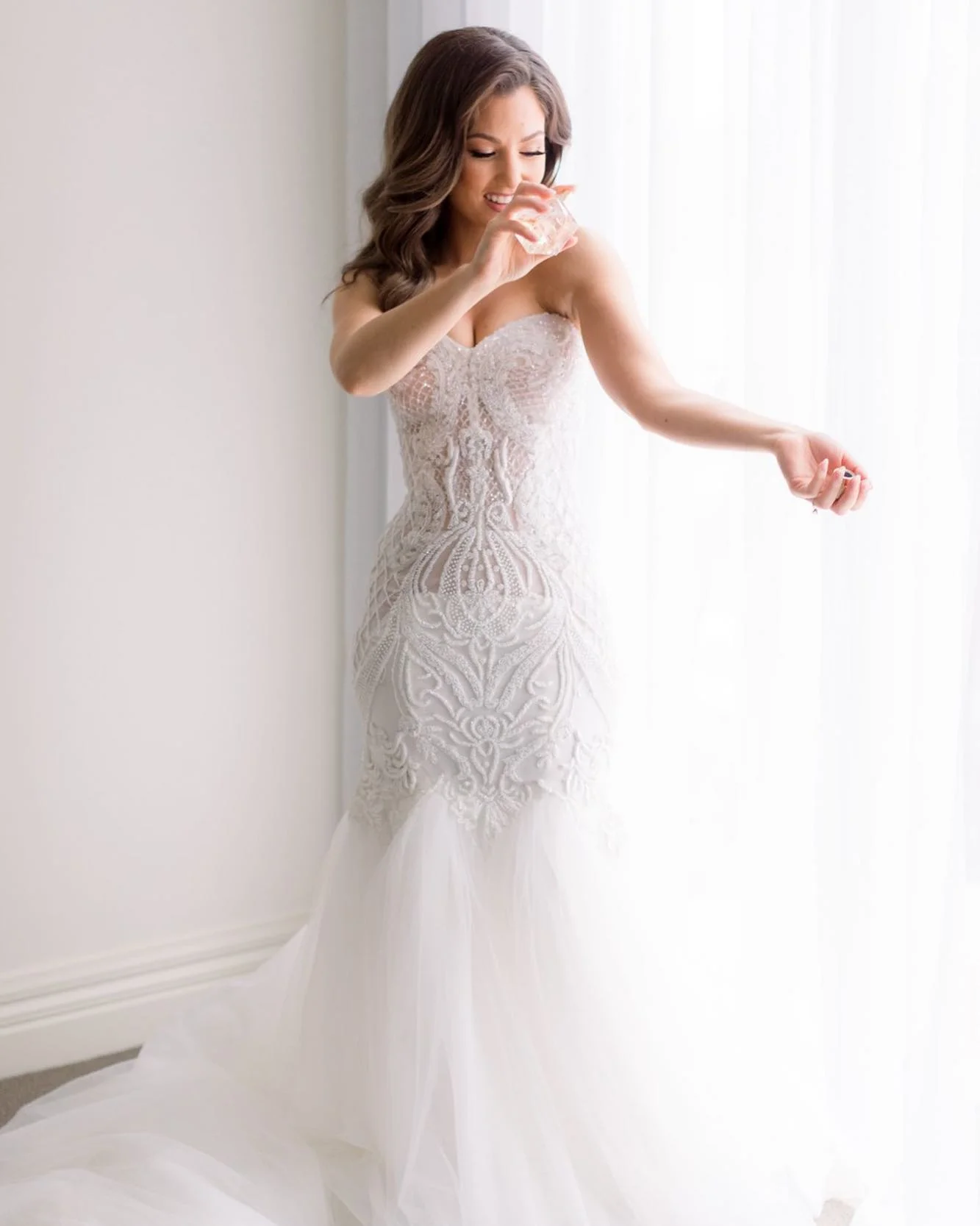
Romeo Bastone Couture | @loversnarrative
Popular wedding dress necklines
Potentially the most-photographed element of a wedding dress, a gown’s neckline is a defining feature of any design. Not only does it provide interest, the neckline frames the face, can add to the illusion of torso length, and can be cleverly styled to minimise or enhance the bust area as desired.
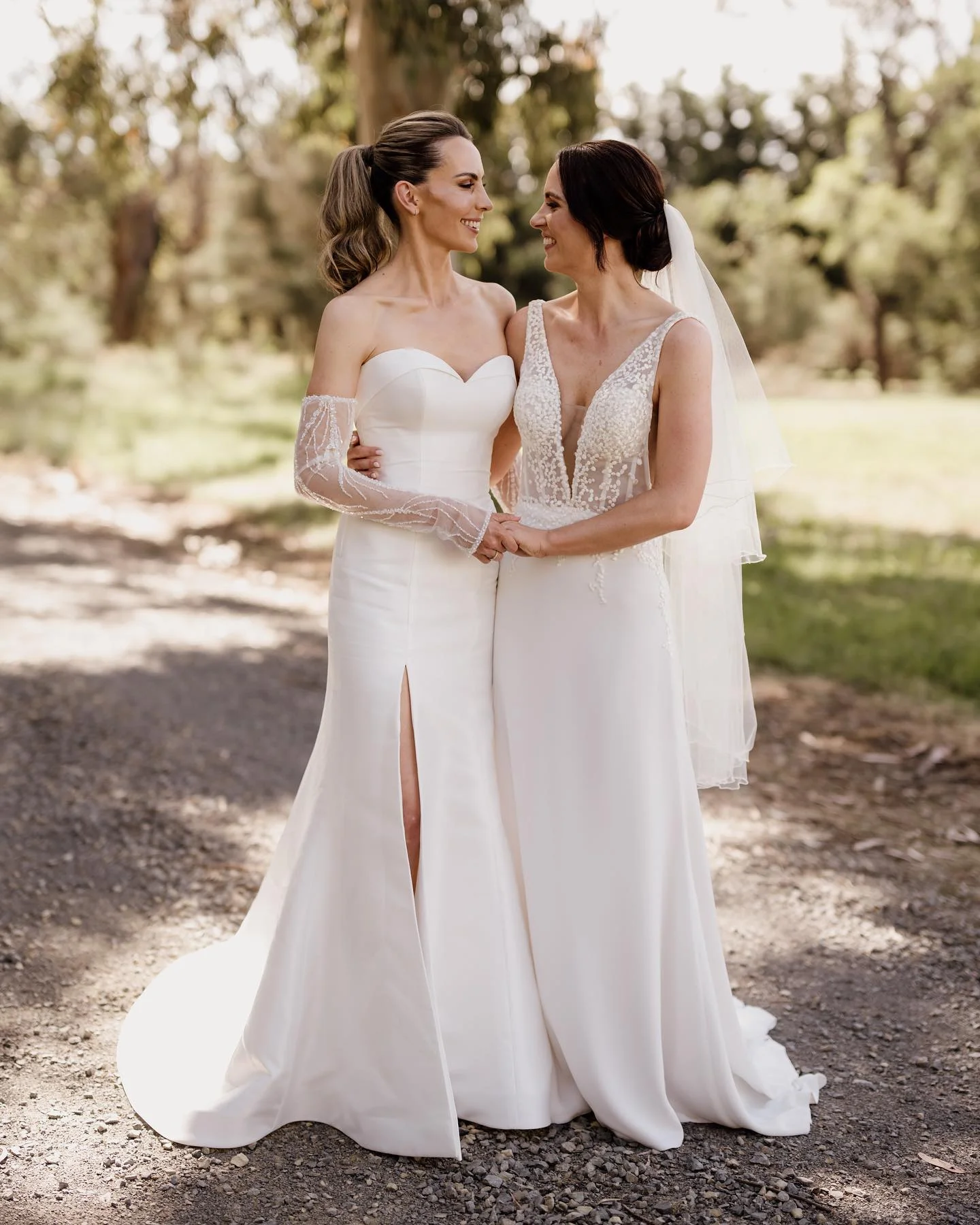
Brides Of Armadale | @tahneejadephoto
Straight neckline
As the name implies, this neckline extends straight across the chest, and can be applied to strappy, sleeved or strapless gown styles to achieve a modern, clean aesthetic that highlights the collarbones and décolletage area.
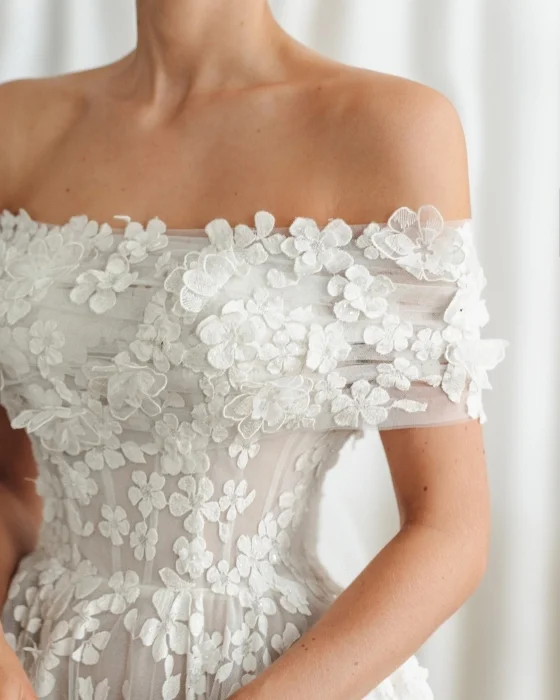
Sweetheart neckline
Echoing the curves of a heart-shape, this dipped neckline also accentuates the collarbone area, creating a softer line and slightly-lengthening effect. Maria often suggests a sweetheart neckline for brides seeking the illusion of a smaller chest.
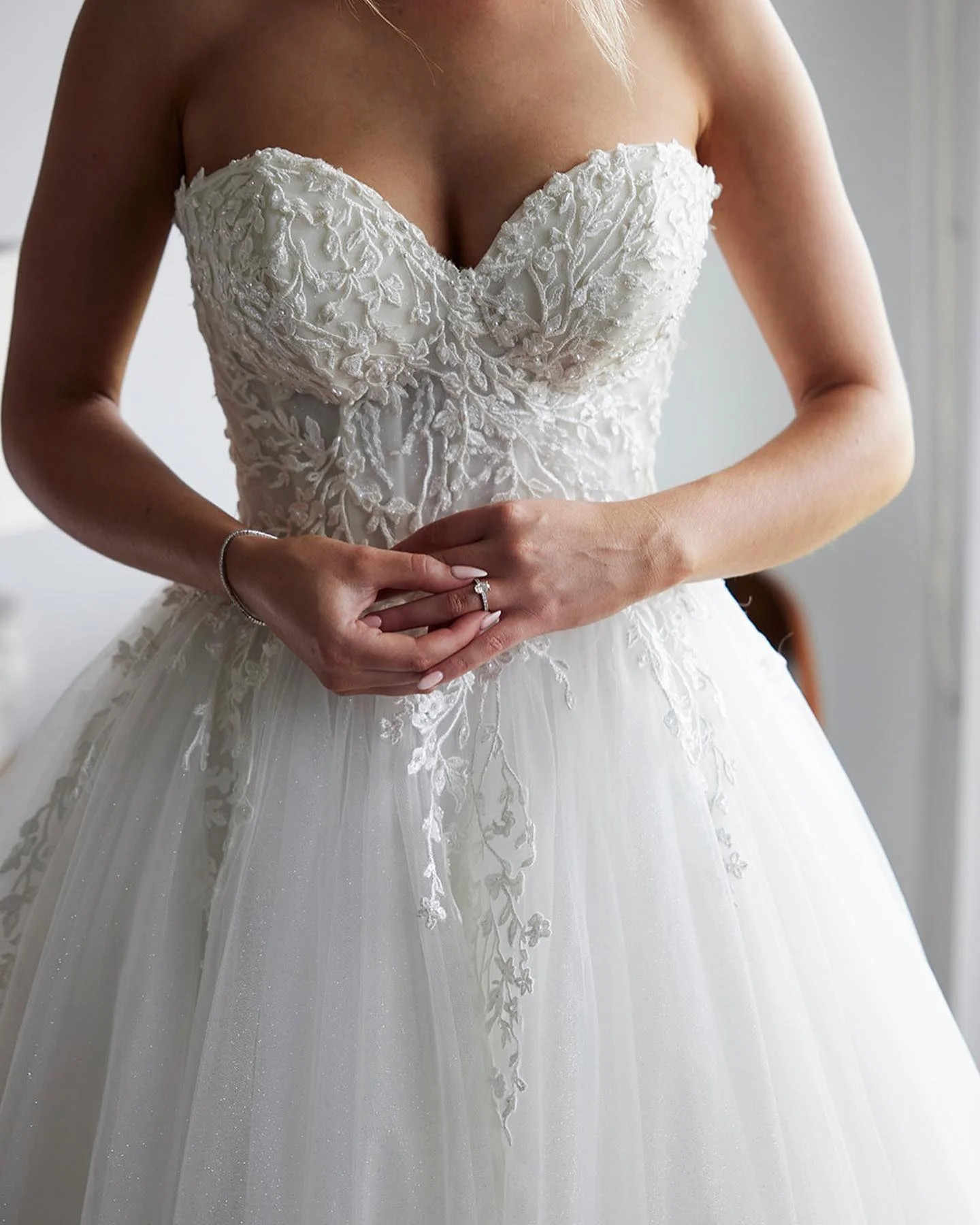
Brides Of Armadale | @louloumemphisphotography
V-neck
Another of Maria’s favourite styles for those with heavier chests, the classic V-shape of this neckline can create an elongating effect.
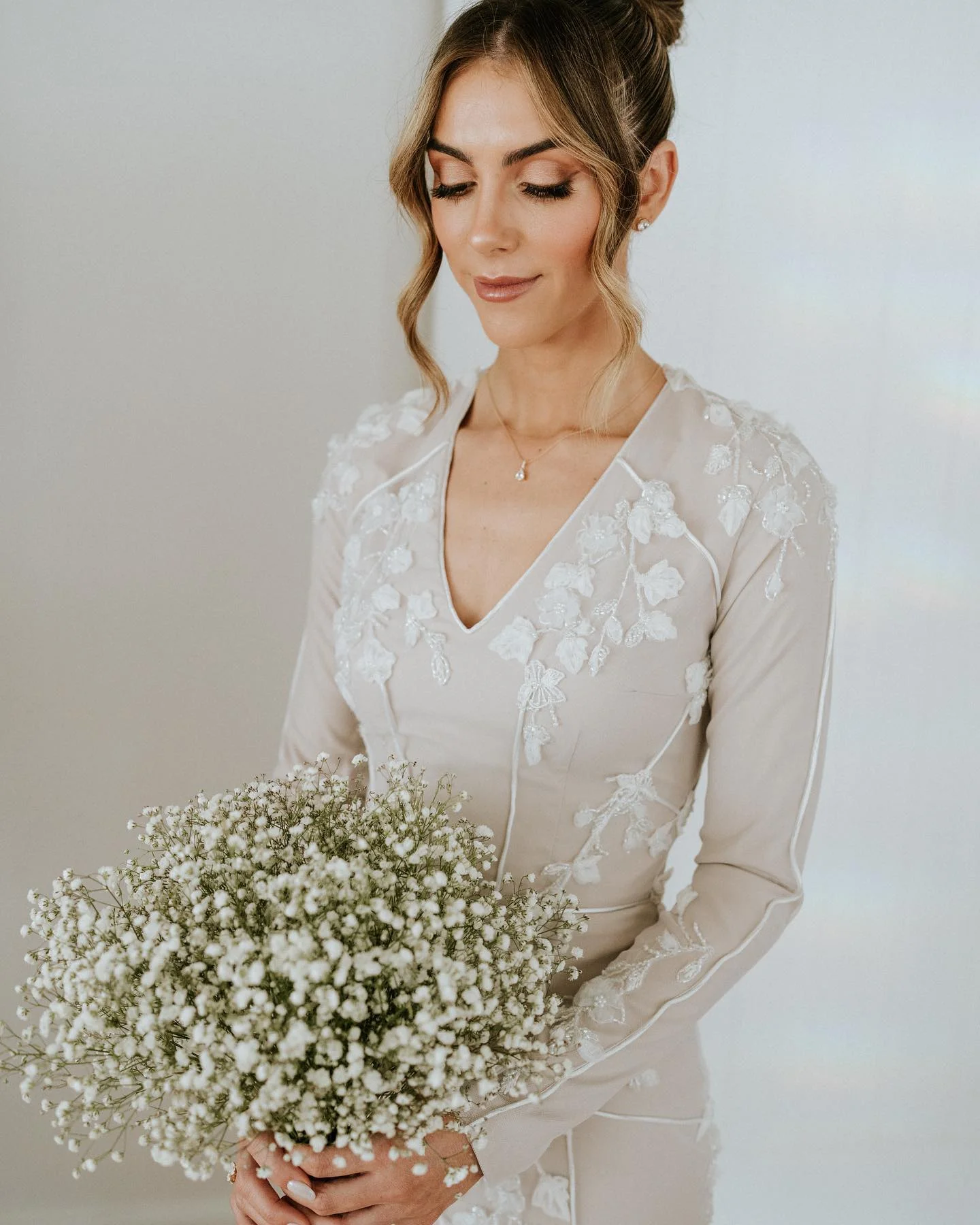
Emoda Couture |@alanataylorphotography
Scoop neckline
Usually combined with straps or sleeves, the deeply-curved arc of this neckline flatters most body types by accentuating the collarbones and appearing to lengthen the neck.
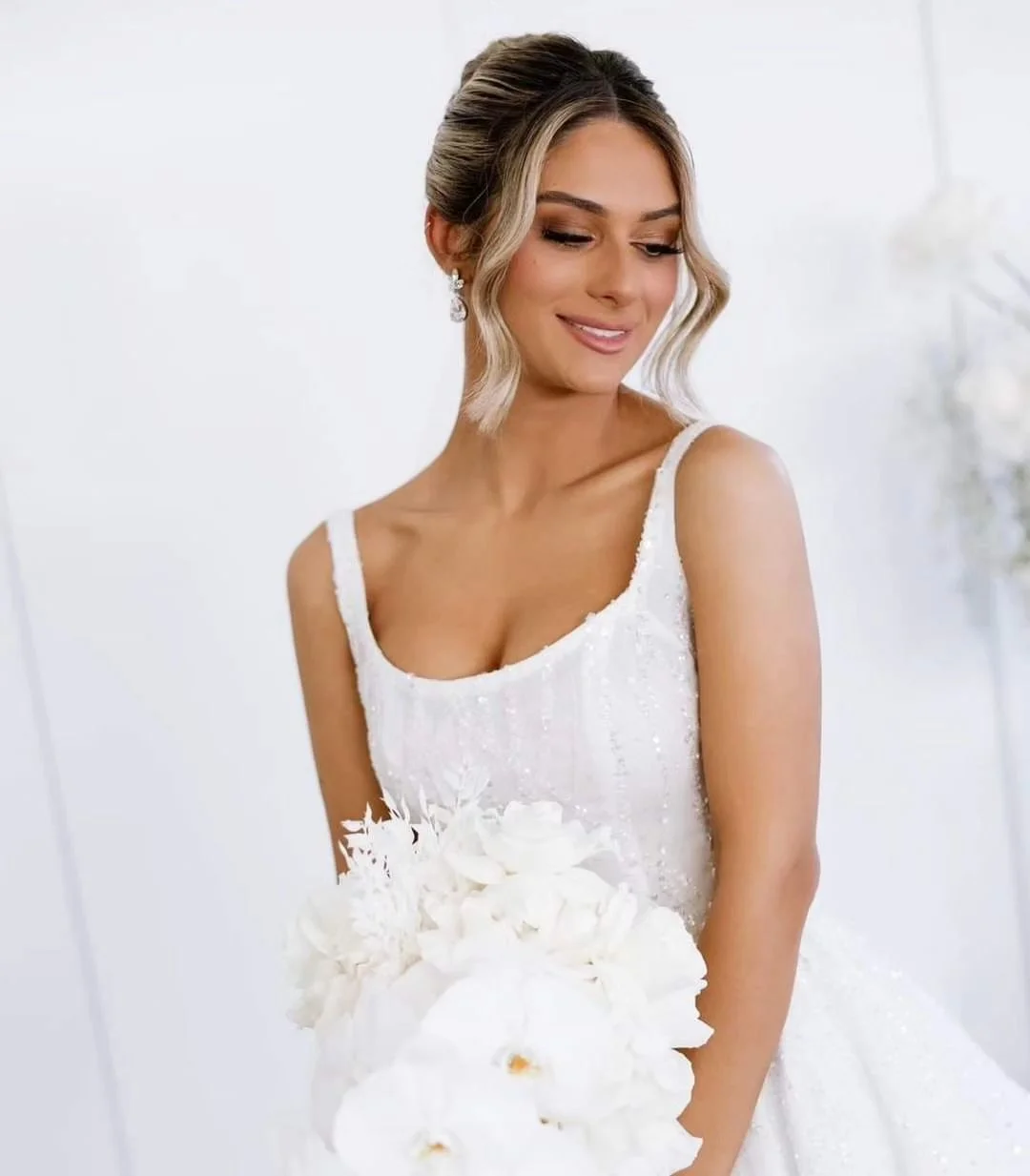
Personalised Weddings Couture | @tone_image
Boatneck
This shallowly-curved neckline makes an ideal choice for brides seeking a more modest look, though Marie points out that it can also add emphasis to the chest area.
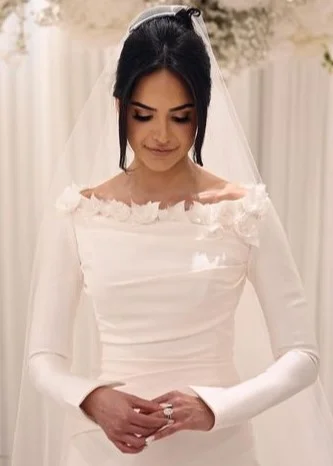
Emoda Couture | A2Z Weddings
High neck
Perhaps the most conservative neckline style, due to the coverage it provides, a higher neckline frames the collar, or above, and is often combined with cutouts or sheer lace detailing.
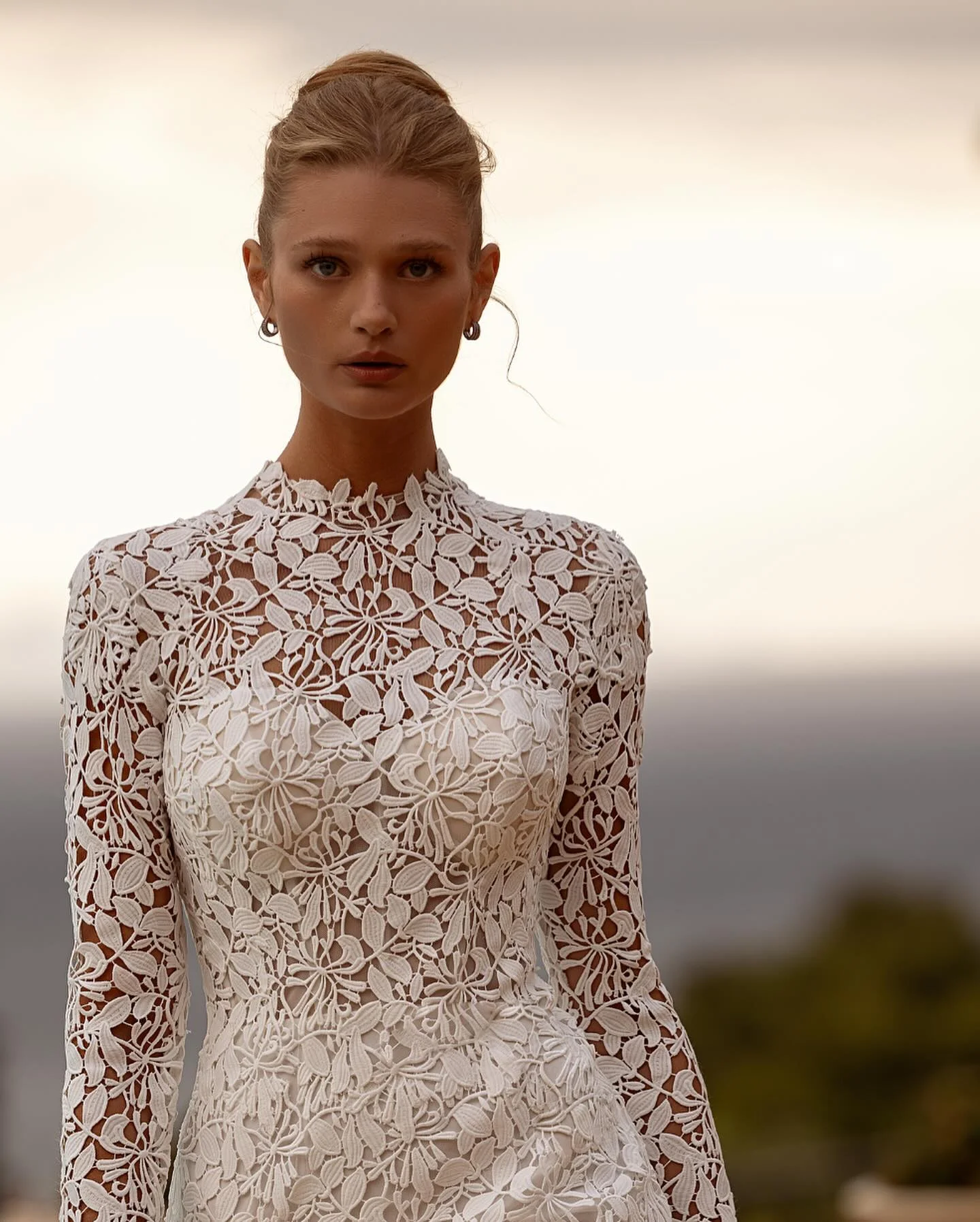
Halter neck
A showier version of the high neckline, a halter-neck dress design accentuates shoulders and can be adjusted to provide more or less coverage, as desired.
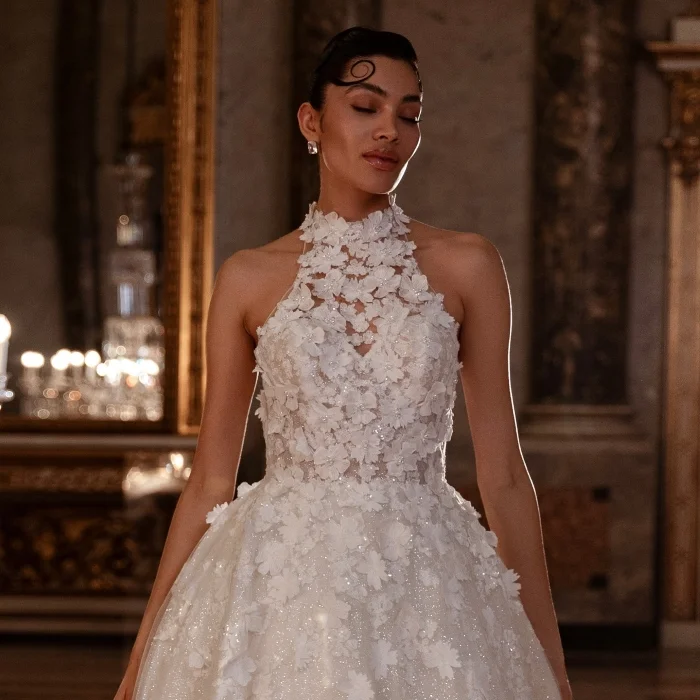
Plunge neckline
Perhaps the most daring neckline, plunging styles noticeably highlight the décolletage area and create an elongating effect, and are often combined with sheer or skin-toned panelling to add stability, support and a little extra coverage where desired.
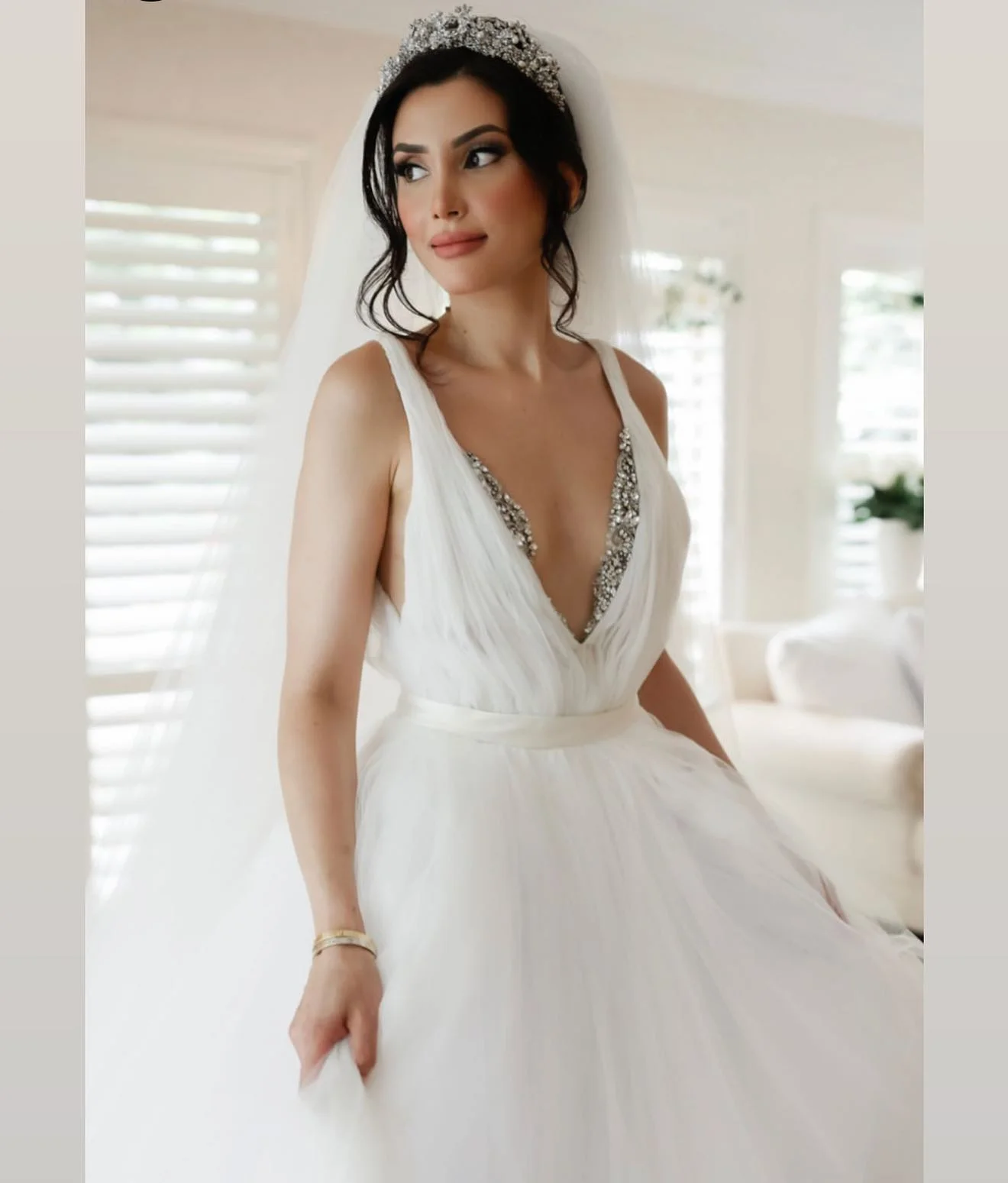
Personalised Weddings Couture | @arianaphotographystudio
Asymmetrical neckline
Achieved with a one-shouldered wedding dress style, the diagonal or asymmetrical neckline can be combined with a sleeve to add a little drama, and accentuates a bride’s face, neck and exposed shoulder.
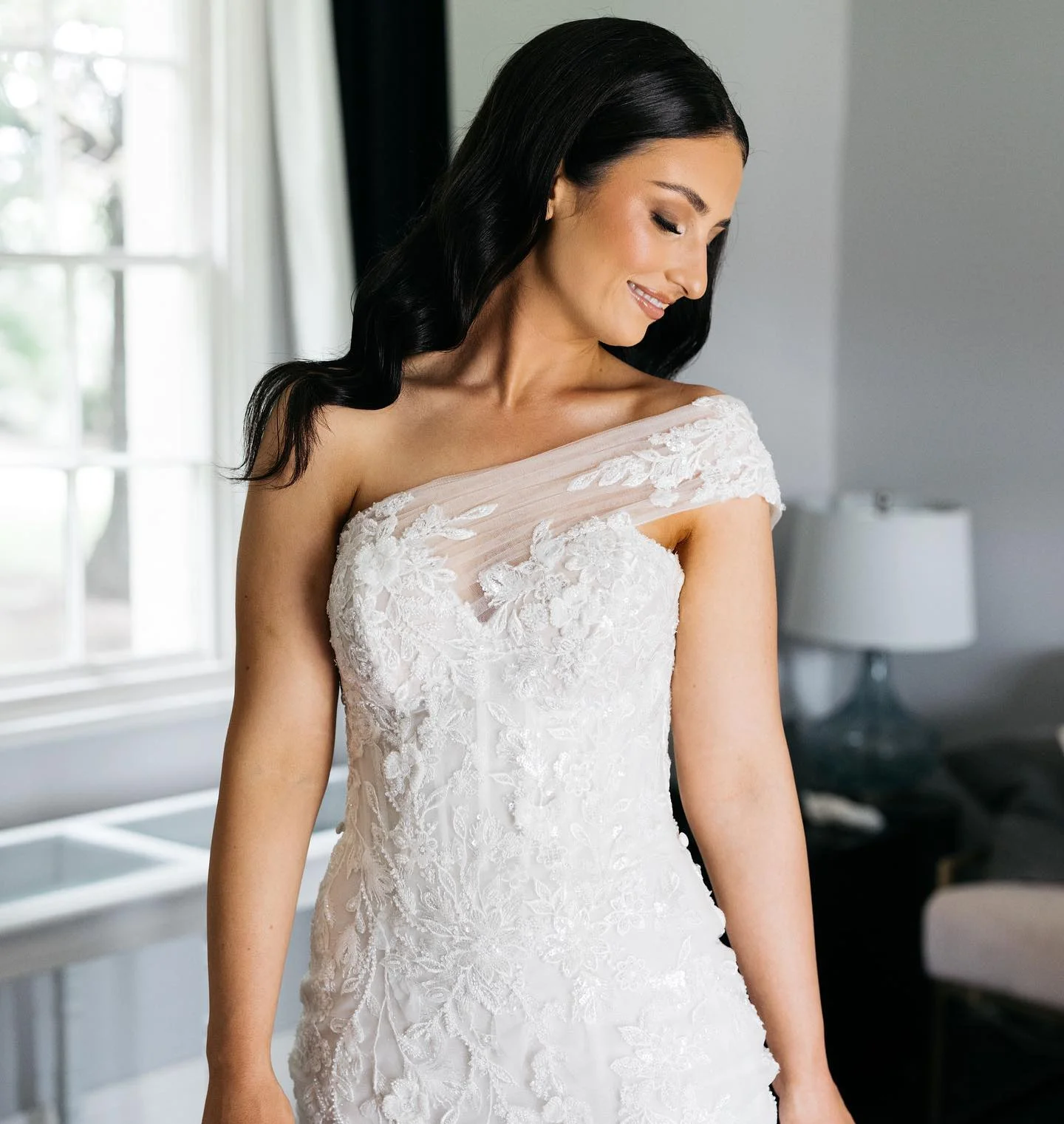
Brides Of Armadale | @hellochloemay
Wedding dress back styles
As you walk down the aisle, and stand to face your wedding celebrant, the eyes of your guests will be focused on the back of your dress. So, while it may not be the most-photographed angle, it’s a good idea to consider how your gown will look to those behind you.
A beautiful row of fabric-covered buttons may be all you need to add interest, while details like straps, lace inserts, beading and completely backless designs can infuse statement-making style.
Pay attention to dress backs if buying off-the-rack or talk to your dress designer about the types of back detail that will work with your look, without compromising the structural integrity of your wedding dress design.
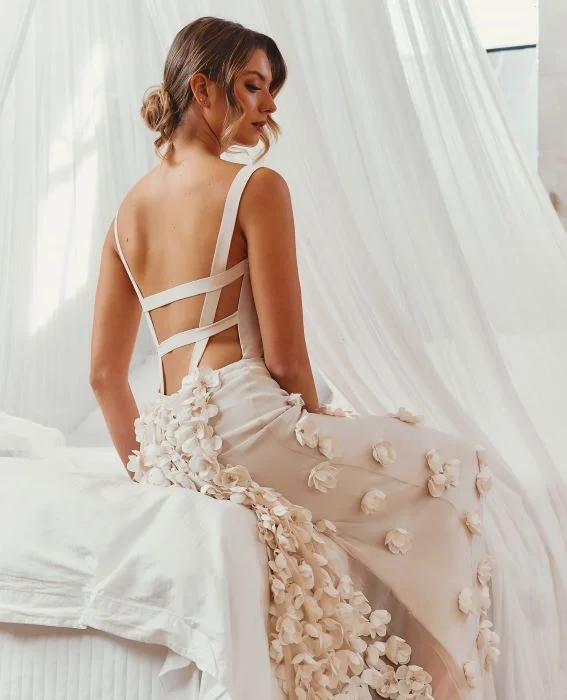
Emoda Couture | Moonlight Photographics
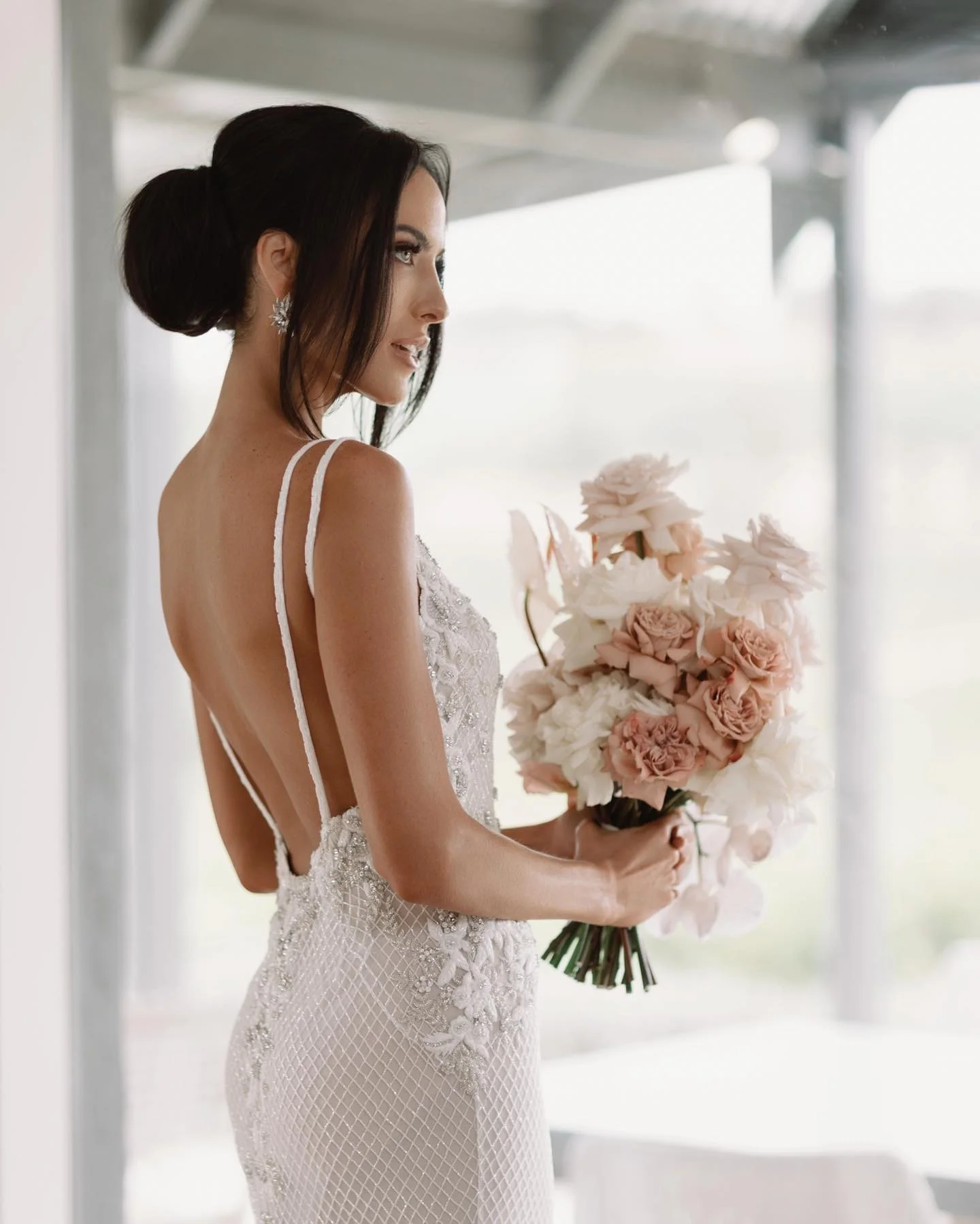
Alexis George Couture | @wmamot
Etre Marie Bridal Boutique | Style Aurora

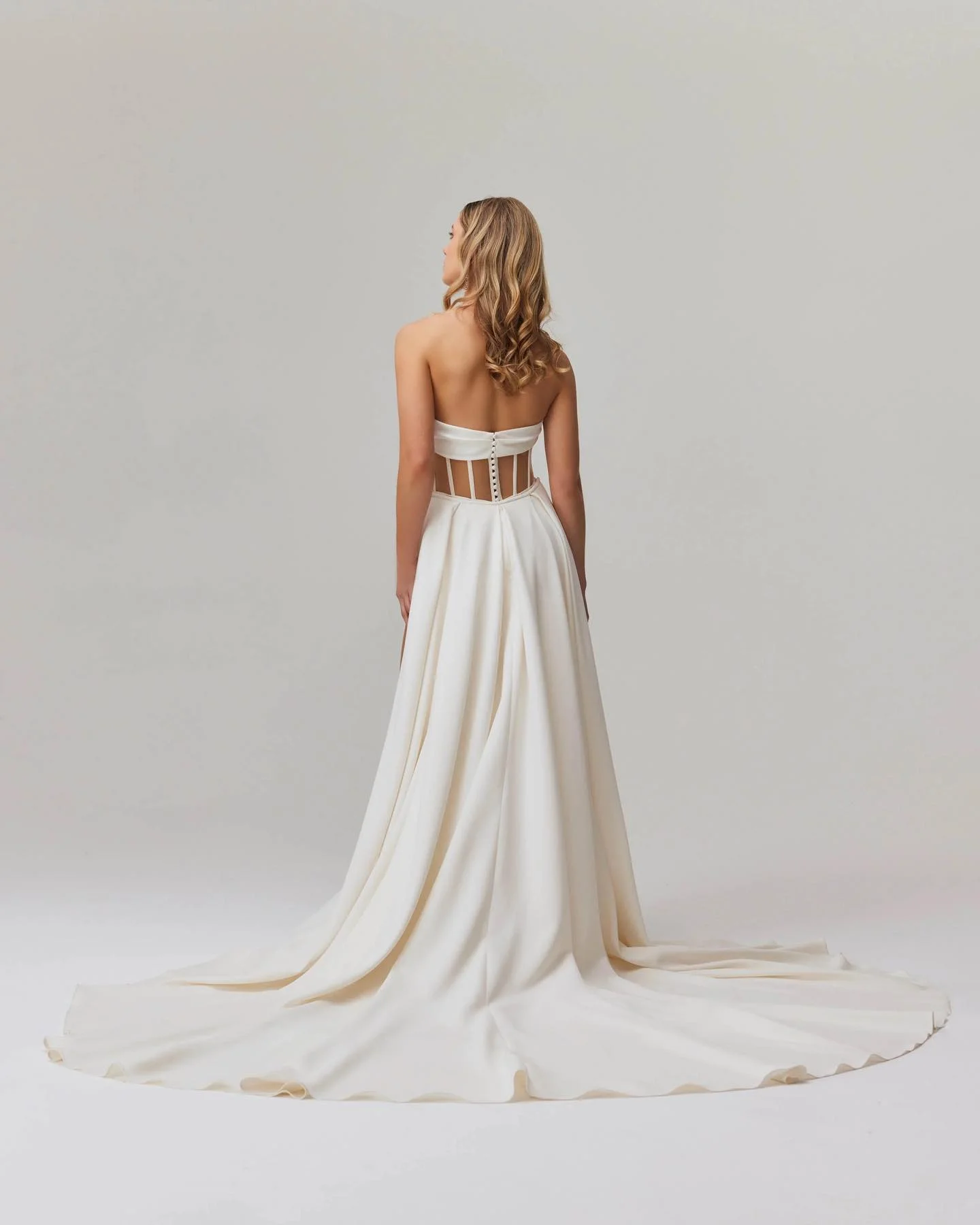
Brides Of Beecroft | Design @jessicacoutures
Wedding dress sleeve options
The sleeve options for wedding dresses vary from completely strapless styles to long sleeve designs, with their selection often dictated as much by practicality as preference.
Wedding gowns with sleeves
Offering more skin coverage, long-sleeved, three-quarter sleeve, short-sleeve and cap-sleeve styles are often preferred by autumn or winter brides, looking for a weather-appropriate gown or those seeking to cover shoulders and arms for personal or religious reasons, according to Maria.
The likes of balloon, bell, bishop, layered, petal, poet and kimono sleeve styles can all add definition and interest, and lace and sheer fabrics can shine in longer-sleeved designs.
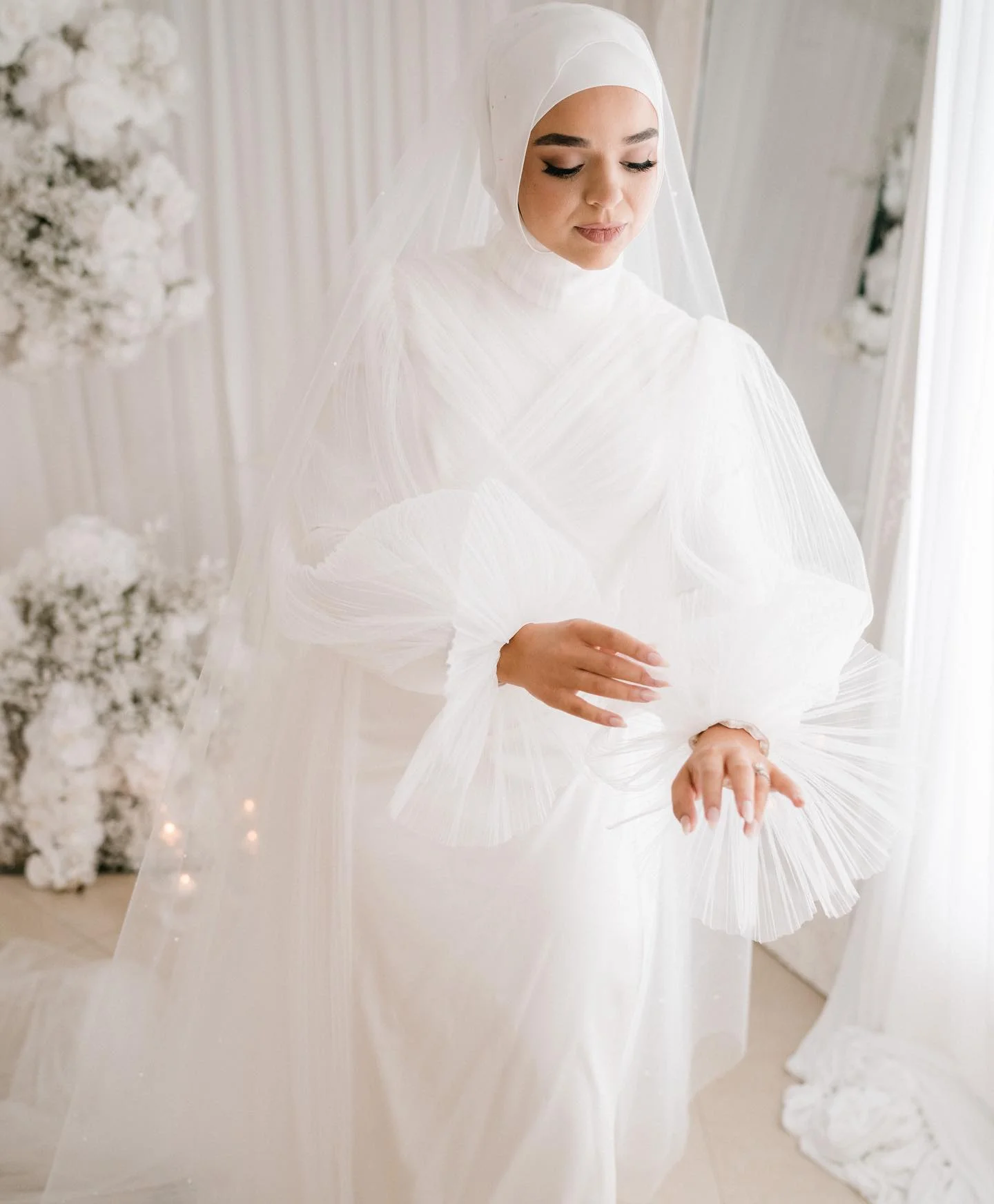
Emoda Couture |@saltatelier_wedding
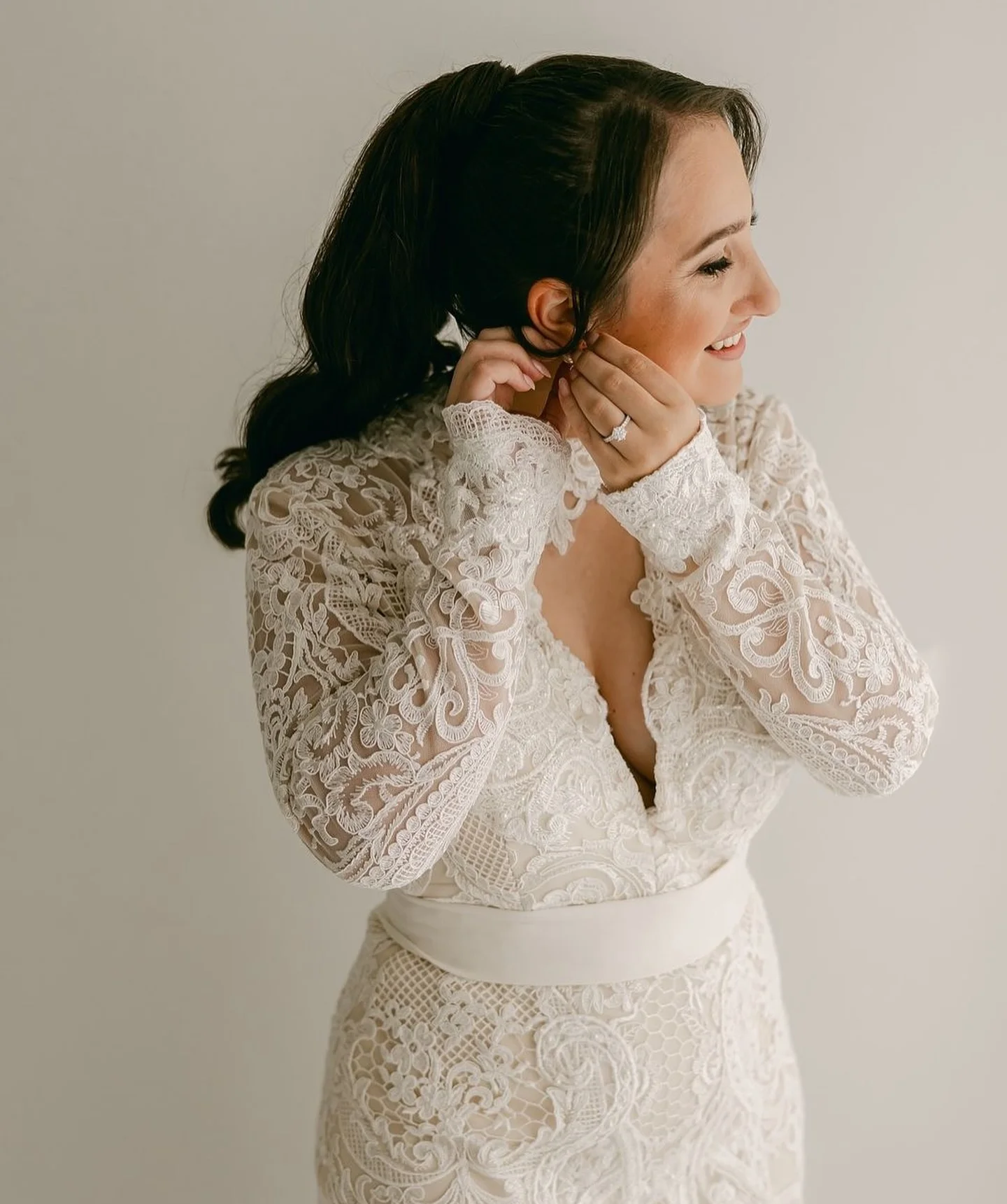
Romeo Bastone Couture | @kimonas_photography
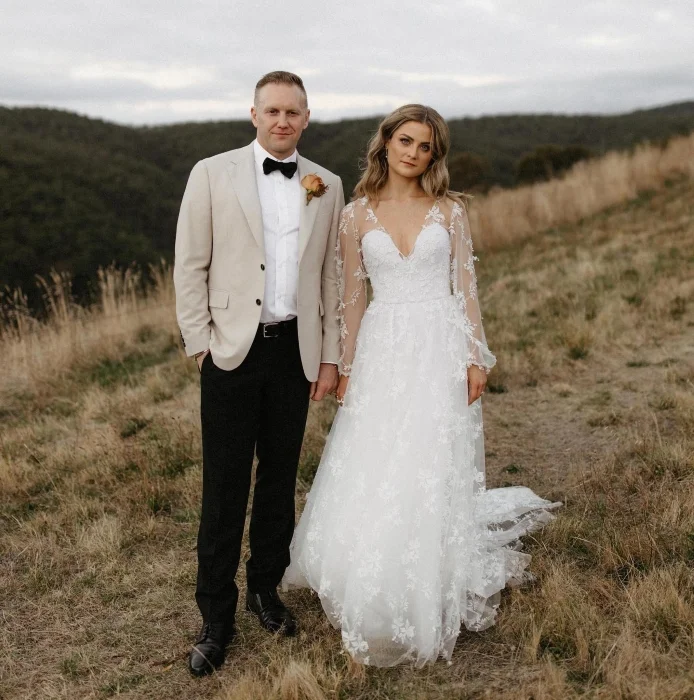
Alexis George Couture | @dan_evans_photography
Off-the-shoulder wedding dresses
Combining the benefits of sleeves, with a look that also highlights the neck and upper torso, off-the-shoulder style can be achieved with sleeves of all lengths and types — attached to the bodice, as individual detachable pieces, or as glove-like accessories that extend to the upper arm to create a cohesive effect.
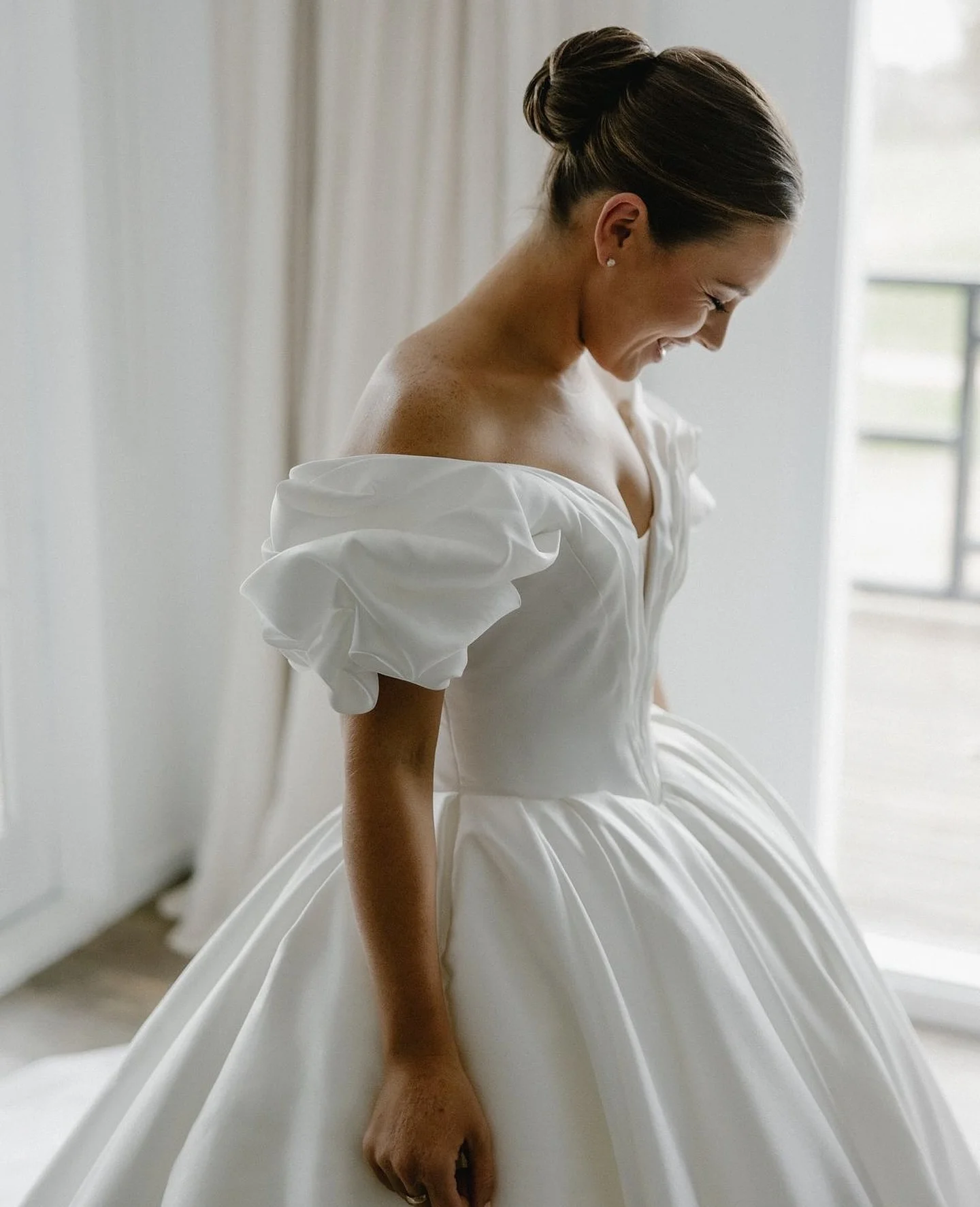
The Sposa Group | @duuetweddings
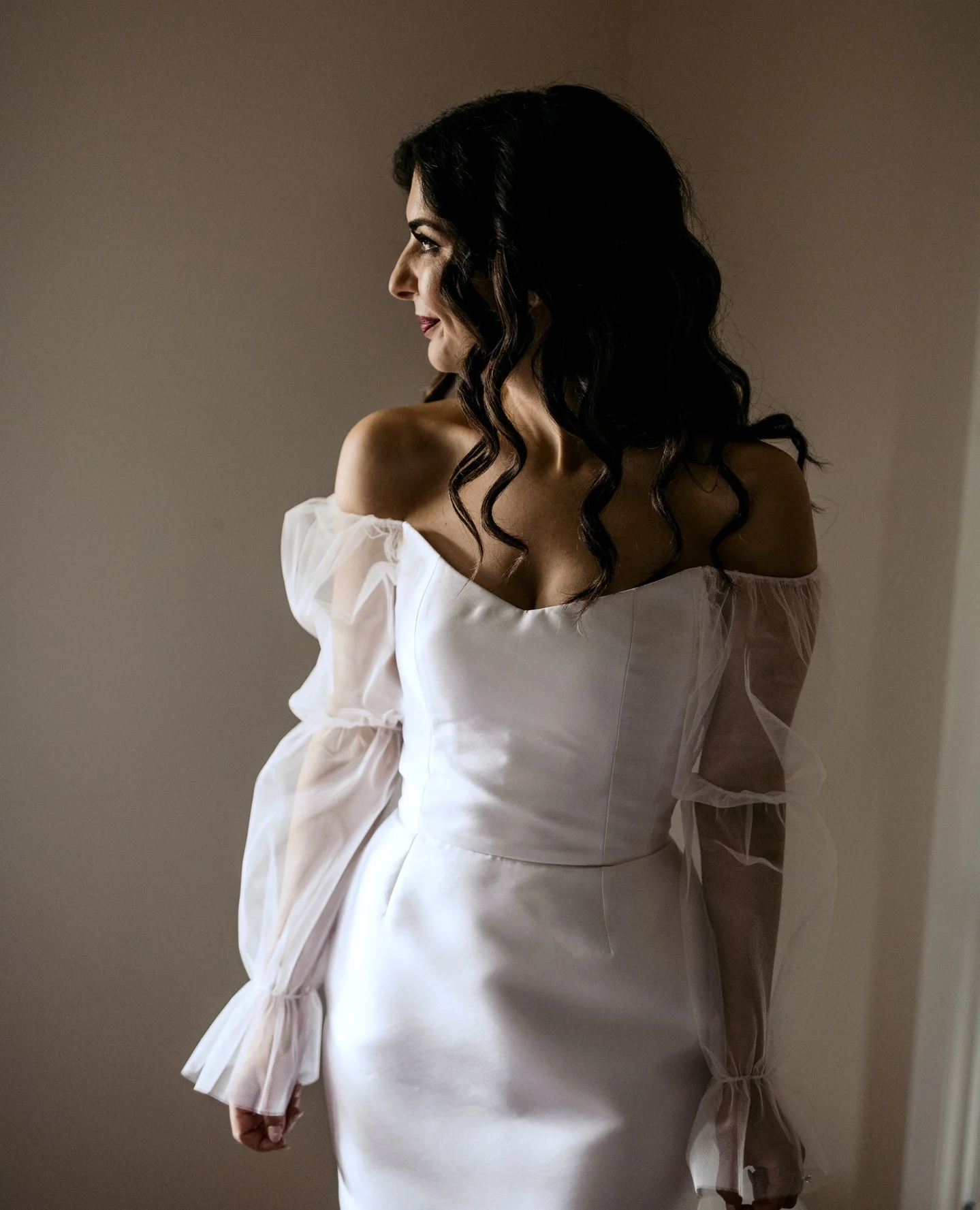
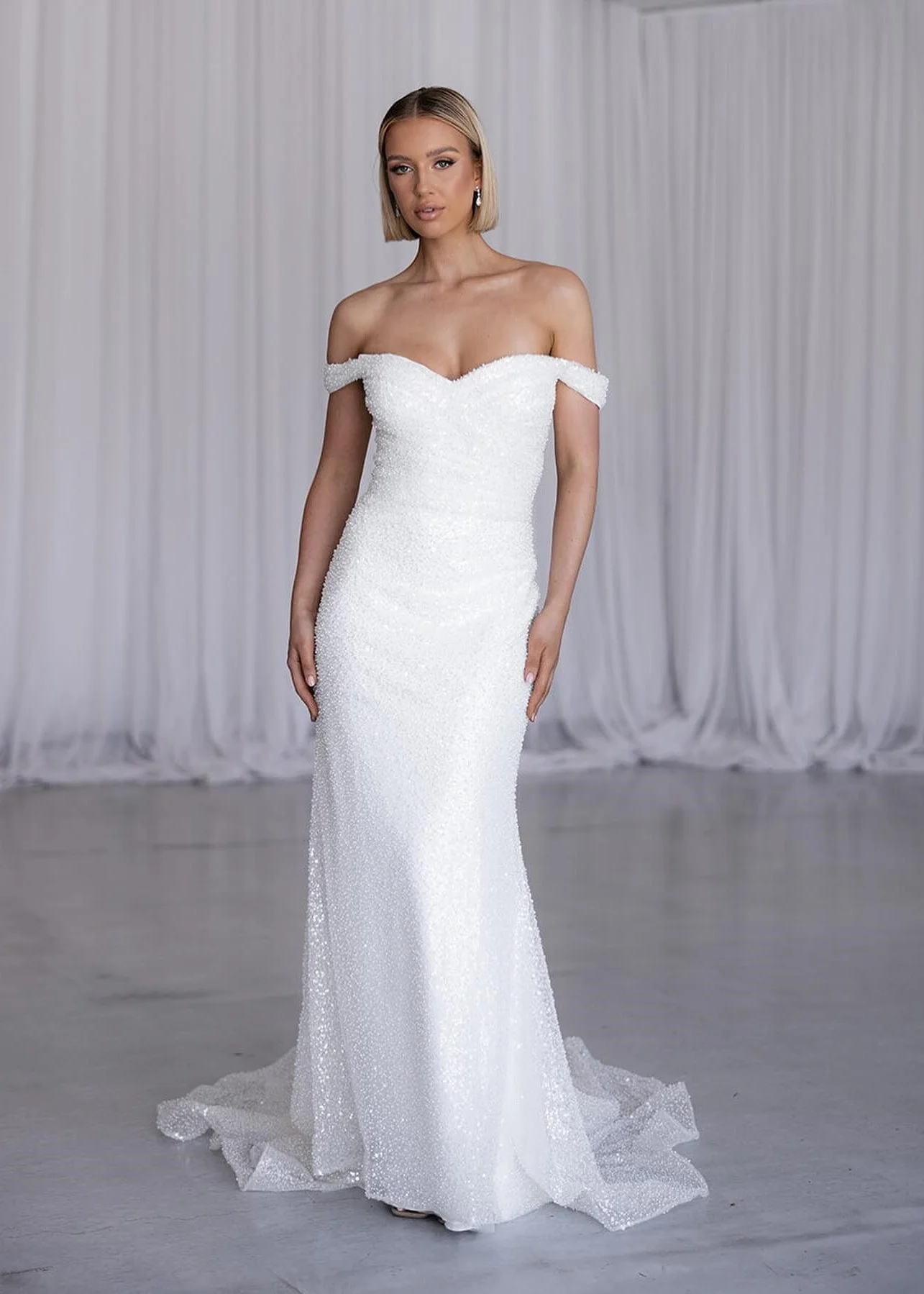
Belle et Blanc | Style Heather
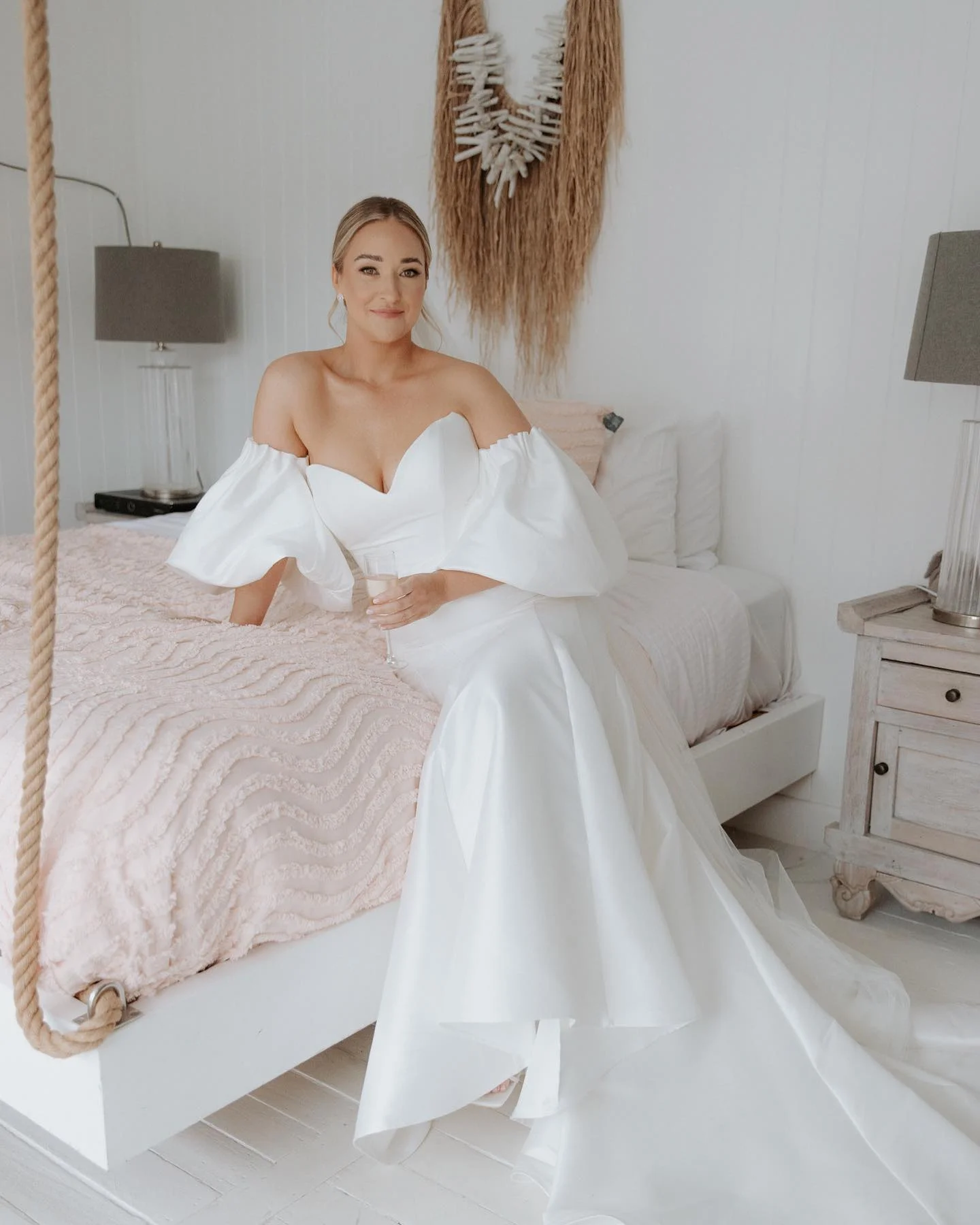
Final Touch Bridal | @daysliketheseevents
Strappy wedding dresses
Ranging from the thinnest of spaghetti straps to wider-strap designs, often incorporated into the bodice pattern of the dress, straps and bands offer varying levels of support for bustier brides, and a little more reassurance than completely strapless, for those favouring a sleeveless or backless style.
“Be careful with strap positioning,” George advises. “As it can make shoulders appear broader if not done correctly.”
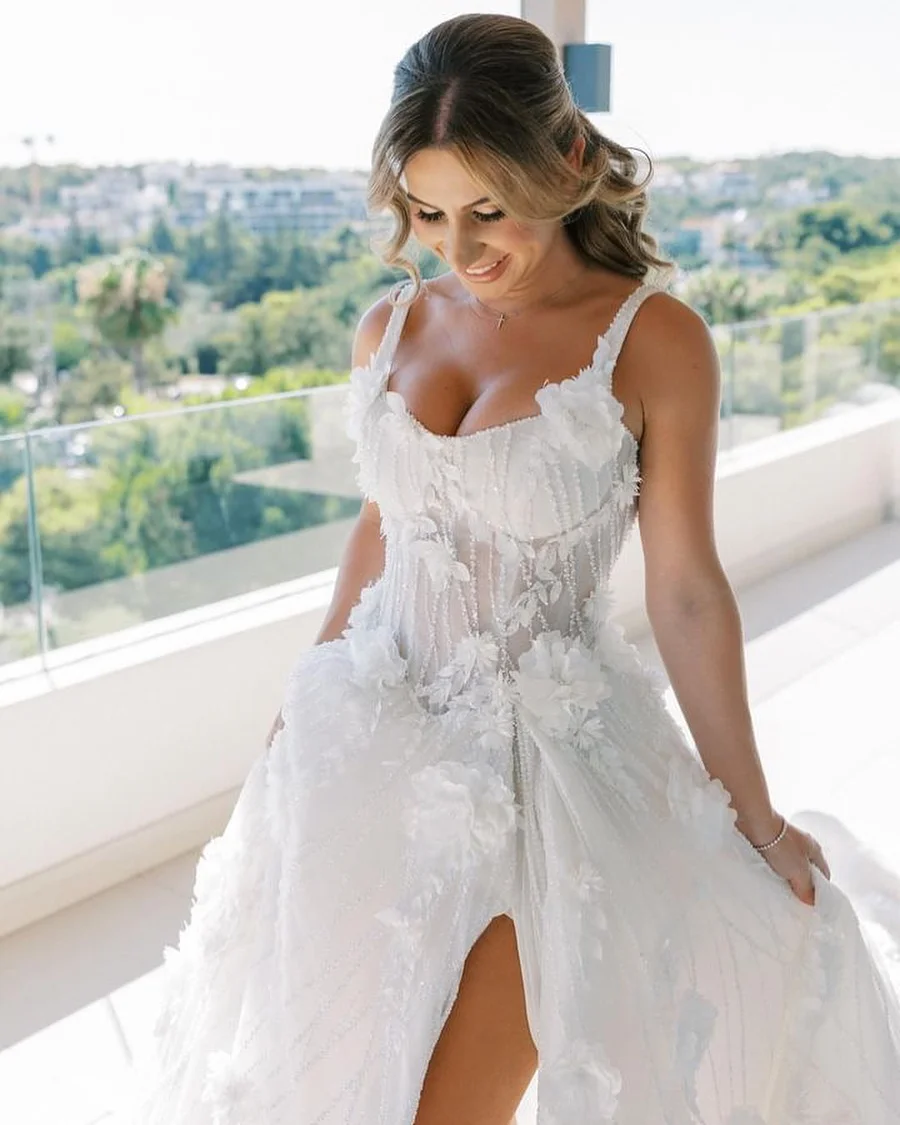
Emoda Couture | @georgeliopetas
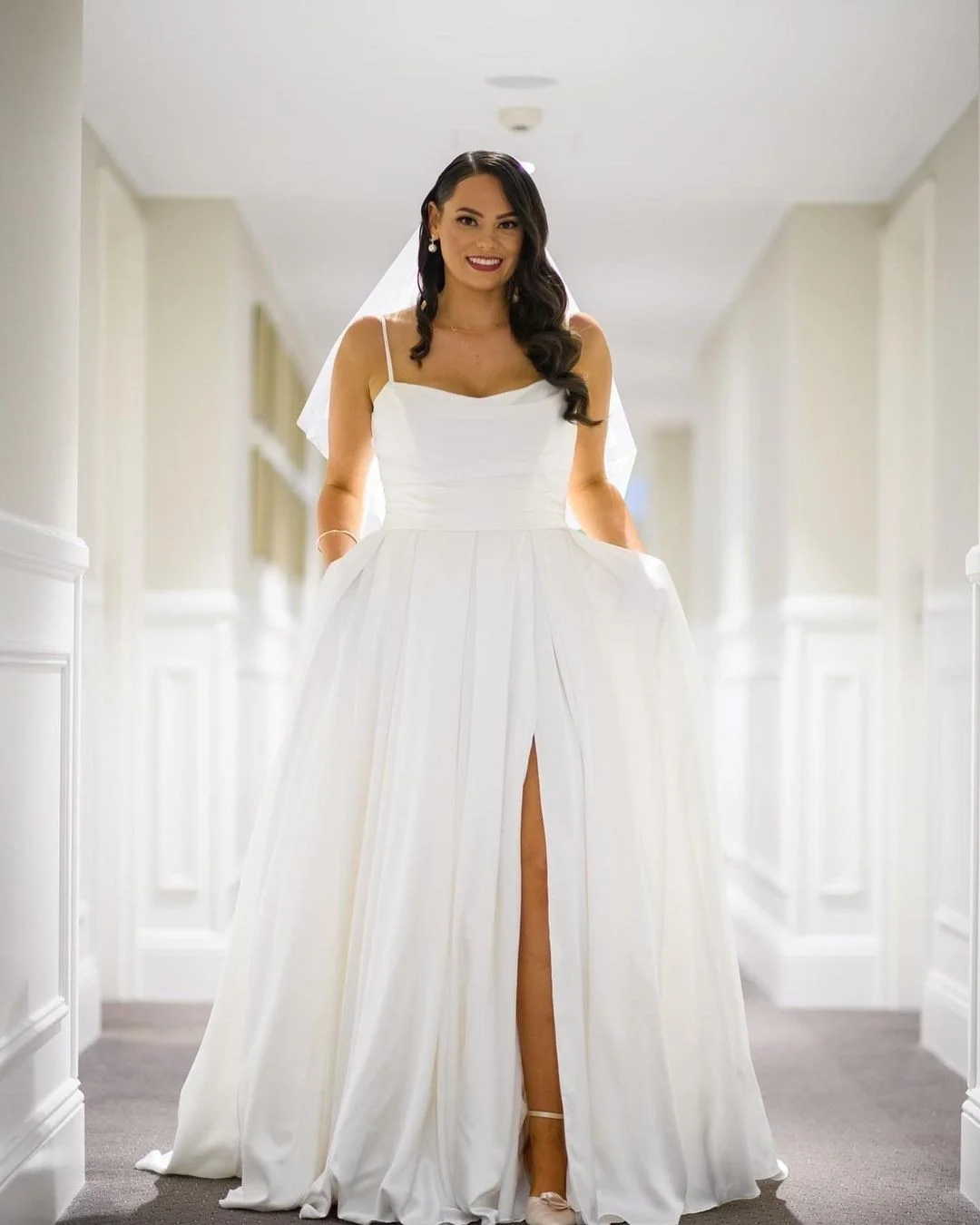
Brides Of Beecroft | Design @maggiesotterodesigns
Strapless wedding gowns
Accentuating the shoulders, décolletage and collar bones, strapless style wedding gowns bare the most skin, so can be better suited to spring or summer weddings, though they team beautifully with shrugs, shawls, capes and bolero jackets for those exchanging nuptials during cooler seasons.
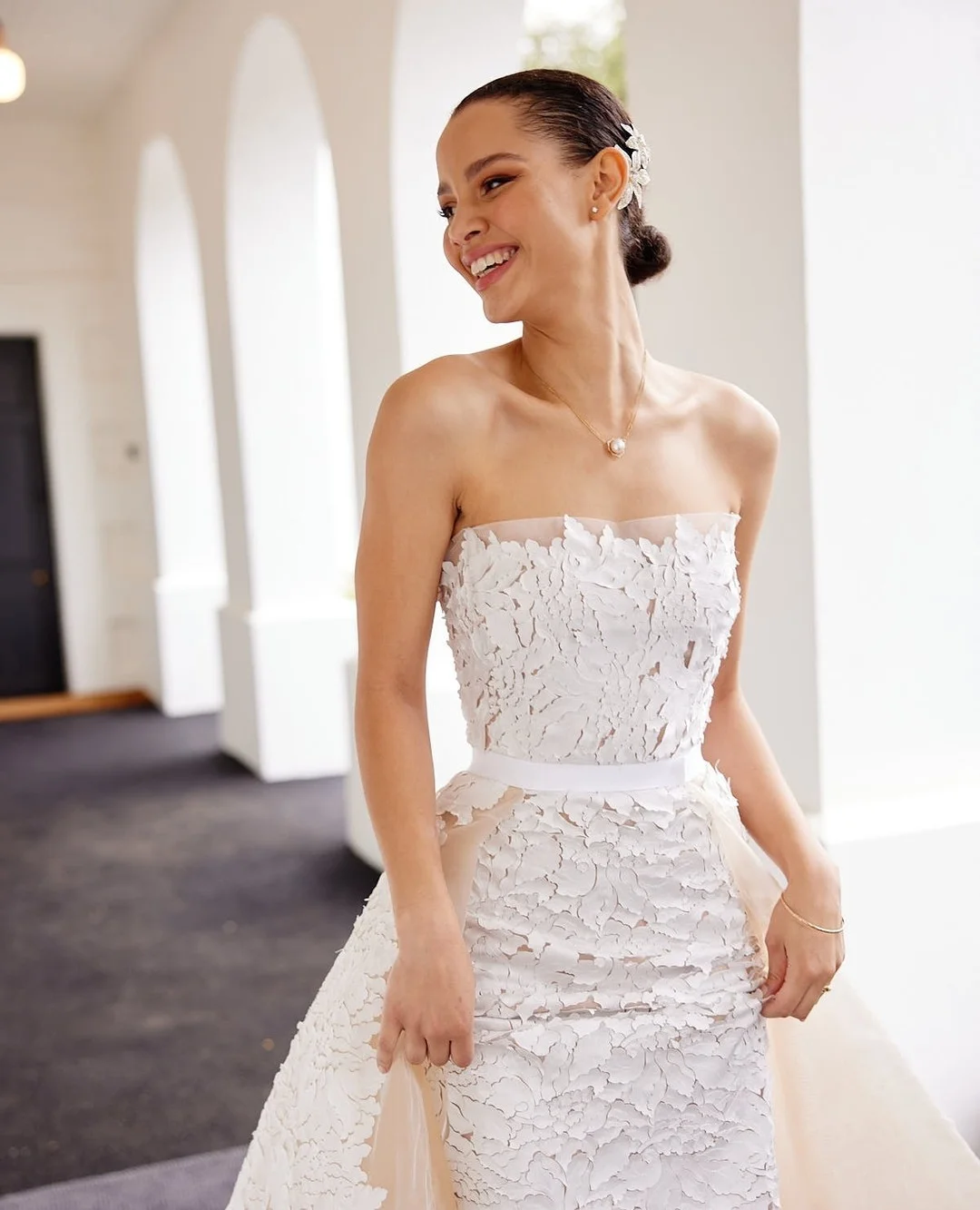
Alexis George Couture | @gretlwb_photo
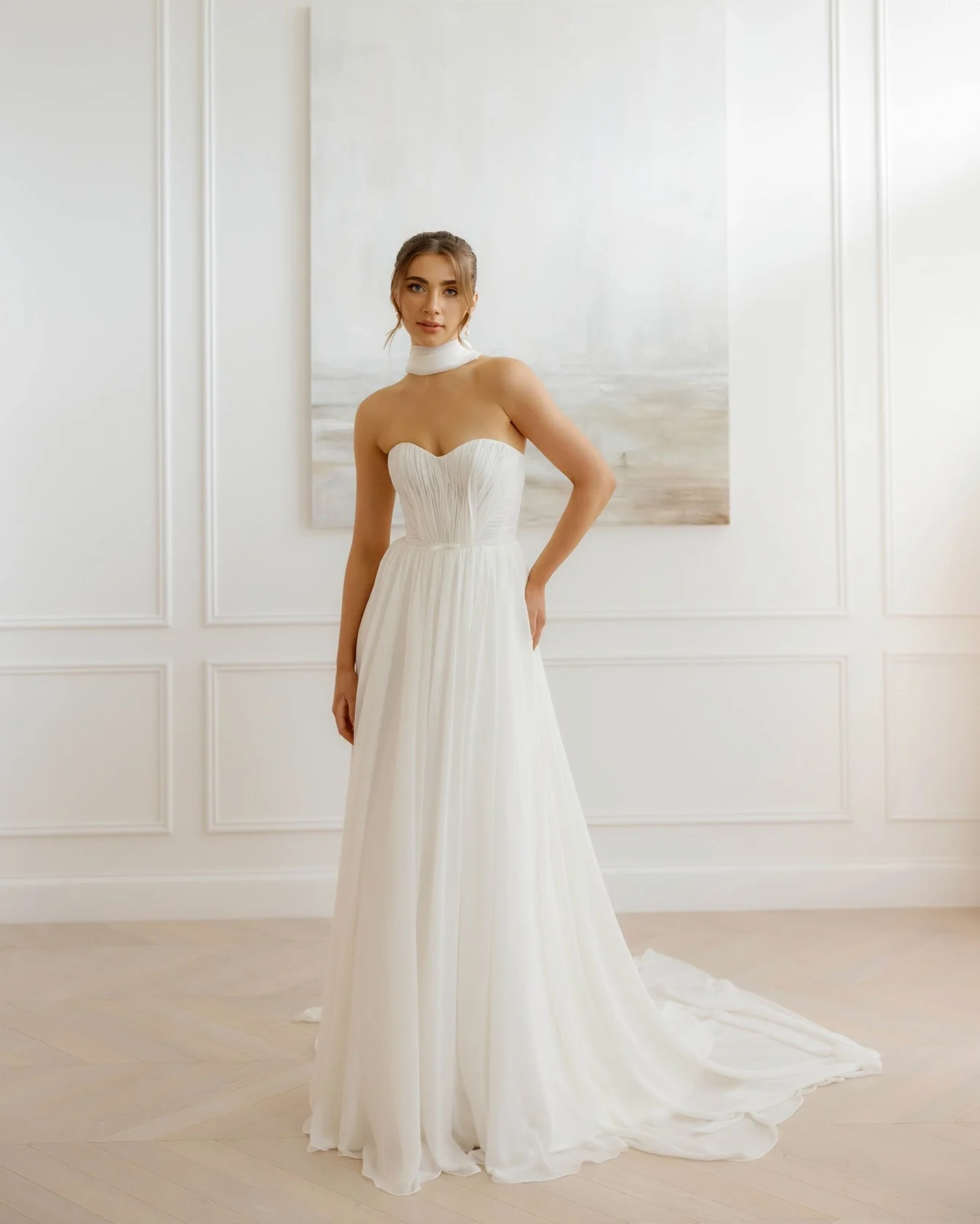
Brides Of Beecroft | Style Tonica
Wedding dress fabric choices
You may never need to discern tulle from taffeta or chiffon from crepe but it can be helpful to familiarise yourself with fabric weights, understand how different materials drape and the role they play in a garment’s structure, especially if you’re planning on having your wedding dress tailor made.
A quality wedding dress designer should be able to provide suggestions and guidance, but it can be helpful to look into popular wedding dress fabrics — think organza, silk, chiffon, charmeuse, crepe, brocade, tulle, jersey, jacquard, satin, Mikado, taffeta and georgette — and have some idea of how they present and the effect they can create.
“We use Mikado fabric as it has great structure for a ball gown look,” Maria illustrates.
She goes on to list silk satin organza, under customised beading, as another of her fabric favourites, and stretch matte crepe, which she uses for her slinkier gowns. “It hugs the figure in a flattering way” she explains.
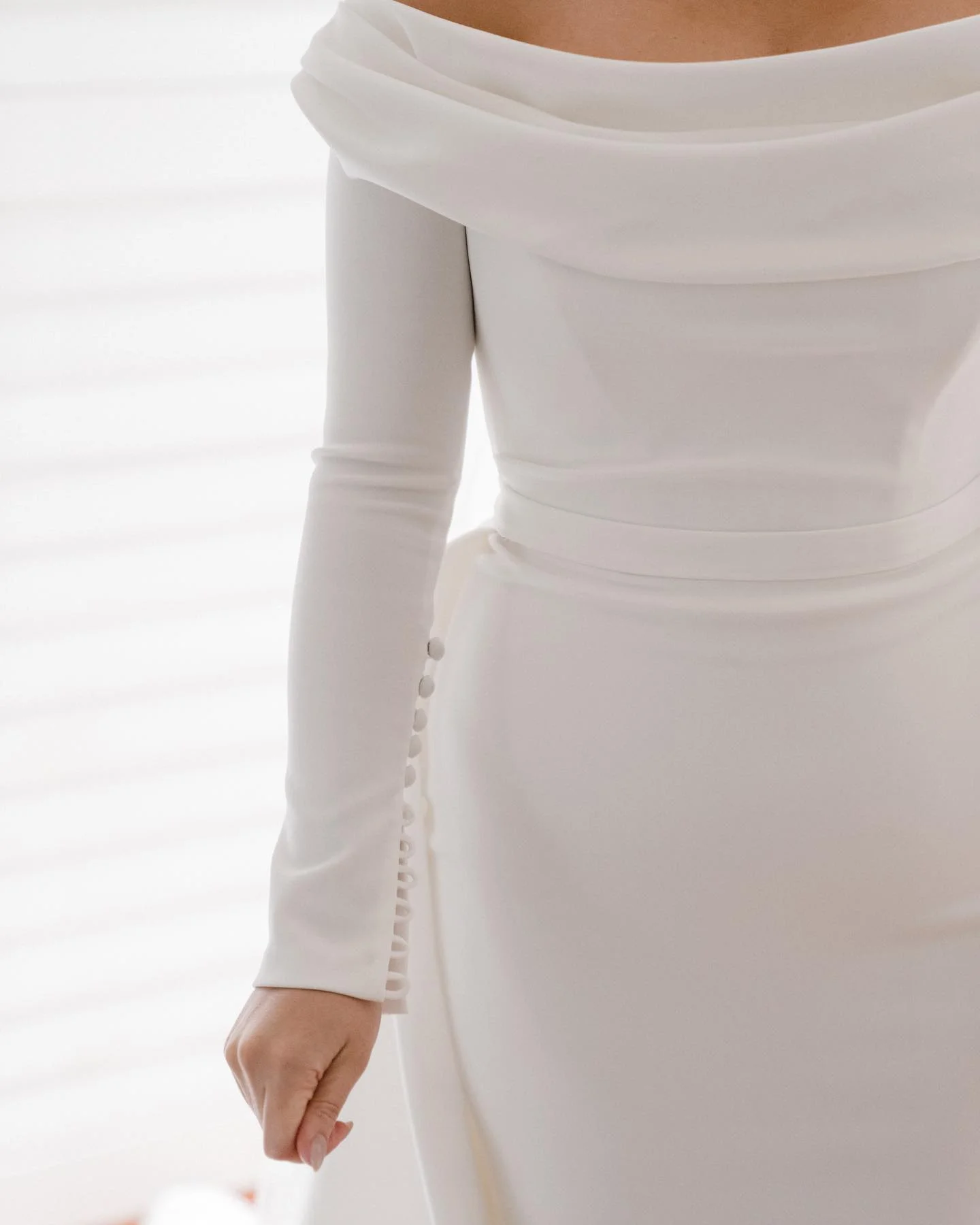
Emoda Couture | @siempreweddings
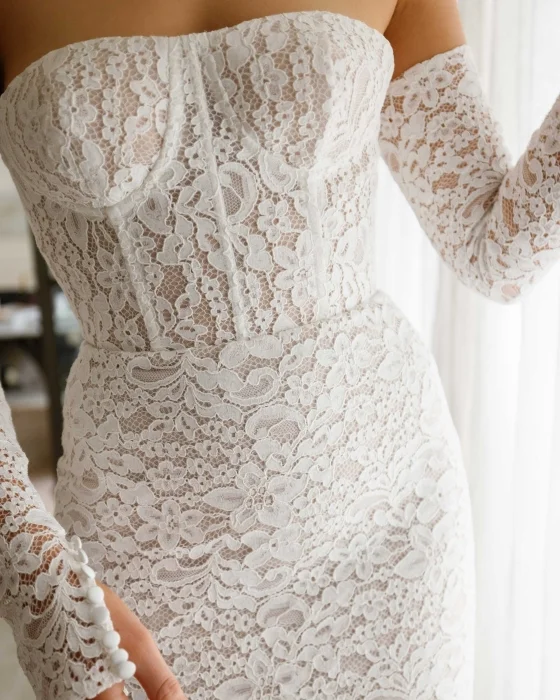
Brides Of Beecroft | Style Edna
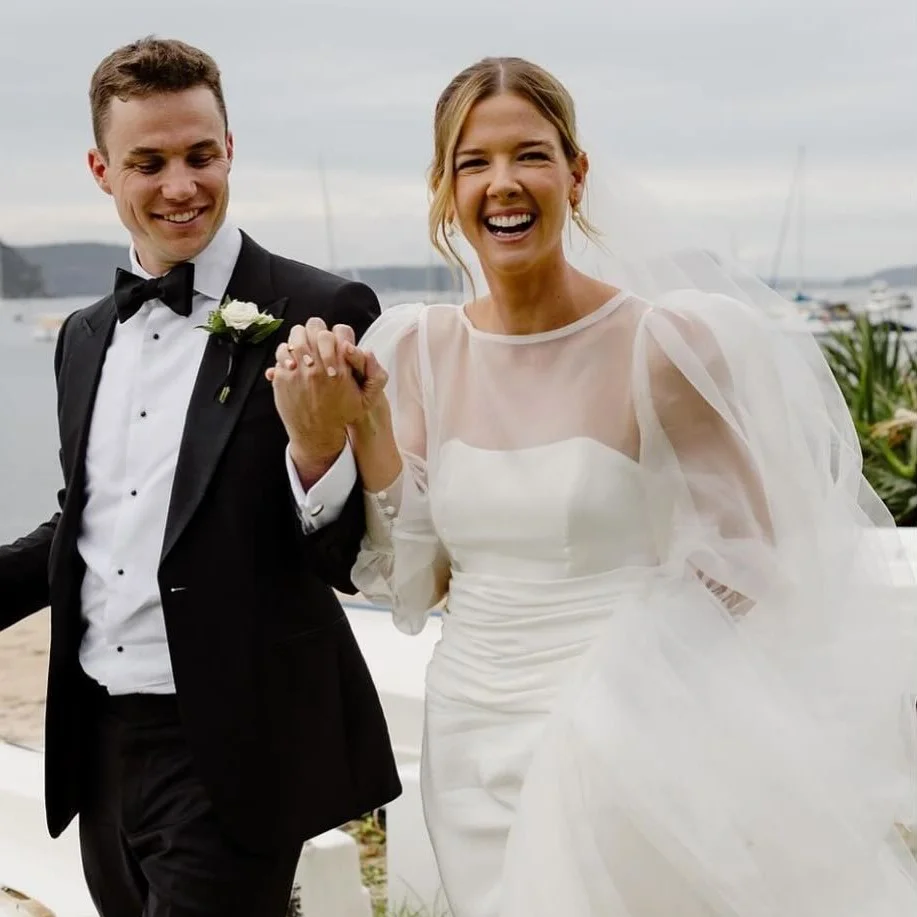
Wedding dress details and embellishments
While design and fabric choice are vital considerations, the phrase 'attention to detail' comes into its own when choosing a wedding dress, and it’s the finest of details — like lace, embroidery, beading and sequins — that can stamp individual style and elevate a gown from beautiful to breathtaking.
Here are some detailing options and popular wedding dress embellishment styles that you might want to factor into your dress design or decision-making.
- Appliqué
- Beading
- Belts
- Bows
- Buttons
- Crystal and rhinestone detailing
- Crochet
- Cut-outs
- Decorative stitching
- Embroidery
- Feathers
- Fringing
- Lace
- Pearl detailing
- Piping
- Ruffles
- Sashes
- Sequins
- Trimmed edging
George also points out the importance of detail, even for those preferring embellishment-free, minimalist styles, “simplicity requires perfection, so fabric quality and flawless stitching become crucial since there’s no lace or beading to disguise imperfections”.
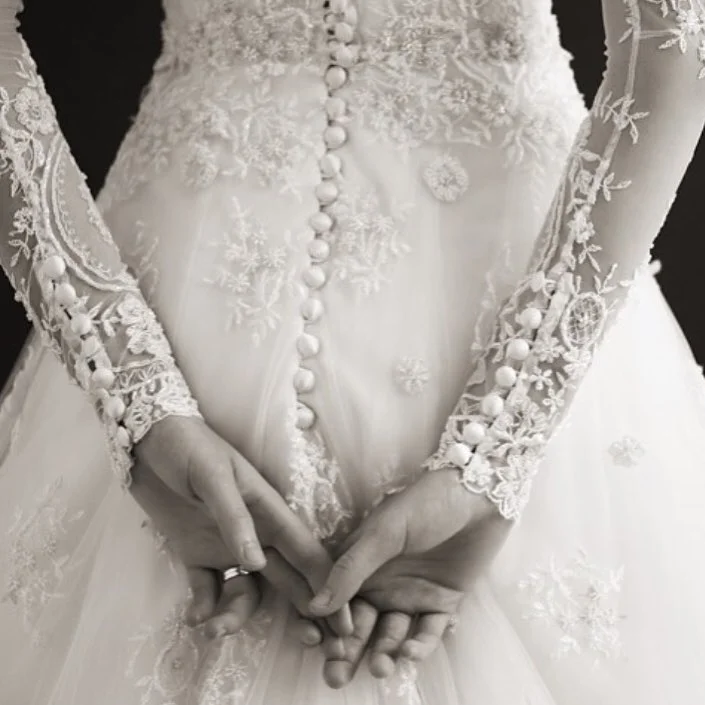
Rhonda Hemmingway Couture | @simonajanek
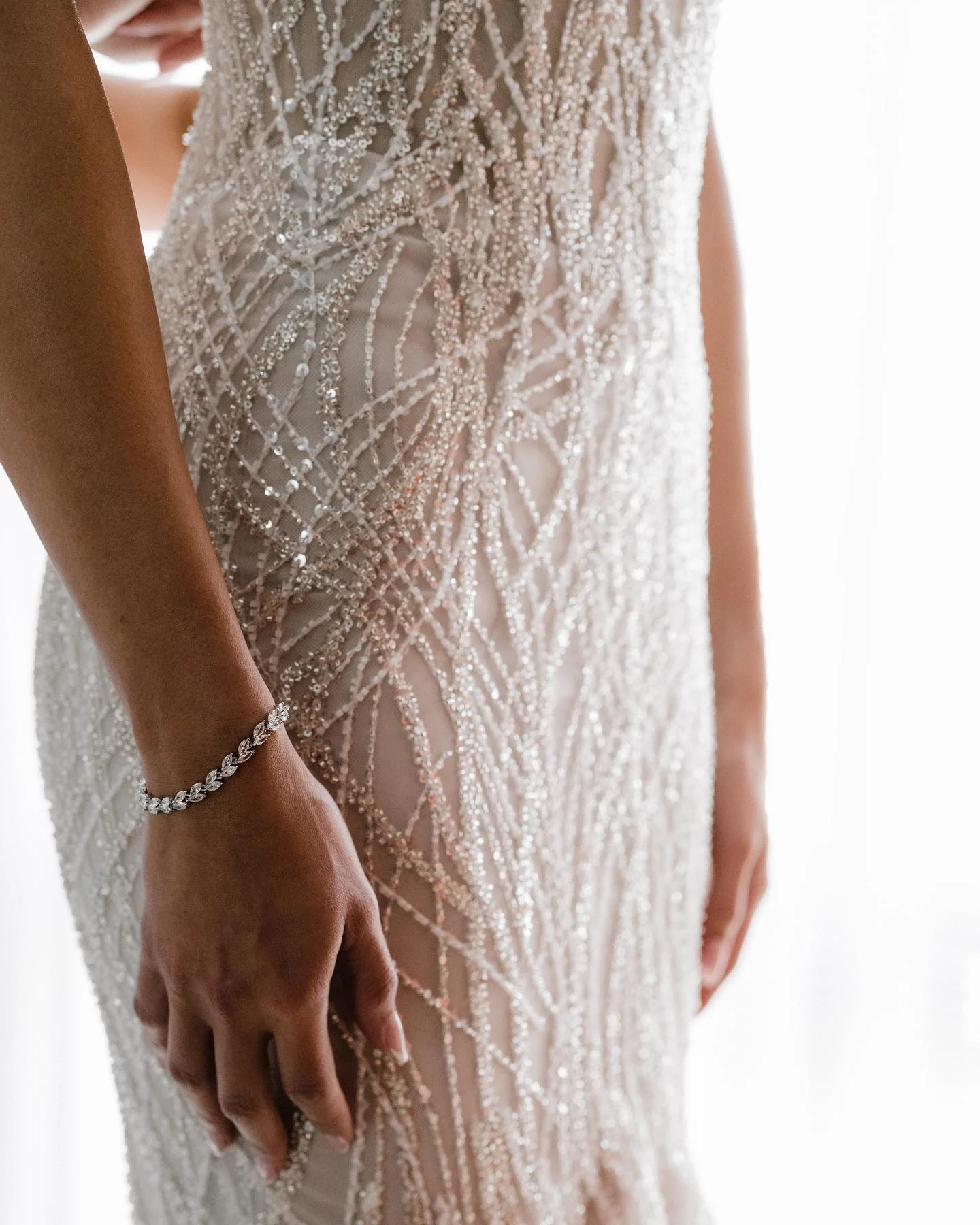
Emoda Couture |@siempreweddings
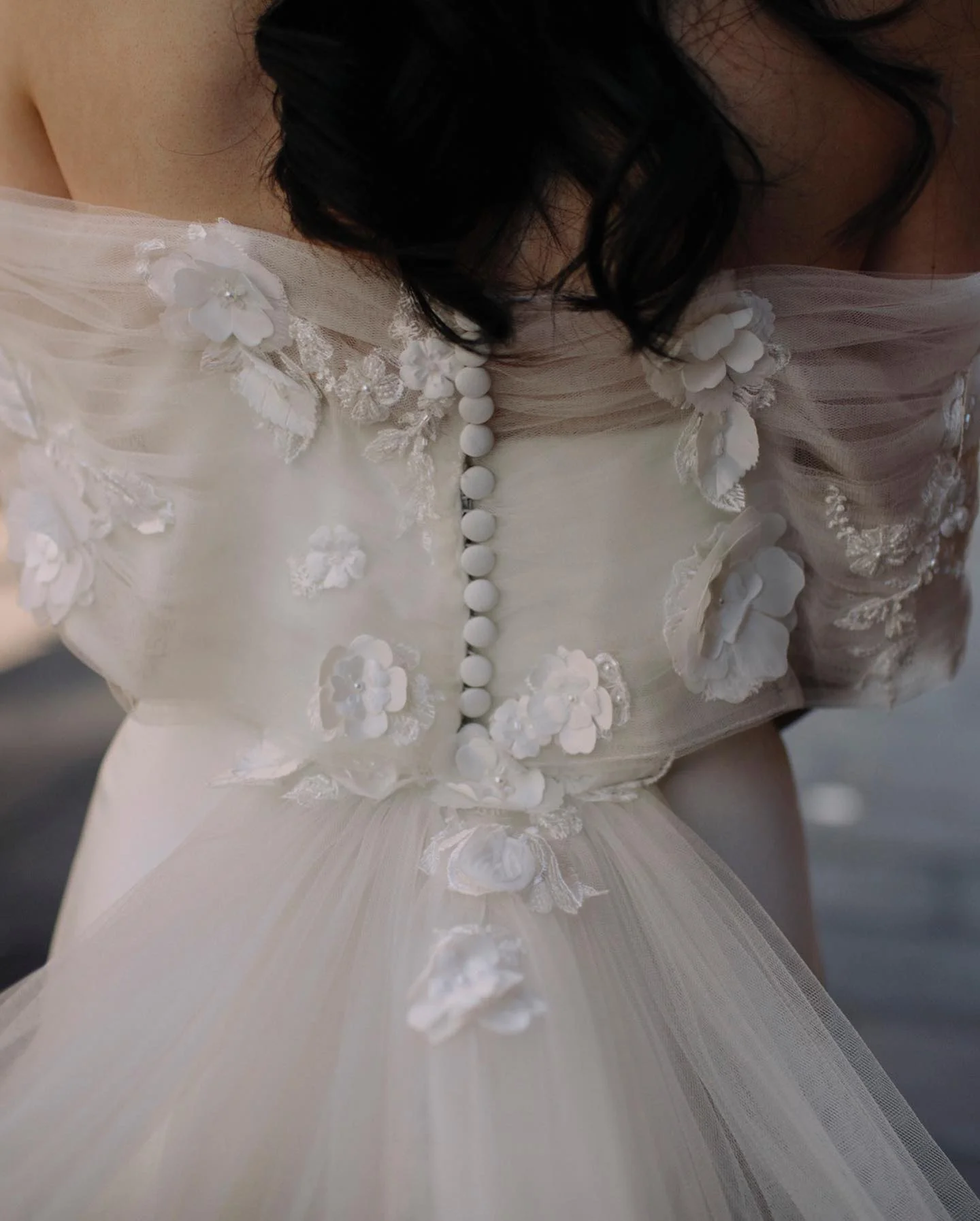
Brides Of Armadale | @itsbeautifulhere
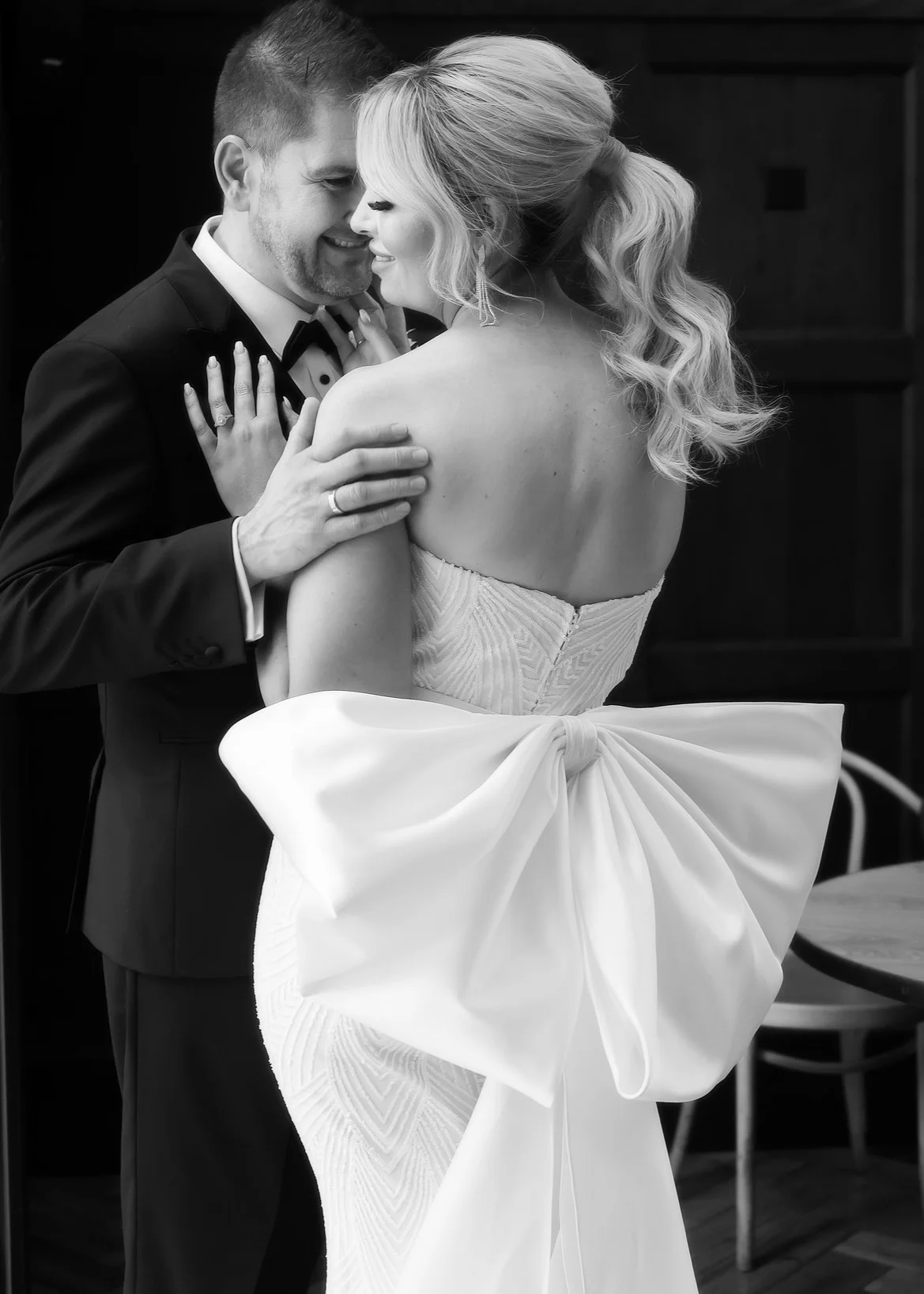
![]()
Romeo Bastone Couture | @iconphotographymelbourne
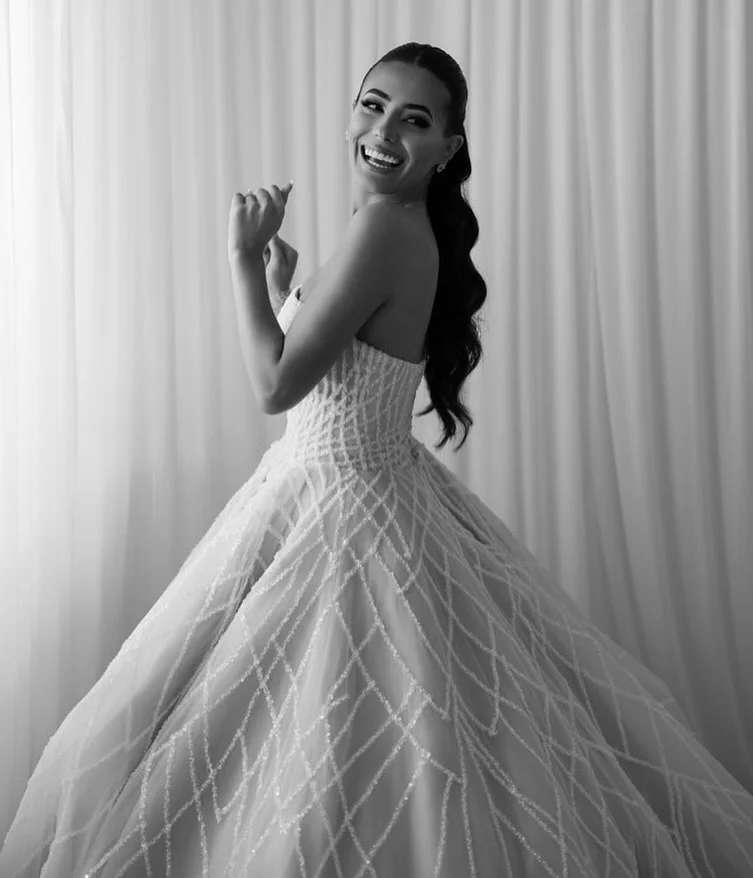
Idora Bridal | @mophotographystudio
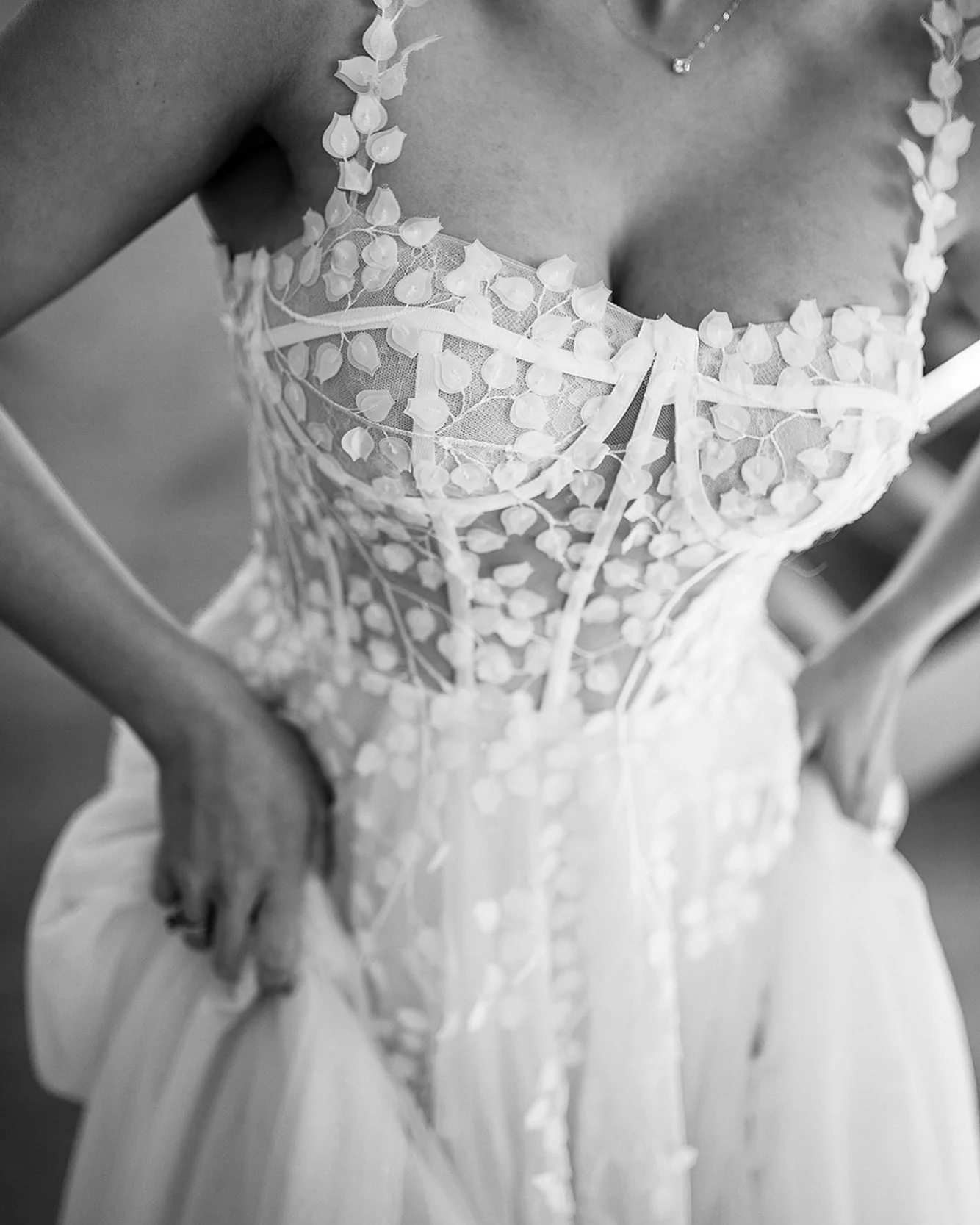
Final Touch Bridal | Design Evoke Bridal
Wedding dress traditions and trends
Why do most brides wear white?
While symbolic notions of purity are often associated with brides wearing white, it seems in fact that it was the young Queen Victoria who started this ongoing trend.
Brides of her era typically wed in their best dress, whatever the hue or design, but when she chose a white gown to marry Prince Albert in 1840, her colour choice was circulated widely in magazines and newspapers establishing it as a popular fashion choice of the time and, within Western society, the preference for white wedding dresses has endured ever since.
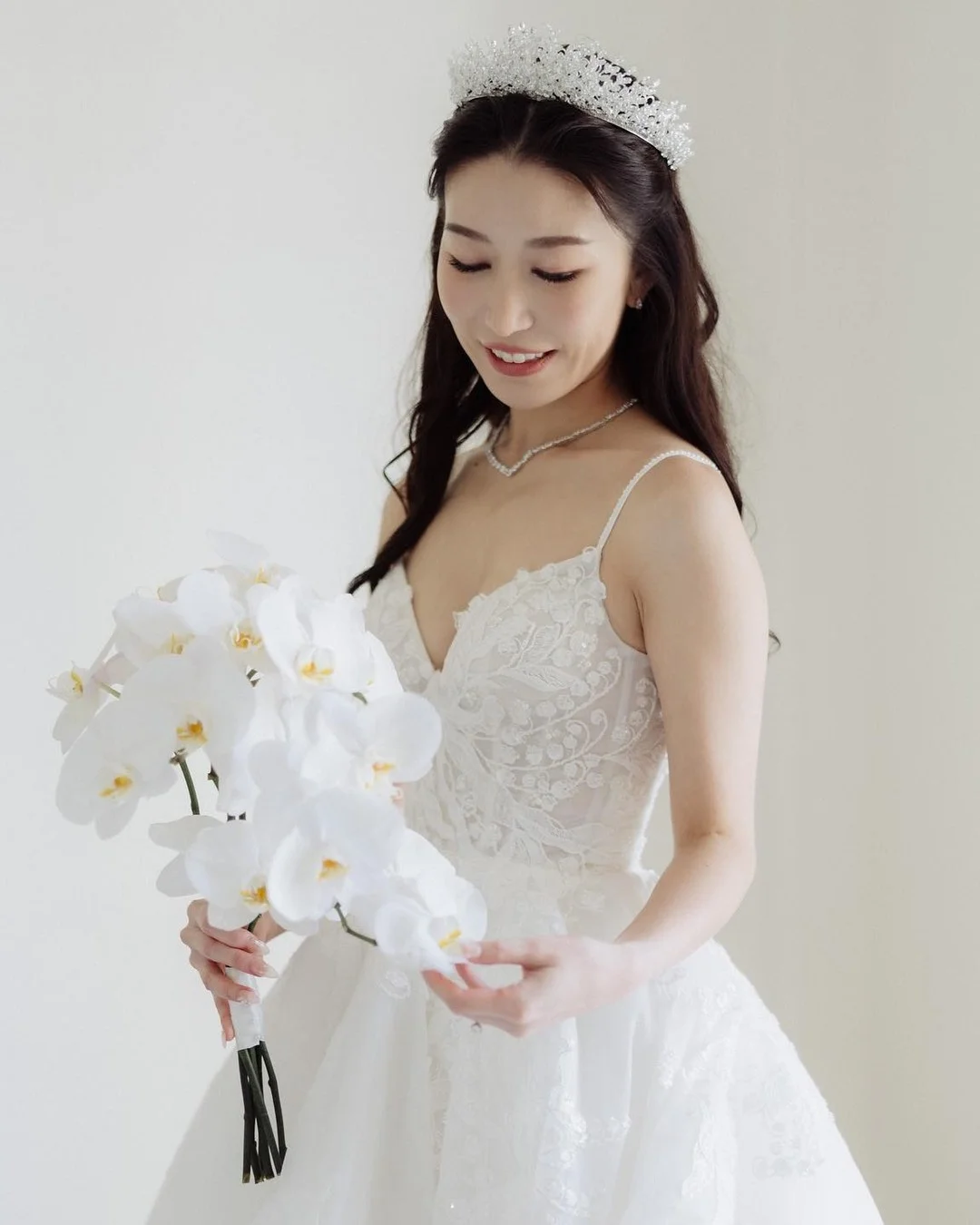
Brides Of Beecroft | Design @lapremierebridalofficial
Which wedding dress 'white' should I choose?
Assuming you want to wear a white wedding dress there are various 'white' tones from which to select. Names vary slightly, but popular white tones include pure white, silk white, natural white and ivory, and experts suggest choosing the one that best suits your complexion. For most skin tones ivory is considered almost universally flattering, and Maria suggests, “Silk white is a safe colour for all skin types whereas white can wash a fair person out”.
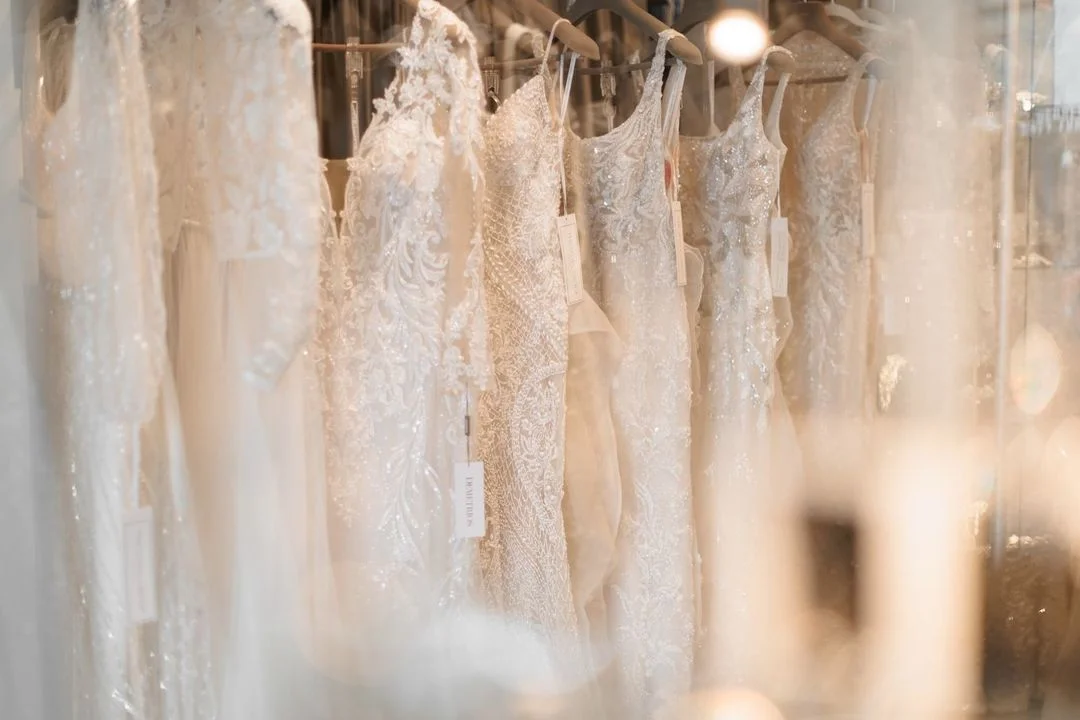
Do I need to wear a white wedding dress?
Essentially, there are no rules regarding the colour of a wedding dress. In fact, in some cultures red wedding dresses are considered most auspicious. So, the colour of your wedding gown should be entirely personal.
Most couturiers will happily tailor their designs in whatever colour you desire, and a small number include coloured wedding dress options, or coloured detailing, amongst their ready-to-wear collections.
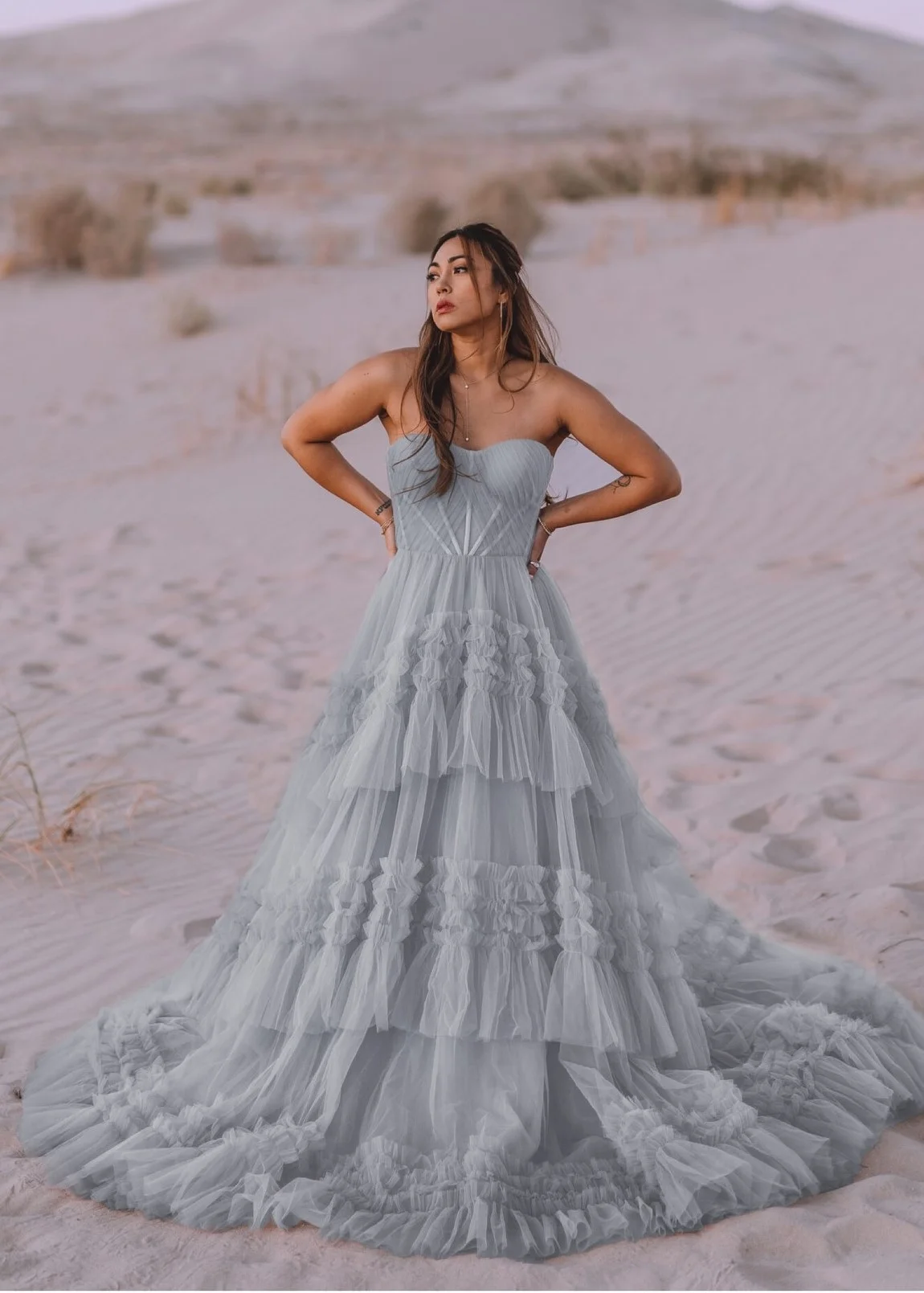
Etre Marie Bridal Boutique | Design @allwhowander | Style Sutton
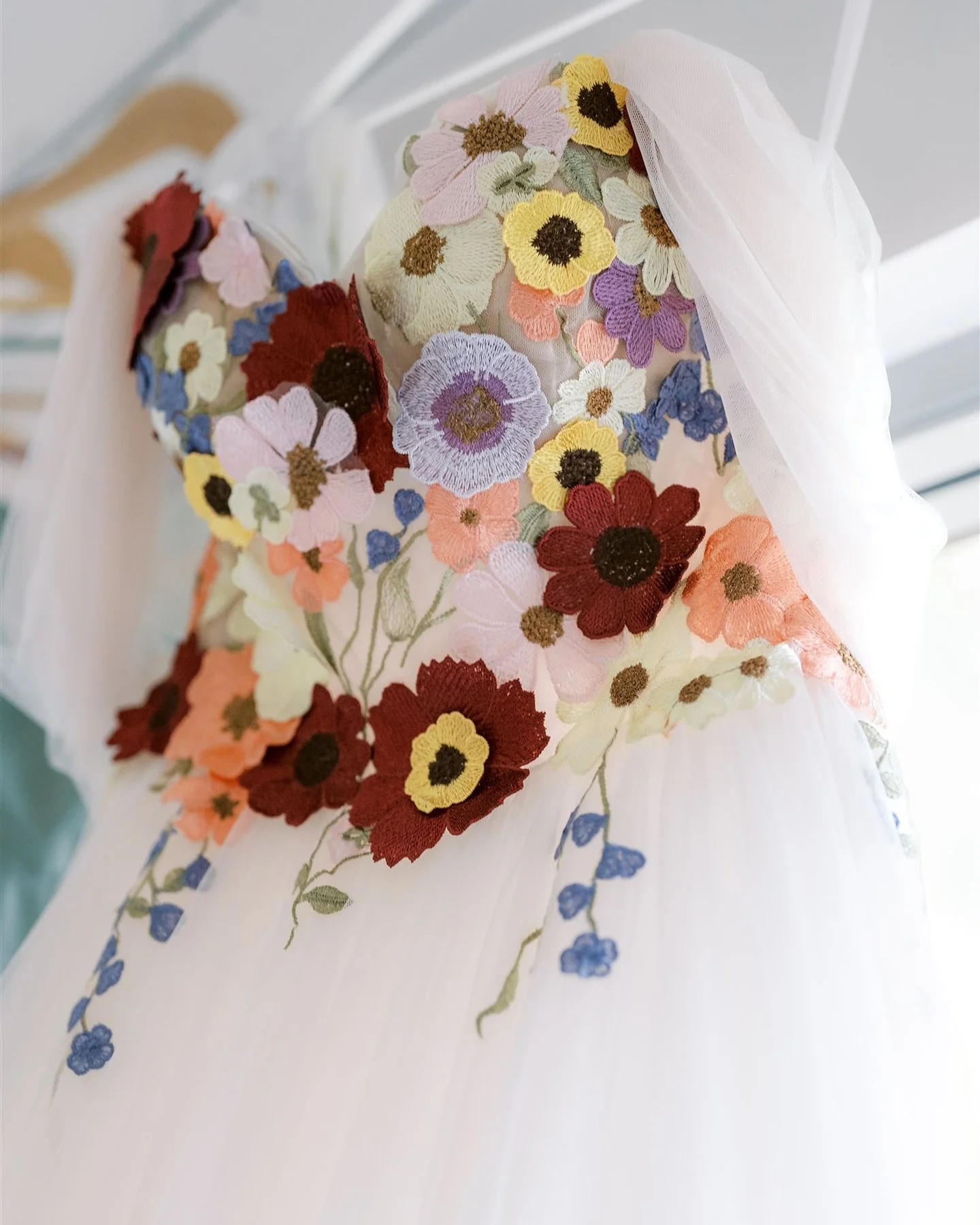
English Rose Bridal | @kirstylottering | Design Madeleine Eve Couture | Style De La Renta
Etre Marie Bridal Boutique | Design @allwhowander | Style Saylor
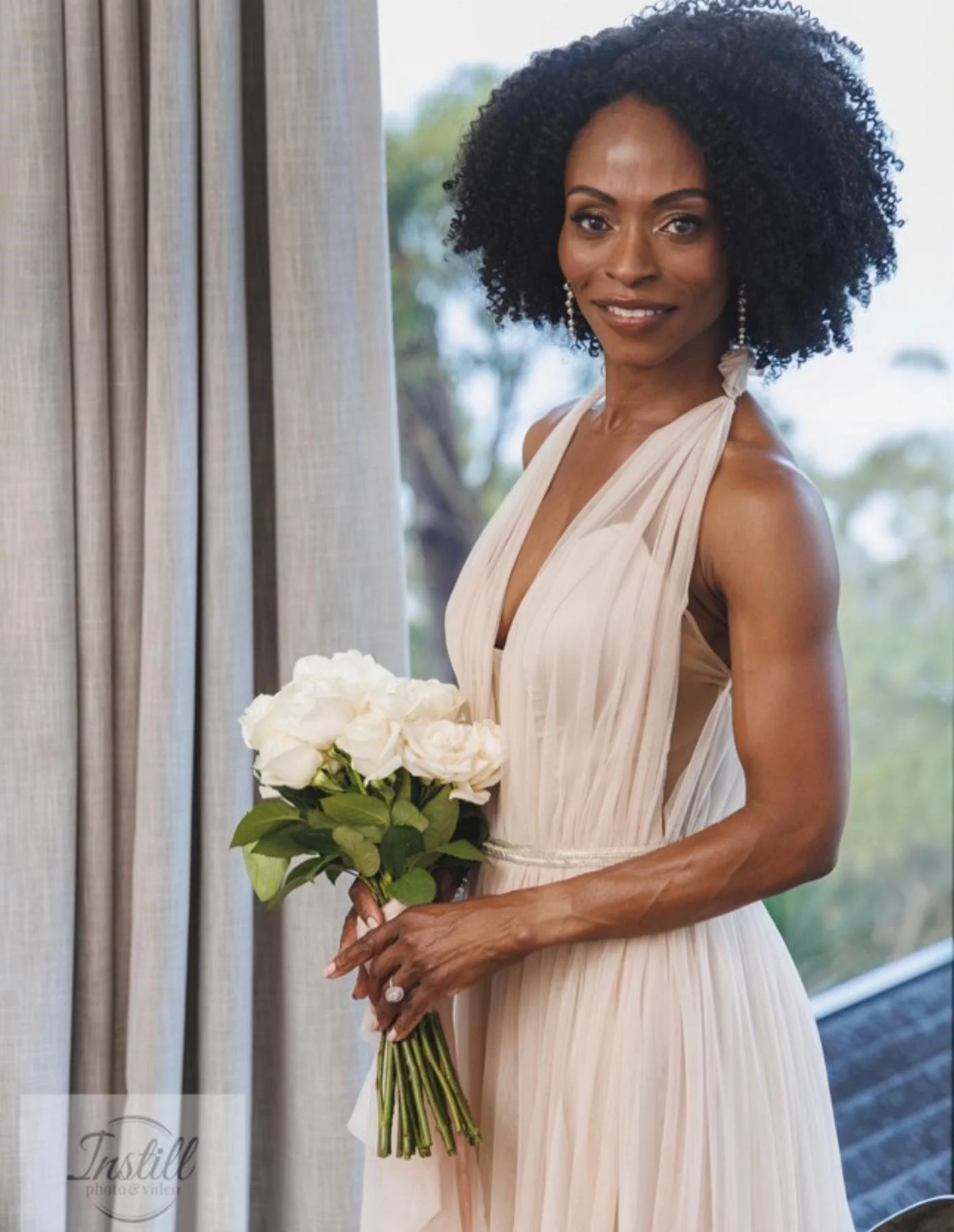
Emoda Couture | @instill_photography
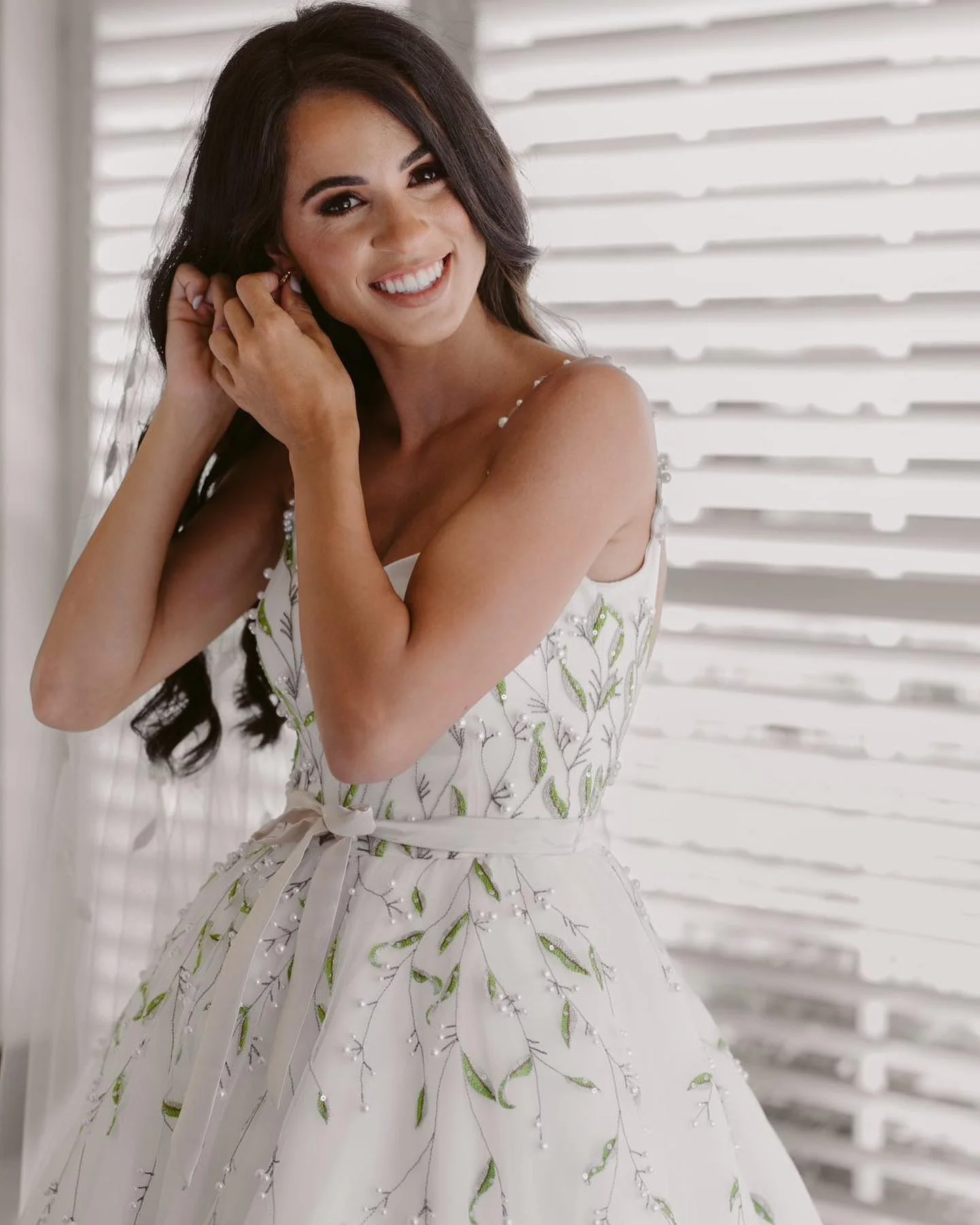
Emoda Couture | @hilarycamphotography
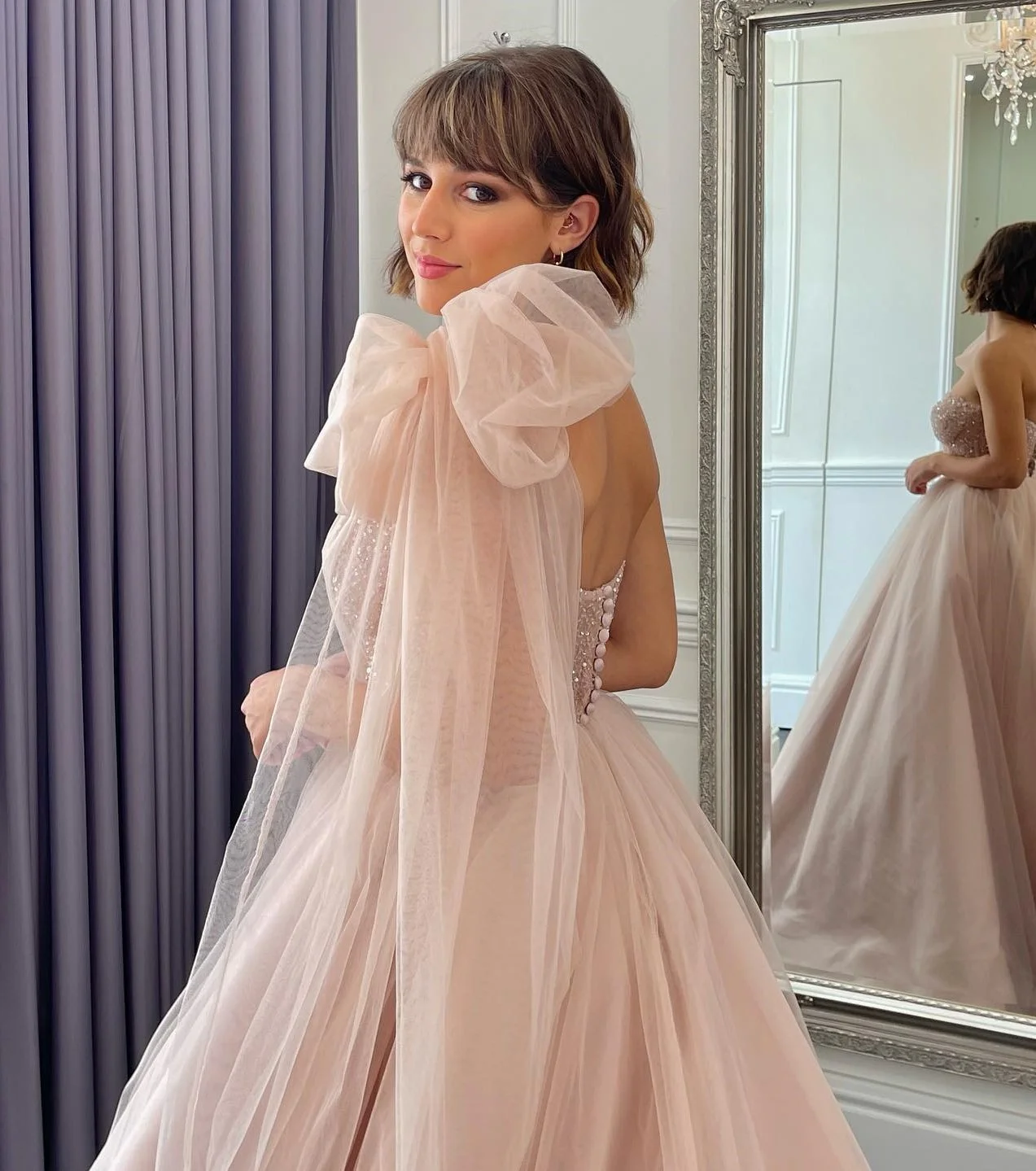
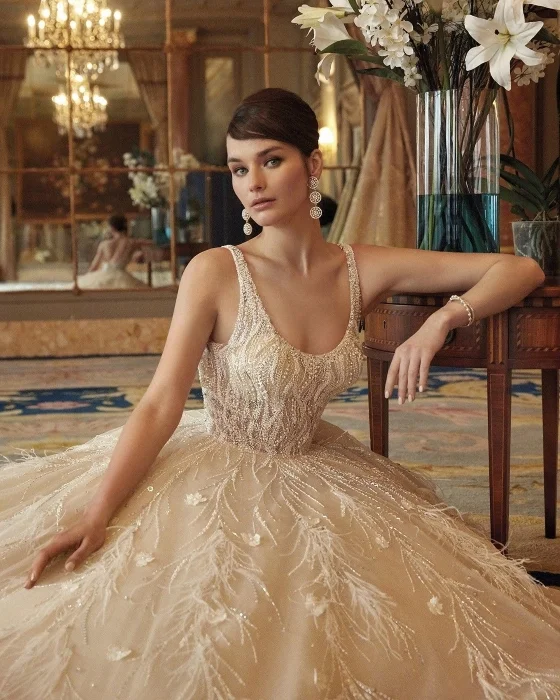
Multiple wedding gowns
In cultures that traditionally celebrate with multi-day weddings, different outfits are typically worn to each element of the festivities and, more recently, we’re seeing this wedding trend embraced at Western weddings, with many brides opting for different dresses for the ceremony and reception.
Certainly, the idea of a more traditional gown for the ceremony and a more practical party dress — usually designed with mingling and dancing in mind — for the reception, makes perfect sense, so you may want to allow for this in your wedding dress shopping and budgeting.
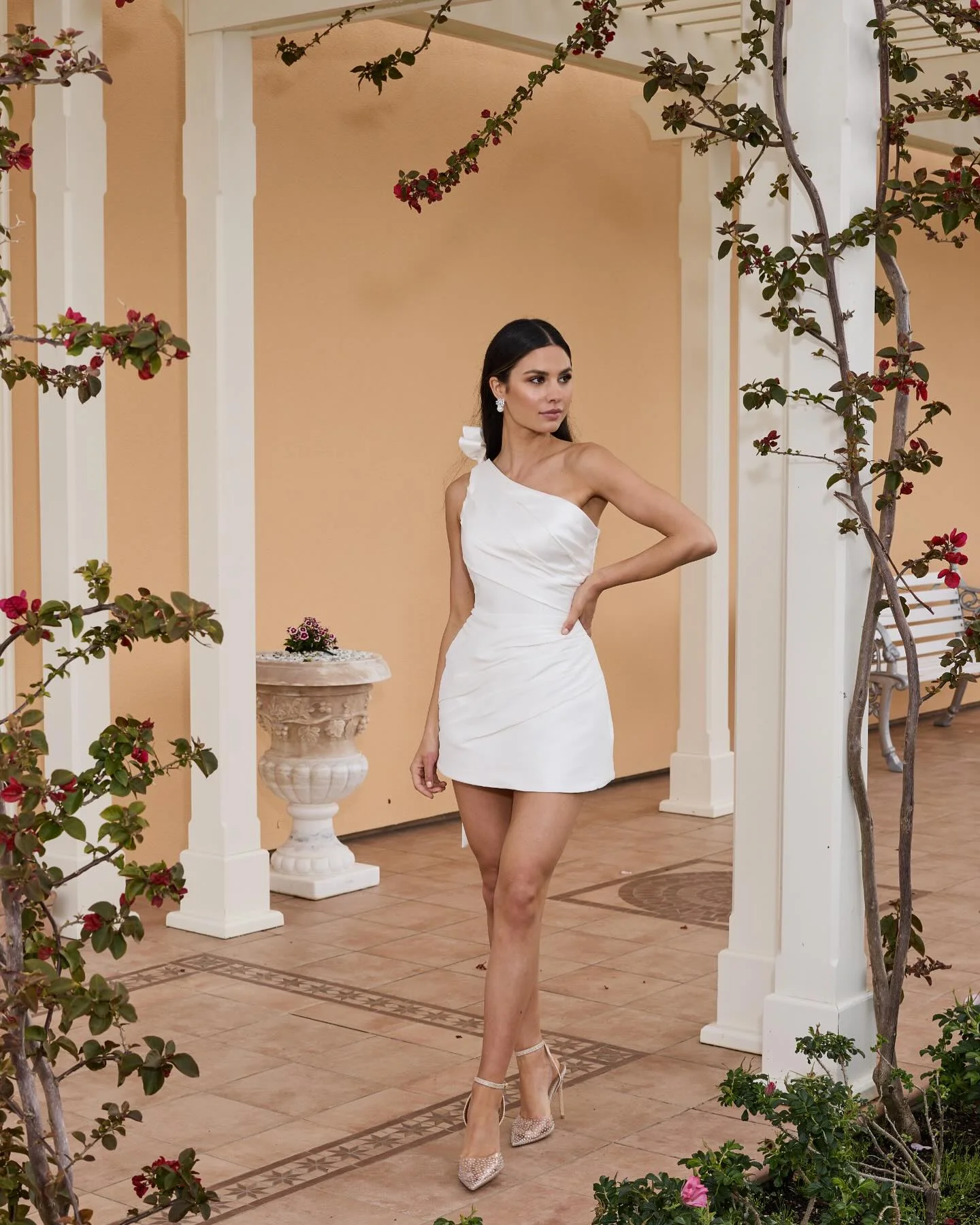
Etre Marie Bridal Boutique | Design @trishpeng
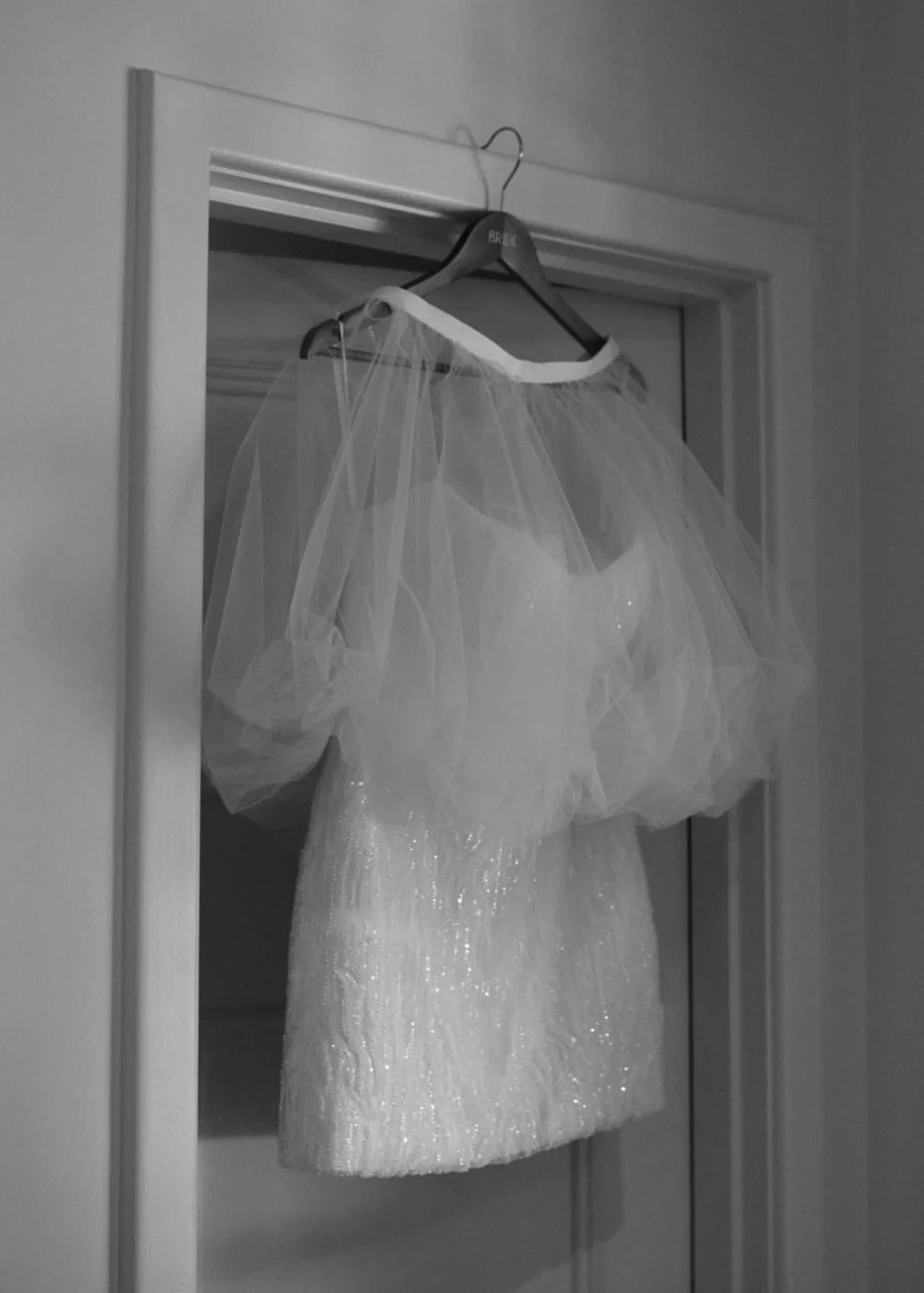
Alexis George Couture | @mitchaphotography
Convertible wedding dress styles
In line with the increasing popularity of the wedding day wardrobe change, designers are also seeing growing demand for convertible dress styles.
“Some brides chose to create an overskirt with a mini underneath, so they can take it off and dance more freely,” Maria explains.
At ABIA, we’re also seeing removable sleeves, capes, wings and skirt layers incorporated into adaptable wedding dress designs.
Of course, modifiable dress styles aren’t entirely new. Wedding dresses with trains have proven a challenge for brides throughout history, and the likes of bustles, clever fastening arrangements and arm straps have been tested by time.
“Long trains are fabulous but have a clear plan what you will do with it when you’ve had enough of dragging it around,” George highlights.
Whether due to practical necessity or aesthetic desire, if the idea of a changeable wedding dress appeals, chat to your dress maker about options early, so that they can plan for it within the overall design.
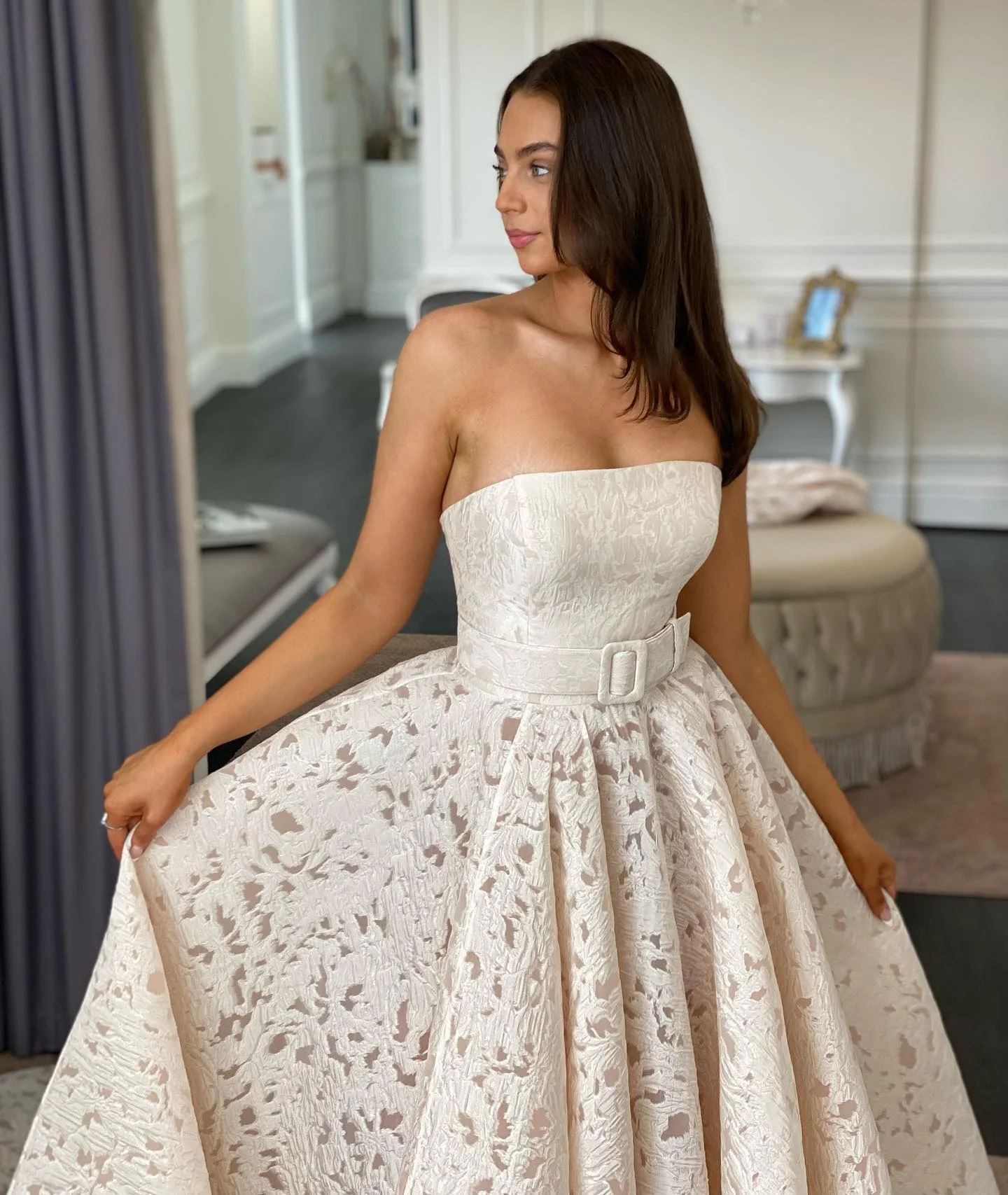
Emoda Couture | Style Estelle sleeveless
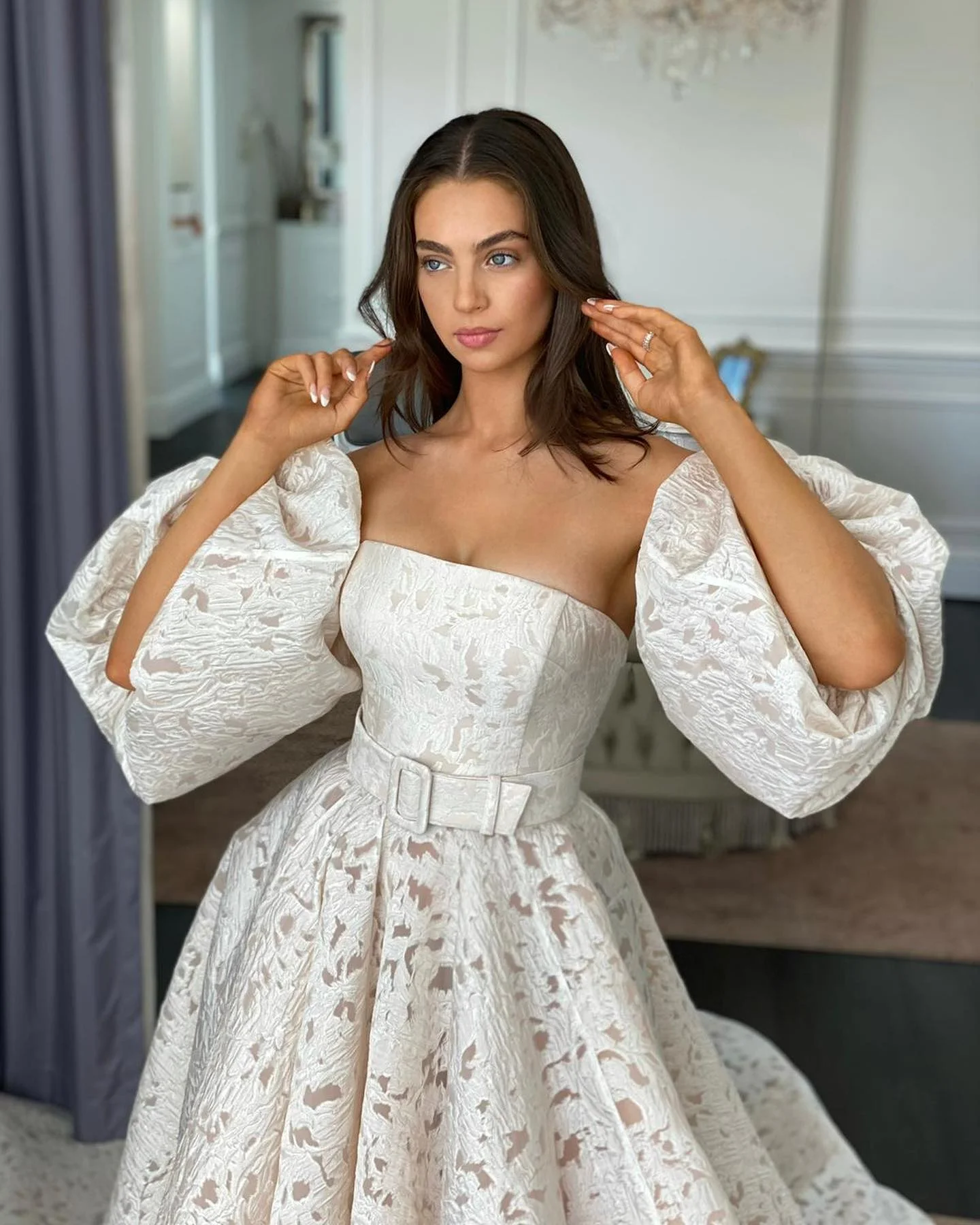
Emoda Couture | Style Estelle with removable sleeves
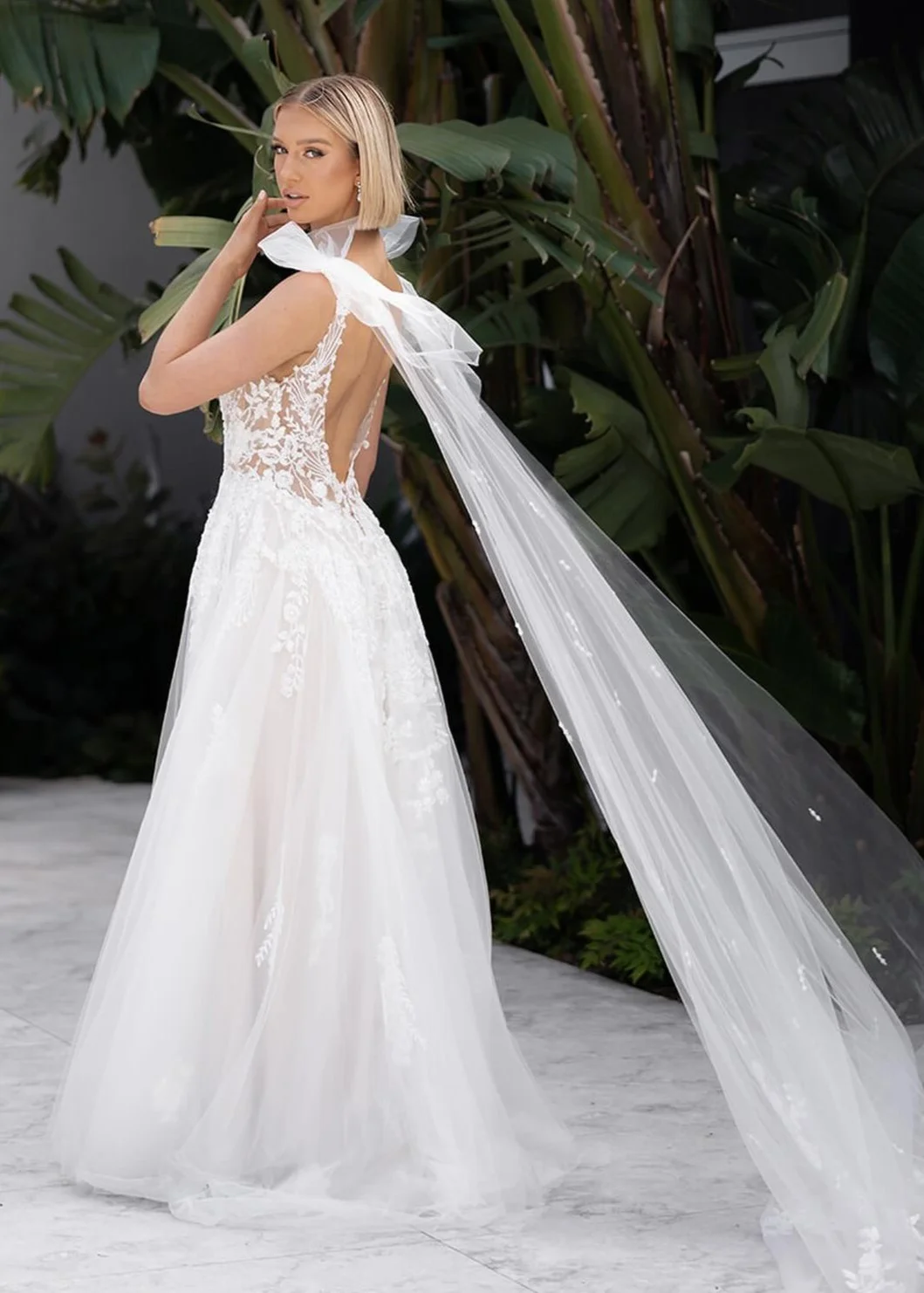
Belle et Blanc | Style Magnolia with removable wings
Wedding dress alternatives
While typically bridal wedding attire focusses on the concept of a wedding gown or dress, there are few rules about what a bride needs to wear. Two-piece, skirt-and-top combos are becoming more prevalent and pantsuits offer another stylish wedding dress alternative.
Essentially, provided you consider the likes of venue dress codes and religious guidelines, you can probably wear anything from a bikini to a onesie!
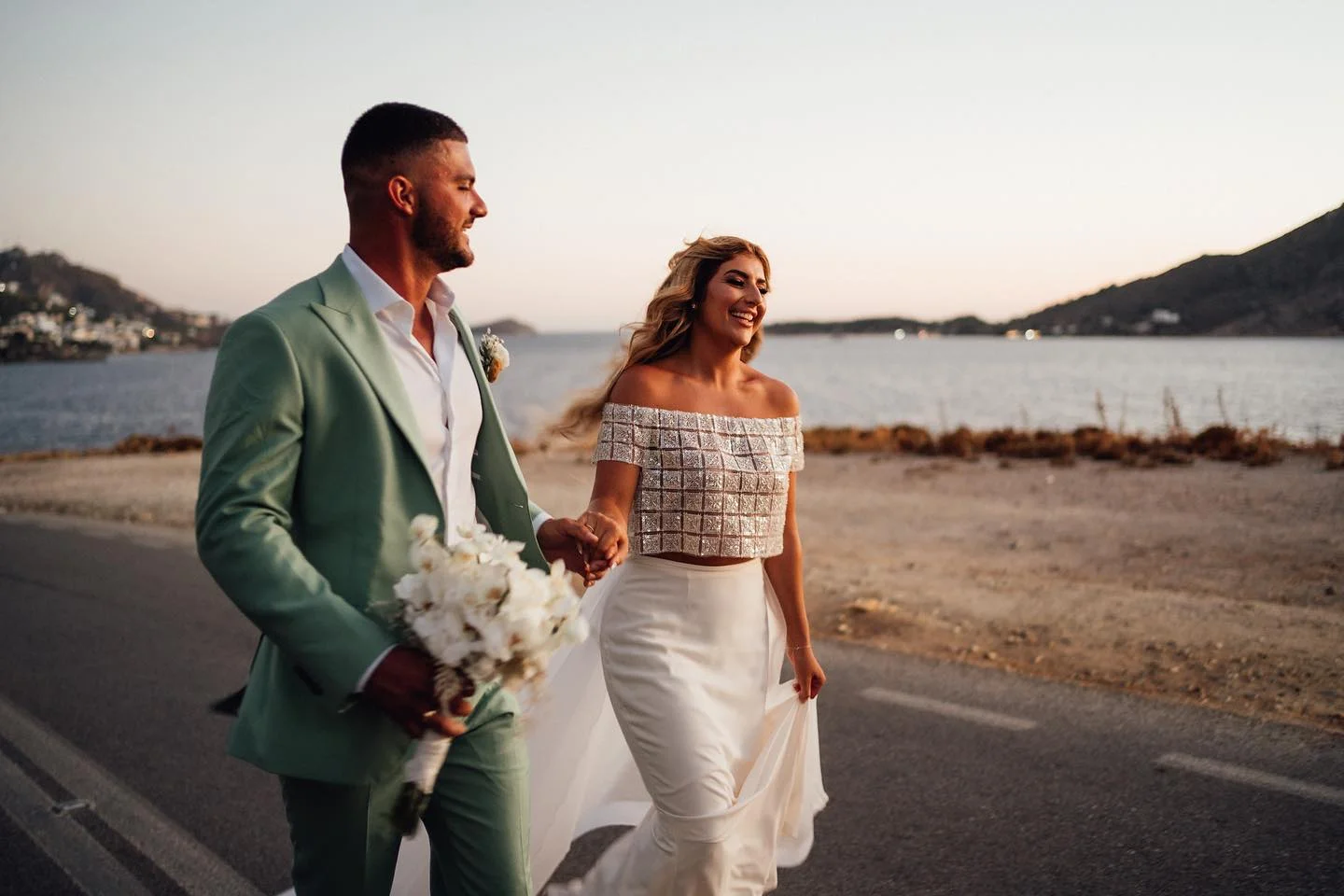
Alexis George Couture | @lifesketchweddings
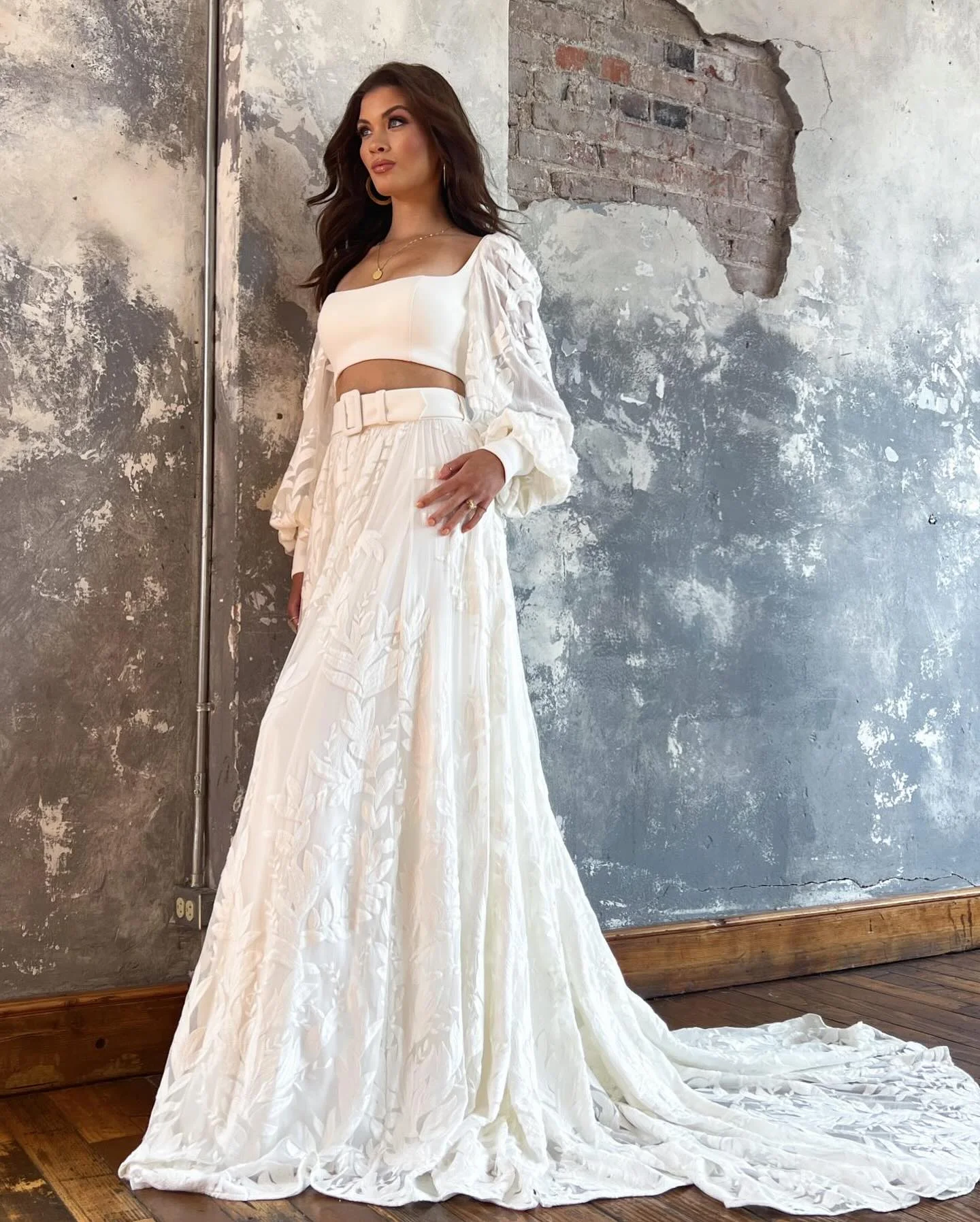
Etre Marie Bridal Boutique | Design @allwhowander | Style West
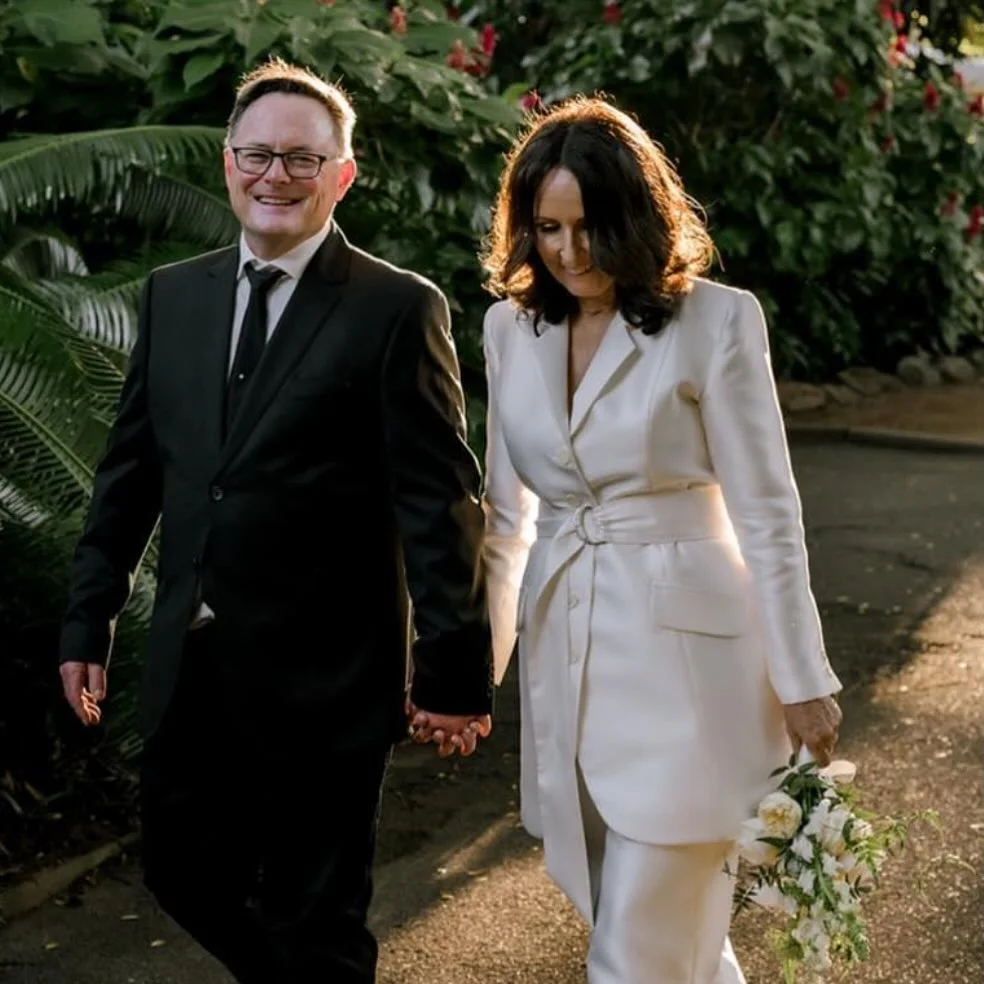
Wedding dress finishing touches
Bridal accessories
While your wedding dress will be the ultimate showpiece, you’ll need shoes to go with it and may choose to complete your look with bridal accessories, such as a veil, hairpiece, gloves, jewellery or other statement pieces.
Factor such extras into the overall look you wish to achieve, and consider the likes of heel height, veil length and patterning to achieve a style that’s practical and cohesive.
If you know you want to wear a certain heirloom accessory — such as your mother’s wedding veil or grandmother’s earrings — or have already purchased your dream shoes, mention this to your dress designer early, so that they can tailor the design accordingly.
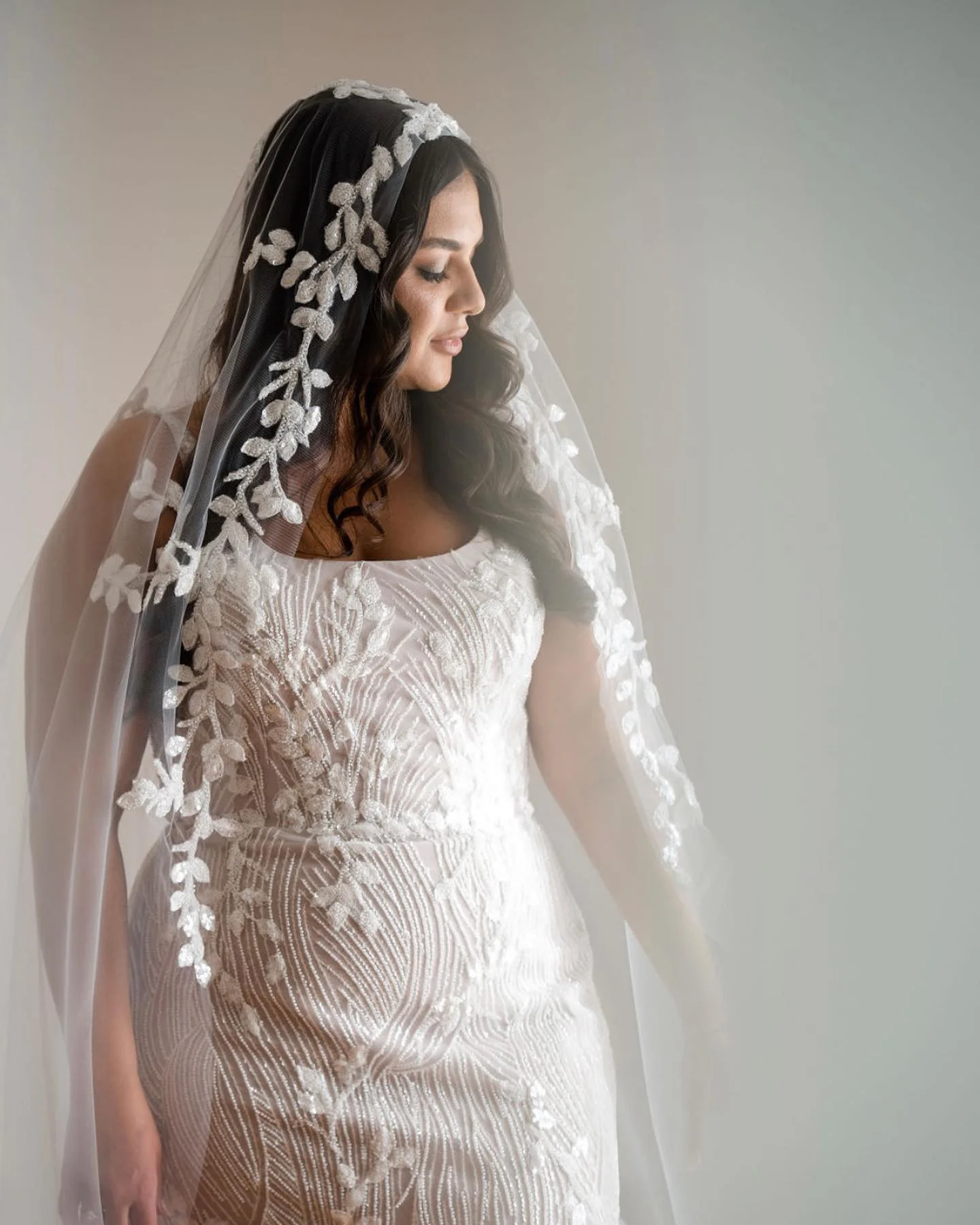
Emoda Couture | @anemotionweddings
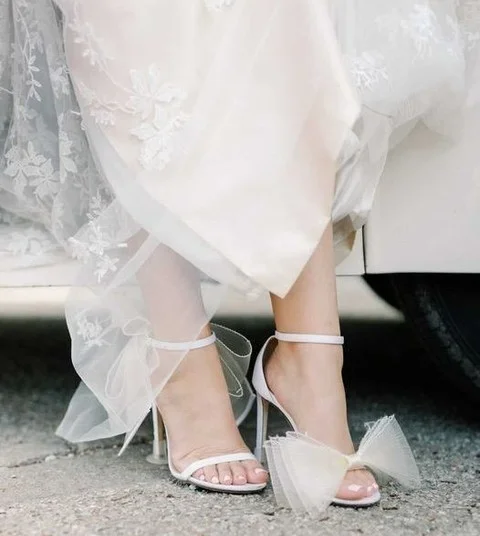
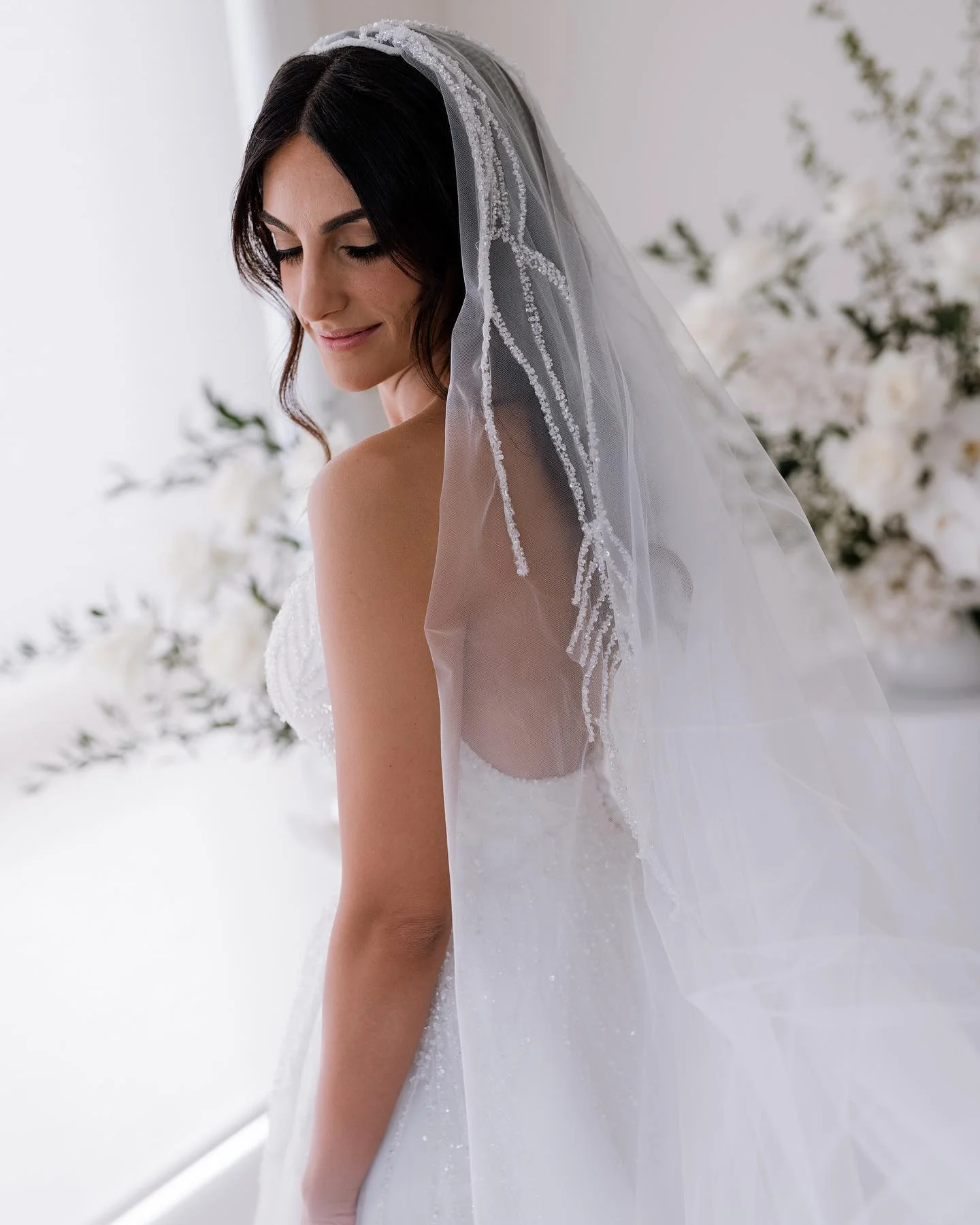
Emoda Couture | @tone_image
Wedding dress personalisation
For most brides a wedding dress is an emotional investment, and one final flourish may elevate your gown from special to truly sentimental.
“We often incorporate sentimental pieces from a bride’s mother’s gown,” Maria suggests.
“We also love to add personal touches, like sewing a mother’s or grandmother’s ring into the lining of the dress or embroidering dates or initials onto the edge of the veil,” George adds.
So, consider any personal or heirloom elements you’d like to highlight, and work with your dressmaker to have them included.
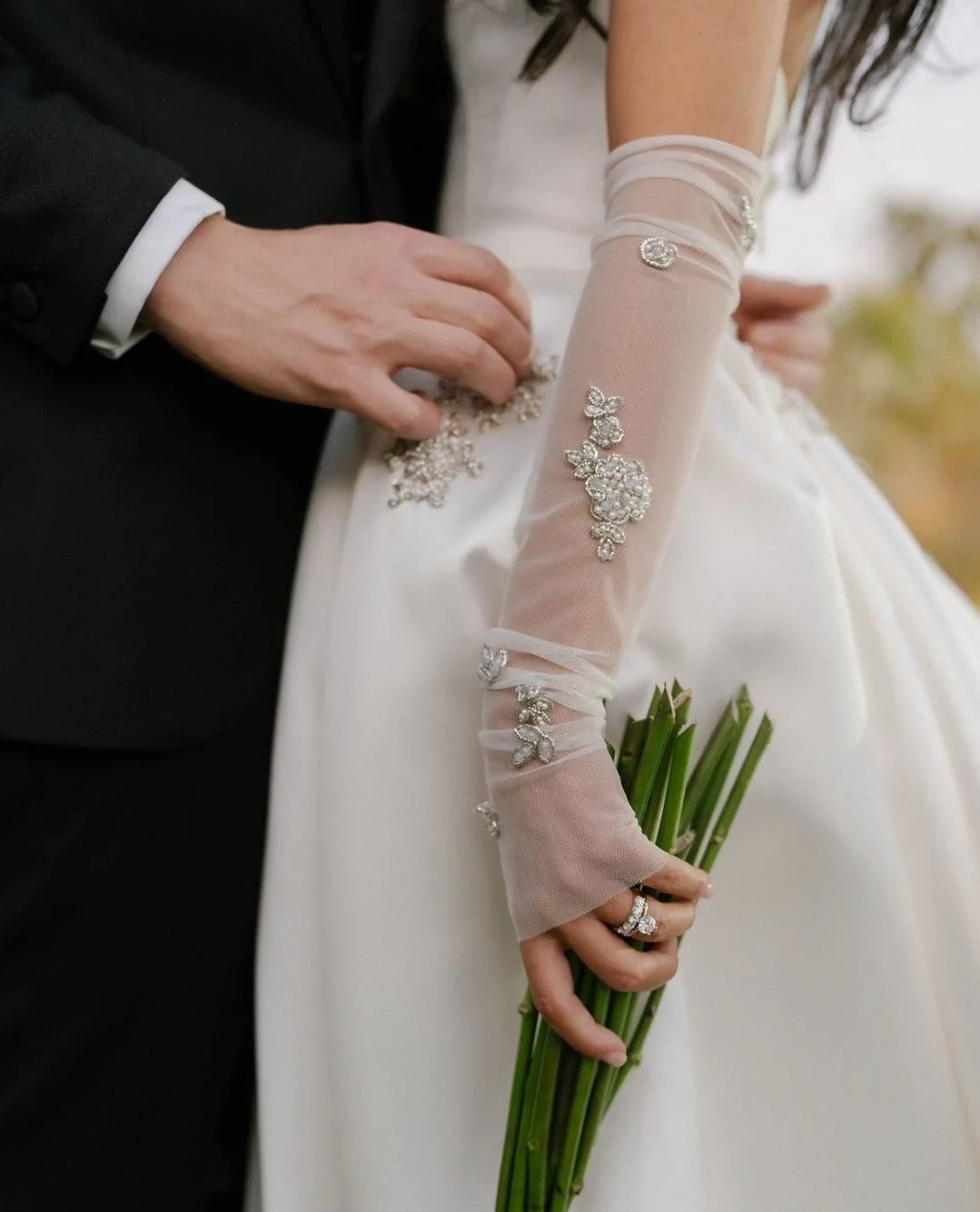
Whether you've just begun your wedding planning, or are right in the thick of it, the ABIA website can make the task easier. We've got information on all you'll need to know, from the ultimate guide to wedding flowers to the lowdown on wedding dress codes, and you can search the ABIA Directory to find wedding vendors from all over Australia — think wedding venues, celebrants, photographers, caterers, decorators, planners and coordinators, transport providers, hair stylists, make-up artists, videographers, cake designers, live music and even dance teachers and photo booth hire. Each listed vendor is rated and recommended by newly-wed couples, who used the service for their own wedding, so it's 'word of mouth' at its finest. ABIA's website is also filled with the latest wedding inspiration and ideas, from sustainable wedding suggestions to destination wedding venues, multi-day wedding planning and the most amazing romantic getaways and honeymoon destinations in Australia, so there's something for every couple, including an online wedding registry that lets you ask guests to contribute to a chosen holiday or experience in place of a traditional wedding gift.




